Senior Associate Vice President for Research & Innovation
Dr. Omonike Olaleye
Omonike Arike Olaleye, Ph.D. MPH. is a Professor of Pharmacology, and Senior Associate Vice President for Research & Innovation at Texas Southern University (TSU). Her formal training in pharmacology and epidemiology, were at Johns Hopkins University School of Medicine and Harvard University respectively. Omonike has a strong background and expertise in pharmacology and epidemiology research spanning over 20 years, working on research programs focused on diseases that disproportionately affect underrepresented minorities and/or underserved populations. By the grace of God, through her leadership, TSU maintained and was reaffirmed High Research Activity “R2” status by the Carnegie Classification on January 26, 2022.
Recently, Omonike’s Infectious Diseases Drug Discovery laboratory at TSU discovered and characterized potent clinically approved drugs that are being repurposed for prophylactic and treatment purposes in the fight against COVID-19. Rapid optimization and clinical advancement of these drugs are underway to potentially accelerate antiviral therapy against COVID-19. Presently, she leads the $8.63M NIH-funded Center for Biomedical and Minority Health Research (CBMHR) https://www.nimhd.nih.gov/news-events/features/training-workforce-dev/olaleye.html ; and the Educational, Training and Outreach Programs for the $5.1M CPRIT funded Gulf Coast Consortium Center for Comprehensive Pharmacokinetic/Pharmacodynamic and Formulation https://www.gcc-ccpf.com/about/. In addition, through her leadership, TSU’s research experienced tremendous growth including the development of several advanced core research & development facilities, state-of the art instrumentation and equipment, increased grant and contracts funding, strengthened collaborations/partnerships between TSU faculty, staff, students and investigators at the TMC, community, industry and other research-intensive institutions.
Omonike is passionate about mentoring the next generation of scientists. She led the successful implementation of a structured and collaborative faculty-peer mentoring program entitled: The Collaborative TSU Experience and Academic Mentoring in RCMI (TEAMRCMI). This novel collaborative program majorly targets URMs and has already begun to impact our faculty and research scientists as evidenced by increased grant applications, funded grants, peer-reviewed publications, and enhancement of research projects focused on health disparities and minority health. Omonike has published papers/abstracts with up to 125 MCH trainees/interns/fellows. Some of these students have received admission to schools of medicine, pharmacy, public health, residencies and internships at national laboratories, National Institute of Health-UTEP BUILDing Scholars, and the Federal Title V MCH programs. In addition, two of her MCH students served as Federal Ambassadors for the MCH Pipeline program in the US. Furthermore, Omonike serves on the advisory council of the Baylor College of Medicine Center of Excellence-Health Equity, Training and Research. Previously as Interim/Assistant Dean of Student Services at TSU, Omonike had administrative oversight of the Office for Student Services in COPHS serving over 1,490 racially, ethnically and culturally diverse students. Altogether, she has several years of experience working with promising diverse students/professionals; having mentored over 100 individuals, who have progressed successfully in their academics and/or professional career.
8
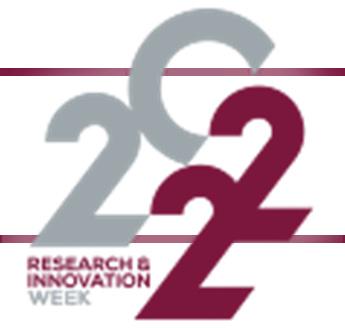
Honorable Albert H. Myres, Chairman
Honorable Pamela A. Medina, 2nd Vice Chair
Honorable Caroline Baker Hurley
Honorable Ron J. Price
Honorable Mary Evans Sias
Board of Regents
Honorable Marc C. Carter, Vice Chair
Honorable James M. Benham, Secretary
Honorable Stephanie D. Nellons-Paige
Honorable Marilyn A. Rose
Honorable Aaliyah M. Fleming, Student Regent
Officers of Administration
Dr. Lesia L. Crumpton-Young, President
Dr. Dakota Doman, Chief of Staff
Dr. Lillian Poats, Acting Provost/Senior Vice President for Academic Affairs
Dr. Michelle Penn-Marshall, Vice President for Research and Innovation
Melinda Spaulding, Vice President for Communications and Advancement
Hao Le, General Counsel and Acting Vice President for Administration
Kia Harper, Executive Director of Presidential Initiatives and Projects
Chyenne Hamilton-Powell, Executive Office Administrator
Krystina D. Reed, Division Business Administrator
Officers of Academic Administration
Dr. Dwalah Brown-Fisher, Interim Associate Provost/Assoc. Vice President for Academic & Faculty Affairs
Dr. Omonike Arike Olaleye, Senior Associate Vice President for Research & Innovation
Dr. Derrick Manns, Executive Director, Curriculum & Graduation Initiatives
Dr. Carlton Perkins, Faculty Ombudsperson
Ms. Haiying Li, Executive Director of Library Services
Dr. Melanie Lawson, Executive Director of the Office of Continuing Education
Remi Ademola, Director of Center for Online Education and Instructional Teaching
Deans of Colleges and Schools
Dr. Joan R.M. Bullock, Dean, Thurgood Marshall School of Law
Dr. Bernnell Peltier-Glaze, Interim Dean, College of Education
Dr. Needha-Boutte Queen, Dean, College of Liberal Arts & Behavioral Sciences
Dr. Rashid Mosavin, Dean, College of Pharmacy & Health Sciences
Dr. David Yen, Dean, Jesse H. Jones School of Business
Dr. Rockell Brown-Burton, Interim Dean, School of Communication
Dr. George Kieh, Dean, Barbara Jordan-Mickey Leland School of Public Affairs
Dr. Gregory H. Maddox, Dean, The Graduate School
Dr. Dianne Jemison-Pollard, Dean, Thomas F. Freeman Honors College
9

University Research Coordinators
Dr. Linda M. Gardiner, Chair (Research & Innovation)
Dr. Daniel Vrinceanu (College of Science Engineering and Technology)
Nancy Shepherd (College of Liberal Arts and Behavioral Sciences)
Rochelle Parks-Yancy (Jesse H. Jones School of Business)
Dong Liang (College of Pharmacy and Health Sciences)
Ahunanya Aga (Thurgood Marshall School of Law)
Jasmine Drake (School of Public Affairs)
Tyrone Dixon (School of Communications)
Yoruba Mutakabbir (College of Education)
Dianne Jemison Pollard (Honors College)
Faculty Development Committee
Dr. Ladelle Hyman, Chair (School of Business)
Dr. Leamon Green (College of Liberal Arts and Behavioral Sciences)
Dr. Victor Obot (College of Science Engineering and Technology)
Intellectual Property Committee
Dr. Dong Liang, Chair (College of Pharmacy Health Sciences)
Ms. Elsa Ransom
Mr. Hao Le (General Counsel)
Dr. Viveca Grant (College of Education)
Dr. Huan Xie (College of Pharmacy Health Sciences)
Dr. Cyril Abobo (College of Pharmacy Health Sciences)
Dr. Yi Qi (College of Science Engineering and Technology)
Dr. Andrea Shelton (College pf Pharmacy Health Sciences)
Dr. Oscar Criner (College of Science Engineering and Technology)
Dr. Xin (Jacob) Wei (College of Science Engineering and Technology)
Dr. Ponmille Olonilua (Barbara Jordan-Mickey Leland School of Public Affairs)
Dr. Alamelu Sundaresan (College of Science Engineering and Technology)



10
Ernest S. Sterling Student Life Center

Research Compliance Committees
Institutional Research Board (IRB)
Dr. Marion Smith, Chair
Dr. Cary Wintz
Dr. Nicole Willis
Dr. Candy Ratliff
Dr. Eartha Nance
Dr. Veronica Ajewole
Dr. Cyril Abobo
Dr. Arlene Gordon-Hollingsworth
Dr. Grace Loudd
Dr. Ashraf Mozayani
Dr. Gautam Nayer
Dr. Anastasia Anderson
Dr. Needha Boutte-Queen
Dr. Jasmine Drake
Dr. Audrey Player
Institutional Animal Care and Use Committee (IACUC)
Dr. Zivar Yousefipour, Chair
Dr. Thomas Gomez, Attending Veterinarian
Dr. Momoh Yakubu
Ms. Diane Nicholson-Jones Dr. Alamelu (Lalita) Sundaresan
Dr. Song Gao
Dr. Omar Ayah
IBC (Institutional Biological & Chemical Safety Committee)
Ms. Mellany Patrong
Mr. James Byars
Dr. Tuan Phan
Dr. Ashraf Mozayani
Dr. Bai Li
Ms. Mellany Patrong
Mr. Darnell Johnson
Dr. Dominique Thomas
Dr. Mario Holloman
Dr. Daryl Wilkerson, Chair
Radiation Safety Committee
Dr. Ya-Fatou Njie-Mbye, Chair
Mr. Darnell Johnson, III
Ms. Tinnille Leak-Johnson
Dr. Hyun-Min Hwang
Dr. Chelliah Selvam
Dr. Daryl Wilkerson
Dr. Mark Harvey
Dr. Maurice Odine



11
Thurgood Marshall School of Law

CPRIT GCC Center for Comprehensive PK/PD & Formulation (CCPF)
Director: Dr. Dong Liang, Principal Investigator
Date Established: 09/2018
Phone: 713-313-1986
Internal and/or external interdisciplinary collaboration for FY 2020 and FY 2021
• Dr. Shiaw-Yih Lin, MD Anderson Cancer Center
• “Metabolism of R14 in human liver microsomes and recombinant CYPs”
° Identify CYP isoforms mediating R14 oxidation
° Determine R14 CYP3A4 stability using recombination human CYP3A4
° Determine R14 enzyme stability using human liver microsomes
• Steve R. Igo, Houston Methodist DeBakey Heart & Vascular Center
° Tissue sample preparation
° Tissue sample preparation
° 32 Samples of Remodulin Plasma and Cardiac Tissue
° Bioanalysis: drug quantitation in plasma and tissue
Center Description
Website: https://www.gcc-ccpf.com
Preclinical drug development usually takes several years from the identification of a new chemical entity (NCE) to advance to clinical testing. Most of these pharmacokinetics (PK)/pharmacodynamics (PD) and formulation evaluations are required for Investigational New Drug (IND) applications. Two aspects are generally involved for an NCE at this stage: 1) in vitro PK characterizations (physiochemical properties, metabolism, stability, and cellular and gastrointestinal permeability); and 2) in vivo PK and PD evaluations in animal models. In addition, most NCEs are either unstable or unsuitable for conventional routes of drug administration. Thus, developing an optimal dosage formulation is critical for further NCE candidate development.
Gulf Coast Consortia (GCC) Center for Comprehensive PK/PD & Formulation (CCPF), funded by Cancer Prevention & Research Institute of Texas (CPRIT) in 2018 with $5.1M., is a state-of-the-art drug development core facility with experienced faculty from Texas Southern University College of Pharmacy and Health Science (TSU COPHS), University of Houston College of Pharmacy (UHCOP), and the GCC for Quantitative Biomedical Science. Our primary focus is on preclinical drug development to facilitate rapid advancement of novel cancer drug candidates to clinical trials. We are proud to provide critically needed PK/PD and formulation services to streamline drug development of potential anti-cancer drug candidates identified in existing drug discovery cores, individual labs, and small companies throughout Texas.
Center of Excellence for Housing and Community Development Research (CEHCDR)
Director: Dr. Jeffrey S. Lowe
Date Established: 09/ 2021
Office Phone: 713-313-7304
Internal and/or external interdisciplinary collaboration for FY 2020 and FY 2021
Fax Phone: 713-313-4889
• Internal: Barbara Jourdan-Mickey Leland School of Public Affairs; Thurgood Marshall School of Law
• External: Alabama A&M University; University of Texas at Austin
Center Description
CEHCDR advances research and debate on affordable housing and community development policy for racial equity benefiting lowincome communities of color in the six major Texas cities: Austin, Dallas, El Paso, Fort Worth, Houston, and San Antonio. Investigators assume research projects under the following two thematic and interconnected areas: 1) individual and community wealth building and housing security and stability; and 3) planning and infrastructure inequity affecting underserved communities.
TSU is the only HBCU with both an accredited professional urban planning program (in the Barbara Jordan-Mickey Leland School of Public Affairs) and an accredited (Thurgood Marshall) School of Law. As a joint center of the two schools, CEHCDR aims to expand the ability to conduct academic and empirical research in housing and community development at TSU. As a US Department
12

of Housing and Urban Development Center of Excellence (one of two at an HBCU), CEHCDR intends to become a destination point for supporting the innovative research projects of seasoned and emerging scholars within and outside of TSU that help foster collaboration and stimulate policy debate. In partnership with Alabama A&M University's Department of Community and Regional Planning (the only HBCU with an accredited undergraduate planning program), and the University of Texas at Austin’s Department of Community and Regional Planning Department and Law School, CEHCDR investigators conduct research with assistance from graduate and undergraduate students and, thereby, extend the pipeline for conveying future housing and community development researchers and scholars of color.
Center for Justice Research
Director: Dr. Howard Henderson
Date Established: 01/2018 Website: www.tsu.edu/justiceresearch Office Phone: 713-313-6843
Internal and/or external interdisciplinary collaboration for FY 2020 and FY 2021
• Brookings Institution
• Florida State University
• Baylor College of Medicine
Center Description
American Enterprise Institute
Claremont Graduate School
Stetson University
Founded in January 2018, the Center for Justice Research is devoted to achieving data-driven solutions to create a more equitable criminal justice system. The Center for Justice Research provides a culturally responsive research approach to mass incarceration and criminal justice reform efforts and not mandates.
The Center’s researchers come from diverse backgrounds infrequently given a platform and adequate space in criminal justice reform. By creating a collective of scholars from various underrepresented communities, the Center for Justice Research consistently produces innovative solutions to complex failures throughout the U.S. policing and criminal justice systems. CJR’s pipeline of students to researchers and scholars ensures the next generation of criminal justice reform will continue to evolve with culturally sensitive solutions and policy proposals.
The Center for Justice Research is located on the campus of the historically black university Texas Southern University. Being in the heart of Houston, TX, which is the home to the third-largest criminal justice system, allows us to see the effects of our work on our community. Much of CJR’s work goes into practice with policymakers throughout the local, state, and national criminal justice systems. However, thanks to their established working relationships with national media outlets, CJR’s work is disseminated across all corners of the world. The work of the Center for Justice Research’s work is made available to policymakers, police leaders, reporters, and any stakeholder seeking data-orientated, evidence-based solutions and input.
High Performance Computing Center
Director: Dr. Daniel Vrinceanu
Date Established: 03/2009
Website: http://coset.tsu.edu/hpcc Office Phone: 713-313-4482
Internal and/or external interdisciplinary collaboration for FY 2020 and FY 2021
• Quantum chemistry Dr. Prince (Chemistry) Bioinformatics Dr. Miranda (Biology)
• Data science Dr. Ghemri (Computer Science) Environmental toxicology (Dr. Shishodia)
• Pharmacy (Dr. Olaleye)
13

Center Description
The Texas Southern University High Performance Computing Center (TSU-HPCC) promotes research and teaching by integrating leading edge, high-performance computing and visualization for the faculty, staff, and students of Texas Southern University, as well as advance disciplinary diversity, partnerships, and excellence. Additionally, our secondary mission is to partner with and promote research at underrepresented Universities across the state of Texas. The HPCC will facilitate research and aid in educational advancement by integrating leading edge, high-performance computing and visualization to individual administrative units, as well as multidisciplinary units across campus. The Center will embrace this disciplinary diversity by creating partnerships across the department and colleges of Texas Southern University and additionally with underrepresented universities across the state of Texas. The center will ensure that Texas Southern University obtains and retains superior computing and visualization facilities for the present and future of the University.
Research Centers in Minority Institutions (RCMI) Program Center for Biomedical and Minority Health Research (CBMHR)
Directors: Dr. Omonike Arike Olaleye; Dr. Huan Xie
Date Established: 09/2020
Website: http://www.tsu.edu/academics/colleges-and-schools/college-of-pharmacy-and-health-sciences/research/cbmhr/index.html
Office Phone: 713-313-1986
Center Description
Texas Southern University (TSU), one of the nation’s largest HBCU, on September 25, 2020 received a 5-year $8.63 million grant award from the National Institute of Health’s National Institute on Minority Health and Health Disparities, to establish a Center for Biomedical and Minority Health Research (CBMHR). TSU has a long history dating back to the 1986 when the University was awarded its first NIH-supported Research Centers for Minority Institutions (RCMI) grant and this is the 27th year that TSU received RCMI’s generous support. Under the new U54 mechanism and with the purpose of supporting basic biomedical research for diseases that disproportionately impact underrepresented minority (URM) populations (e.g. cancer, infectious diseases), CBMHR will focus on enhancing research infrastructure and fostering scientific advances for early stage investigators. The unique and collective strengths of CBMHR cores, innovative research projects, excellent resources and structured career enhancement program will make it a novel synergistic and first-of-its-kind resource (at TSU and in the Texas Medical Center (TMC)) that will provide comprehensive, integrated and centralized infrastructure and high quality capabilities for advanced biomedical research innovation. With over 709 ethnically diverse faculty members, TSU has gained tremendous momentum under new leadership, and recruited and retained a large talented and diverse pool of faculty, including URMs focused on addressing health disparity concerns within its geographical location. Through this award, TSU will continue to play a key role in using a multi-prong approach in addressing diseases that disproportionately impact racial/ethnic minorities and other health disparity populations.”
Center for Transportation Training and Research (CTTR)
Director: Dr. Gwendolyn Goodwin
Date Established: 1983
Office Phone: 713-313-1925
Internal and/or external interdisciplinary collaboration for FY 2020 and FY 2021
• Harris County Transit - Mystery Rider Program Harris County RIDES program
Fax: 713-313-4821
• Dwight D. Eisenhower Scholarship Program Houston METRO Autonomous Vehicle Program
• Federal Highway Administration/Texas Dept. of Transportation Summer Institute for High School Students to Transportation Careers 2001-2022
Center Description
The Center for Transportation Training and Research (CTTR) is a research arm of Texas Southern University and a companion to the Masters of Science program in Transportation Planning and Management. CTTR began in 1983 under the leadership of Dr.
14

Naomi Lede, with a grant from the Federal Transit Administration (FTA). Currently, CTTR staff has amassed more than 150 years of direct transportation experience. The center's focus was on public transit, however, over the last 30 years the research has expanded to include highways, land use, evacuation planning, automated and connected vehicle technologies and other transportation components. Still, public transportation research remains strong and relevant to industry needs. Also, with the University's role as a special institution of higher education for urban programming in mind, CTTR's research continues to expand. In keeping with key aspects of smart growth, public engagement and inclusion of low income and minority persons in the mainstream of transportation planning and decision making will be an integral part of that growth.
Date Established: 2012
Office Phone: 713-313-7332
Forensic Science Learning Lab Director:
Dr. Ashraf Mozayani
Website: http://www.tsu.edu/academics/colleges-and-schools/bjml-school-public-affairs/departments/administration-ofjustice/ degrees/forensic-science-learning-lab.html
Internal and/or external interdisciplinary collaboration for FY 2020 and FY 2021
• 2019 Title III Forensic Science Management (eMFM) award
• 2020 Title III Forensic Science Management award
• COPS Office Community Policing Development Micro Grants
• Texas DNA: Actual Innocence Discovery by Prisoner Self-Report, National Institute of Justice
Center Description
The mission of the Forensic Science Learning Lab (FSLL) is to provide specialized forensic science education and training for any Texas Southern University student interested in pursuing careers in the field of forensic science and to provide training opportunities for current practitioners in the field aspiring to expand and update their knowledge and skills.
The goal of the FSLL program is to prepare individuals with a comprehensive understanding of scientific principles, concepts, and philosophies, which will provide the skills necessary to think critically and ethically in applying knowledge to real-world problems and challenging situations of forensic relevance encountered in the field.
Prepare students with a unique skill set, which would allow them to serve as forensic science professionals at the local, state, national and international levels.
• To provide students with an understanding of the standards of professional ethics from legal and personal vantage points as they pertain to careers in forensic science related professions.
• To prepare students with an understanding of the legal system and process as it relates to forensic science, which will allow them to actively participate in legal proceedings as expert witnesses.
TSU Leadership, Education, & Advancement in Undergraduate Research Pathways (TSU-LEAP) Program for COVID19 & Pandemic Responsiveness
Director: Ms. Karen Stewart
Date Established: 06/2021
Office Phone: 713-313-7509
Internal and/or external interdisciplinary collaboration for FY 2020 and FY 2021
• Division of Research & Innovation College of Pharmacy and Health Sciences
• College of Science Engineering and Technology College of Education
15

• Jesse H. Jones School of Business School of Communication
• College of Liberal Arts and Behavioral Sciences Thurgood Marshall School of Law
• Barbara Jordan-Mickey Leland School of Public Affairs
Thomas F. Freeman Honors College
Center Description
The goal of the TSU - LEAP program for COVID19 & Pandemic Responsiveness is to foster and enhance undergraduate student research mentoring for pandemic responsiveness through mentoring using a collaborative approach in an innovative and transformative research environment. The TSU - LEAP program is a structured student-centered program encompassing: leadership, education, research advancement, and community engagement and outreach. TSU- LEAP students work collaboratively with faculty, peer graduate mentors, and postdoctoral fellows/research scientist. TSU - LEAP students are selected on a competitive basis. Selected students participate in hands-on research experience under the supervision and mentorship by TSU faculty members in cutting-edge research in seven different pathways focused on COVID-19 and/or Pandemic Responsiveness Research:
1. Business, Engineering, Arts, Mathematics (B.E.A.M.C)
2. HEALTH Disparities & Minority Health (H.E.A.L. MH)
3. Social & Behavioral Sciences, including Social & Environmental Justice, Equity & Policy (S.B.S.)
4. Drug Discovery & Development (3D)
5. Artificial Intelligence & Computational Modeling (A.I.M.)
6. Maternal & Child Health (M.C.H.)
7. Science, Technology, Engineering, & Mathematics (S.T.E.M.)
The TSU-LEAP Program offers opportunities for students in all majors. TSU - LEAP Program components include:
• Certificate of Training in Pandemic Responsiveness
• Community Engagement Projects
• Program Stipend
• Research Writing Workshop
Research Mentoring
Grand Rounds
Capstone Research Symposium
Leadership Summit
Innovative Transportation Research Institute Director: Dr. Lei Yu; Co-Director: Dr. Fengxiang Qiao
Date Established: 2000
Website: https://coset.tsu.edu/itri/ Office Phone: 713-313-1915
Internal and/or external interdisciplinary collaboration for FY 2020 and FY 2021
Collaborated with the University of Houston to conduct studies on the Development and Enhancement of In-Service Performance Evaluation (ISPE) Process for Roadside Safety Devices, which was sponsored by the Texas Department of Transportation (TxDOT) and Federal Highway Administration (FHWA).
Center Description
The Innovative Transportation Research Institute (ITRI) at Texas Southern University was developed in the fall of 2006 by expanding the former Urban Traffic and Air Quality Lab (UTAQL), which was first established in 2000 and has already achieved extensive accomplishments. The missions of ITRI are to conduct innovative research and development to seek optimal solutions to various transportation and environmental problems, and to develop and deliver high-quality education and training programs to traffic engineers, transportation planners, transportation managers, air quality specialists, etc. The goals of ITRI are to develop, evaluate, optimize, and recommend comprehensive strategies for traffic congestion mitigation, mobile source emission reduction, fuel consumption saving, reduced public health impacts, urban transportation planning, and ITS development, through the smart utilization of advanced technologies, large scale computer simulation methods, complex modeling systems, and state-of-the-art lab equipment.
16

The research and services includes: (1) transportation modeling and simulation, (2) vehicle emission testing and air quality analysis, (3) intelligent transportation system (its) technology applications, (4) driving behavior studies, (5) transportation simulation studies, (6) transportation noise impact studies, (7) transportation health impact studies, (8) design and safety studies, (9) artificial intelligence and soft-computing applications, and (10) education, training, and technology transfer.
Equipment and labs include: (1) full motion driving simulator; (2) Mobile Traffic Van; (3) Real-time Traffic Surveillance System through Houston TranStar; (4) Portable Emission Monitoring System; (5) Traffic signal lab; (6) traffic simulation and optimization lab; (7) Heart rate diagnosis and noise measurement devices.
TSU Breast Cancer Screening and Prevention Center
Director: Dr. Veronica Ajewole
Date Established: 09/2021
Office Phone: 713-313-1217
Internal and/or external interdisciplinary collaboration for FY 2020 and FY 2021
• Susan G. Komen
• Trinity Church
• The Fountain of Praise Church
• Bee Busy Wellness Center
• TSU COPHS
• Houston Methodist Hospital
Avenue 360
Dominion International Center
Emancipation Park
Lonestar Circle of Care
TSU CBMHR CEC
The Rose
• Assured Imaging UTHealth Public School of Health
• Harris County Precinct 2
Center Description
Texas Southern University received a 3-year $1 million grant award from the Cancer Prevention and Research Institute of Texas (CPRIT) to establish Texas Southern University Breast Cancer Screening and Prevention Center (TSU BCSPC). Under the collaborative leadership of Dr. Veronica Ajewole (PI), Dr. Uche Ndefo (Co-PI), and Dr. Polly Niravath (Co-PI), TSU BCSPC provides breast cancer screening including diagnostic services, patient navigation/barrier reduction services, and evidence-based culturally and education services to underserved and uninsured/underinsured AA and ethnic minority women living in Harris,Grimes, Matagorda, Walker, and Wharton counties at no-cost. Partnerships with Faith Based Organizations, Community Based Organizations, libraries as well as Federally Qualified Health Centers (FQHCs) will be instrumental to recruitment and outreach efforts. Mobile mammography will be provided by The Rose and Assured Imaging for the convenience of the women who need it. In-clinic mammograms will be available at the 7 different Houston Methodist Breast Cancer Centers. Timely patient navigation services will be provided to any women with abnormal mammograms and these women will be followed by the patient navigator until they are deemed to not have breast cancer or until they have established breast cancer care. Barrier reduction services such as scheduling services, appointment reminders, and transportation assistance will be provided .
CBMHR Community Engagement Core Director: Dr. Veronica Ajewole
Date Established: 09/2020
Office Phone: 713-313-1233
Internal and/or external interdisciplinary collaboration for FY 2020 and FY 2021
Trinity Church
Houston Canterbury
Wheeler Avenue Baptist Church
Lilly Grove Baptist Church
Dominion International Center
Holman Street Baptist Church
Website: https://bit.ly/CBMHRCECwebsite
Good Hope Baptist Church
St. Luke's Episcopal Church
The Fountain of Praise Church
17
Fax: 713-790-5101

Shape Community Center TSU Aging and Intergenerational Resources DAWN Center
Leukemia & Lymphoma Society
CenterWell
Care Connection
Bee Busy
Law Harrington Center
Sisters Network
Mt. Horeb missionary Baptist Church
Progressive New Hope Church
Houston Methodist Hospital
Center Description
Third Ward Community Cloth
American Heart Association
NRCDC Go Neighborhoods Collaborative Baker Ripley
Avenue 360 Health and Wellness
5th Ward NRCDC
Santa Maria Hostel
Our Mother of Mercy
Jordan Grove Missionary Baptist Church
Saint Monica's Catholic Church
Legacy Community
KEW Learning Center
Cuney Homes
Loyal Missionary Baptist Church
Saint Peter Claver Catholic Church
Baylor College of Medicine
The Community Engagement Core is responsible for leveraging TSU's many longstanding partnerships and collaborations with healthcare systems, Federally Qualified Heath Centers (FQHCs), community- based organizations (CBO), and faithbased organizations (FBO) as well as its unique relationship with the underrepresented minority (URM) in the Greater Houston Community (GHC). The CEC's unique charge includes the following:
• Developing innovative programs that integrate existing community engagement efforts across TSU
• Identifying the heath- related concerns of the GHS URM's through surveys conducted by our healthcare systems, FHC, FBO and CBO partners as well as community individuals and CBO partners' feedback
• Addressing health concerns thorugh health eduction seminars
• Providing guidance for navigating the vast healthcare infrastructure
• Implementing clinical research education forums aimed at building trust and reducing barriers to participation in clinical trials among GHC URMs.
• Hosting research outcomes to promote the outcomes of TSU's biomedical research endeavors to facilitate the awareness of research finding among the GHS URM's
• Utilizing various forms of media to build relationships with the GHC URMs and to share important messages concerning research, special events, and the latest information related to minority health and health disparities
TSU SHAPE Initiative
Director: Dr. Grace A. Loudd
Date Established: 09/2014
Website: http://www.tsu.edu/academics/colleges-and-schools/colabs/social-work/socialworkshape/index.html Office Phone: 713-313-1194
Internal and/or external interdisciplinary collaboration for FY 2020 and FY 2021
Internal Collaborations:
• Student Health Center University Counseling Center
• CBMHR Community Engagement Core (CEC) Student Pride Center
• Student Recreation Center Office of Diversity, Equity, and Inclusion (ODEI)
• Campus Organizations Student Housing Services
• KTSU2 TSU Tiger Market
External Collaborations:
• Shape Community Center
• Cam Agency, LLC.
KEW Learning Academy
Avenue 360 Health & Wellness
• Your Total Health Clinic & Day Spa Center for Recovery
• AIDS Foundation Houston
• DokesPartners, LLC
• 5th Ward Family Dollar
• TSU Wesley Foundation
Santa Maria Hostel
Kenol Marketing
JJ Lounge
18

Center Description
The TSU S.H.A.P.E. Initiative (TSI) is a Texas Southern University and community-based partnership established by the Department of Social Work in 2014 and annually funded through SAMHSA (Substance Abuse and Mental Health Services Administration). S.H.A.P.E. is an acronym representing core targets to include Substance Use, Mental Health, HIV/AIDS, and Prevention Education. The program focuses on addressing health disparities through the provision of easily accessible and culturally sensitive service delivery. TSI offers students and community members free and confidential in-person and virtual health screenings, community-based referrals, educational and volunteer opportunities, and service linkage consistent with its motto: Awareness, Action, and Empowerment. TSI is a single initiative comprised of two primary programs: CHANGE (Change Through Healing Awareness Networks and Gateways to Empowerment) and YES (Youth and Young Adult Empowerment Services) that collectively serve individuals 13+ years of age on the Texas Southern University campus, in Greater 3rd and 5th Ward communities, and throughout Greater Houston.
Earl Carl Institute for Legal & Social Policy, Inc.
Director: Dr. Sarah R. Guidry
Date Established: 1992
Website: http://www.tsulaw.edu/centers/ECI/index.html Office Phone: 713-313-1139 Fax: 713-313-1153
Internal and/or external interdisciplinary collaboration for FY 2020 and FY 2021
PVAMU Texas Juvenile Crime Prevention Center
Texas Workforce Solutions
TSU Department of Social Work
City of Houston Department of Neighborhoods
Houston Housing Authority
Texas Criminal defense Lawyers Association
NAACP Houston Branch
Lone Star Legal Aid
ONE Houston
TSU Center for Justice Research
Texas Women's Foundation Legislative Analysis and Public Policy Association
Center Description
The mission of the Institute is to empower underserved and disenfranchised communities by addressing systemic social issues through legal representation, research, education, and advocacy.
The vision of the Institute is to serve as one of the nation’s preeminent think tanks for research and advocacy on legal and social issues affecting underserved communities. We strive to serve as a leading voice in promoting social justice, and we have been recognized for the quality of our programs and our engagement with the community
Bullard Center for Environmental and Climate Justice
Director: Dr. Robert Bullard
Date Established: 01/2021
Website: www.bullarcenter.org Office Phone: 713-313-4804
Internal and/or external interdisciplinary collaboration for FY 2020 and FY 2021
• Deep South Center for Environmental Justice
• Baylor College of Medicine
Center Description
The Robert D. Bullard Center for Environmental and Climate Justice at Texas Southern University’s primary mission is education and training, public policy analysis and policy development, and science across multiple disciplines, including environmental science, social and behavioral science, public health, and urban planning to create systemic change. The Bullard Center was established to address longstanding issues of systemic inequality and structural racism that cause disproportionate pain, suffering and death in Black and other people of color communities.
19

NSF CREST Center for Research on Complex Networks
Director: Dr. Wei Wayne Li
Date Established: 2011
Office Phone: 713-311-1871
Internal and/or external interdisciplinary collaboration for FY 2020 and FY 2021
• Rice University
• University of Houston
• Prairie View A&M University
Center Description
Website: crest.tsu.edu
Fax: 713-313-7583
The mission of this NSF Center is to conduct innovative and multidisciplinary research in the area of complex networks, which will provide a knowledge base for the understanding of complex networks, i.e. energy efficient wireless sensor networks, urban transportation environmental networks, and distributed computational networks, allowing for the development and implementation of policies for global environmental sustainability. The research will be integrated with the science, technology, engineering and mathematics (STEM) education programs, particularly striving to expand the pool of minority and underrepresented students who pursue advanced graduate studies in STEM fields, to meet the critical workforce needs of the nation. The Center will promote and implement diversity in STEM disciplines, through educational outreach initiatives and extensive effort to recruit, retain and train members of underrepresented minority groups. The attempt is to prepare minority students for leadership positions in the fastchanging global, scientific, engineering, and government sectors.
Biomolecular Research and Advanced Computing Centre (BioRACC) Director: Dr. Kehinde Ademola Idowu
Date Established: 2022
Office Phone: 713-313-5643
Internal and/or external interdisciplinary collaboration for FY 2020 and FY 2021
• Centre for Biomedical and Minority Health Research (CBMHR), TSU
• Cancer Prevention and Research institute Texas (CPRIT)
• Dept. of Pharmaceutical Science, School of Pharmacy, UT El Paso
• Theoretical and Computational Molecular Biophysics
• Center for Theoretical Biological Physics, Rice University and Northeast University
Center Description
Biomolecular Research and Advanced Computing Centre (BioRACC) is a computational science laboratory center that employs high -performance computing, applied mathematics, and domain sciences work together to develop, adapt, and optimize advanced scalable algorithms to solve problems in the field of biological research. At the Centre, we employ combinatory computational tools and experimental techniques in the evaluation of the molecular interactions between biological targets (microorganism or human’s macromolecules) and drugs/small molecules. For example, computational evaluation of the molecular interactions between SARSCoV-2 proteins and human pro-viral proteins (such as receptors) and the effects of mutations on these interactions. In addition, the Centre conducts basic multidisciplinary fundamental research in artificial intelligence (AI) driven computer-aided drug discovery and development. The Centre provides molecular dynamics simulations packages, such as AMBER, GROMACS and VMD that include molecular visualization facilities for drug discovery.
20

Monday, March 28, 2022
Opening Plenary Session 9:00 - 10:00 AM
Research Center for Minority Institutions (RCMI) Symposium 10:00 - 11:00 AM
Continental Breakfast and Registration Sterling Student Life Center (SSLC) Tiger Room, 3rd Fl. 8:00 - 9:00 AM
PI (FY19 - FY22) Recognition Luncheon 11:00 AM - 1:00 PM
Oral Presentations (Faculty, Staff, Students) 1:00 - 4:00 PM
Vice President of Research & Innovation Networking Reception
Tuesday, March 29, 2022
TSU Leadership, Education, and Advancement in Undergraduate Research Pathways (TSU-LEAP) Symposium & Luncheon
Poster Presentations
Texas Southern University Research and Outreach Services Exhibits
1:00 - 4:30
3rd

National Institute on Minority Health and Health Disparities; Cancer Prevention and Research Institute of Texas (CPRIT); Department of Defense; National Science Foundation (NSF); NASA’s Johnson Space Center (JSC) Office of STEM Engagement 10:00 AM - 12:00 Noon
SSLC President's Lounge 4th Fl.
PM
4:30 - 6:00
SSLC
President’s Lounge, 4th Fl. 11:00 AM - 1:00 PM
SSLC
Room,
Wednesday, March 30, 2022 Honors College Research Conference SSLC Tiger Room, 3rd Fl. 9:00 AM - 2:00 PM Thursday, March 31, 2022 TSU Research & Outreach Services Overview Virtual 8:30 - 10:00 AM
Tiger
Fl.
PM
Closing Luncheon SSLC Tiger Room, 3rd Fl. 11:00 AM - 1:00 PM 21 WEEK
Friday, April 1, 2022 Awards Program /

OPENING SESSION
Sterling Student Life Center
Facilitator Dr. Linda M. Gardiner, Director, Research Enhancement & Compliance Services
Continental Breakfast / Registration 8:00 - 8:30 AM
Greetings Dr. Michelle Penn-Marshall, Vice President, Research & Innovation
Opening Remarks Dr. Omonike A. Olaleye, Senior Associate Vice President for Research & Innovation
Introduction of Speaker
Opening Plenary Session #1
Professor L. Darnell Weeden, Roberson King Professor of Law
8:30 - 9:15 AM
Speaker #1
McKen V. Carrington

Professor of Law, Thurgood Marshall School of Law, TSU
Introduction of Speaker
Opening Plenary Session #2 9:15 - 10:00 AM
Speaker #2
Zuri Dale

Epidemiologist SARS CoV-2
Research Center for Minority Institutions (RCMI) Symposium 10:00 AM - 12:00 Noon
PI (FY19 - FY22) Recognition Luncheon 12:00 Noon - 1:00 PM
1:00 - 4:30 PM
22
Oral
Staff, Students)
Presentations (Faculty,

Professor McKen V. Carrington’s professional career consists of academic, corporate and government service. His academic service includes law teaching, academic administration, overseas academic service, membership of accreditation teams, as well as service to national legal education organizations. Professor Carrington’s academic career also includes service as a member of accreditation teams to the Southern Association of Colleges and Schools (SACS) as well as the American Bar Association. He has other national service as the head of an LSAC task force, member of an LSAC task force as well as a Committee member. Professor Carrington’s work includes service as the lead liaison for the American Bar Association's African Law Initiative Sister Law School Project in Malawi, Africa. The project resulted in several faculty exchanges, a Fulbright Scholarship and library development at both the High Court of Malawi and the University of Malawi. Professor Carrington’s academic career includes service as Dean and Professor of Law at the Thurgood Marshall School of Law, Chair of the Texas Southern University Faculty Senate/Assembly, the University Rank Tenure and Promotion Committee, as well as the Advisory Committee on the Faculty Manual.
Publications
• Fame, Family Feuds, Lack of Estate Planning, and Ethical Misconduct in the Administration of the Billion-Dollar Legacy of Bob Marley, 4 Est. Plan. & Community Prop. L.J. 53 (2011) (with Christopher Ogolla).
• Book Review: In Struggle Against Jim Crow, Lulu White and the NAACP by Merline Pitre, Texas A&M Press, 26 T. MARSHALL L. REV. 107 (2000).
• Book Review: Thurgood Marshall, American Revolutionary by Juan Williams, Times Books 1998 PP 459 $27.50, S. U. L. J. 81 (1999).
• Commentary: Bush Threatens Separation of Church and State, Texas Lawyer (September 20, 1999).
• The Demise of Race Based Scholarship: National Association of African-American Studies Conference Proceedings (1998).
• Legal Education in Malawi 23 T. MARSHALL L. REV. 56 (1997).
• TSU and the Bar Examination, A Question of Institutional Credibility 16 T. MARSHALL L. REV. 499 (1991).
• The Texas Inheritance Lottery 7 T. MARSHALL L. REV. 32 (1991) (with I.B. Usoro).
• Estate Planning for the Non-Taxable Estate 21 ST. MARY'S L. J. 367 (1989).
• Texas Probate Court Legislative Update, The Houston Lawyer (March 1988).
• Retirement Issues for Lawyers, Texas Bar Journal (May 1987).
• Renting Real Estate to Family Members, The Houston Lawyer (January 1986).
• Accommodation of Family Status in the Tax Treatment of Retirement Plans 12 T. MARSHALL L. REV. 47 (1986) (with Carl Poston).
Abstract
Religious Exemptions and the Pandemic
There was a time when the world welcomed vaccination as the answer to infectious diseases. Universally it was the answer for Polio, smallpox, measles, mumps, rubella (MMR), and whooping cough. It was understood as a fix to plagues that killed millions over the years, that large-scale vaccination programs eradicated. It was the way to achieve herd immunity. Today, a significant number of adults for religious or secular reasons, do not want to vaccinate themselves and their children Adults have rights to freely exercise their rights and rights as parents, however, the government has public health duties. Today these rights appear in open conflict. When can the government compel vaccinations? Back in 1905, the US Supreme Court settled this matter in a 7-2 ruling that the government has power to enact compulsory vaccination laws, with medical exemptions. In the case of religious exemption, can the government force parents to vaccinate their children? What standards must be used to qualify for an exemption? Which states permit exemptions and which do not? What laws apply? How has the legal jurisprudence changed over the past 200 years? What happens in the case of an outbreak in a school when an exempt child triggers the outbreak, does everyone get quarantined? Do we revisit well settled matters such as chicken pox? Such matters are up for debate today.
The presentation discusses the need to balance the religious beliefs of citizens against the millions of lives that can be saved by effective vaccines.
23

Zuri earned a Bachelor of Science degree in Biology from Texas Southern University in 2011, and a Master of Water Management/ Hydrologic Sciences and Master of Public Health-Epidemiology from Texas A&M University in 2014 and 2019 respectively. Zuri is continuing her academic training by pursuing a Doctorate in Public Health from Mercer University.
Zuri has distinguished herself as both a scientist and a scholar. Zuri’s relationship with TSU began in 2003. While still pursuing her high school diploma, a program was initiated entitled the Qualified Scientist Outreach Program (QSOP) which was created to promote the active engagement of young student's minds who displayed interest in fields of science. This program, of which Zuri was the first student to participate, created a path that allowed her to do research at a university while still in high school. In Dr. Bobby Wilson’s research lab (TSU-ERT2C), and while still in high school, Zuri was privy to doing extensive research on various projects including, but not limited to, work on volatile organic compounds, E. coli, and trace minerals in ecosystems. At the high school level, Zuri competed in several school sanctioned, city-wide and state level competitions with her research work she conducted at TSU under the direct leadership of Dr. Renard Thomas. Before graduating high school, she had won numerous awards, including grand awards from the TWWA (Texas Water Works Association) / WEAT (Water Environment Association of Texas), and the Environmental Protection Agency (EPA). Positive interaction between Zuri and the university yielded scholarships to pursue her undergraduate degree through the Science, Technology, & Engineering Program (STEP) and the Thomas F. Freeman Honors College.
Zuri interned and conducted research at numerous institutions including but not limited to the National Aeronautics and Space Administration (NASA), Centers for Disease Control and Prevention (CDC), and Texas Parks and Wildlife (TPWD). Research awards won include, the Historically Black College and University Conference (1st Place Prize), Southeastern Association of Educational Opportunity Program Personnel Conference (SAEOPP) (3rd Place Prize), 13th Annual Ronald McNair MKN Conference (3rd Place Prize), AAAS Emerging Researchers National Conference in STEM (1st Place Prize) and the NOBCChE National Conference in STEM (2nd Place Prize). Additionally, Zuri received the only Excellence in Research Award from the Ronald McNair Scholars Program for two consecutive years
Zuri returned to TSU to serve as the university’s infectious disease epidemiologist and public health scientist. Zuri’s current scientific work places special emphasis in the epidemiology of SARS CoV-2. Zuri has held several teaching assignments at both Texas Southern and Princeton University and also holds a Biostatistics of Public Health specialization from Johns Hopkins University. Zuri is currently a member of the American Public Health Association, Director of the TSU COVID Prevention Center, and serves as the Texas Southern University COVID Czar. Though the COVID Prevention Center and under Zuri’s direct leadership, TSU has developed a robust COVID response program that includes clinical testing, laboratory analysis, genetic sequencing, vaccination opportunities, and air and water quality monitoring.
24


2022 TSU-RCMI Collaborative Symposium
Synergistic Mentoring at Texas Southern University
TSU Ernest S. Sterling Student Life, Tiger Room, 3rd Floor
Welcome & CBMHR – RCMI Overview
Dr. Omonike Olaleye
PI of CBMHR; Senior Associate Provost Vice President for Research & Innovation Professor of Pharmacology
Dr. Huan Xie
PI of CBMHR, Professor of Pharmaceutics
Dr. Dong Liang
PD of CBMHR, Interim Associate Dean for Research at COPHS, Professor of Pharmaceutics
Presentations of Cores and Research Project
Chair of Session: Research Infrastructure Core Director, Dr. Song Gao
Collaborative TSU Experience and Academic Mentoring in RCMI (TEAMRCMI)
Presenter: Dr. China Jenkins
Community Engagement Core (CEC)
Presenter: Dr. Veronica Ajewole (CEC Director)
Research Project
Presenter: Dr. Huan Xie (PI)
Presentations of Pilot Projects
Chair of Session: Investigator Development Core Director, Dr. Ivy Poon
Pilot Project #1
Exploring the link between COVID-19 and gut microbiome – a study of the TSU community.
Presenter: Dr. Bai Li
Pilot Project #2
Characterization of p27kip as an enhancer of stem-like properties in breast cancer stem cells
Presenter: Dr. Erica Kinney Cassimere
Pilot Project #3
Approaches to Objectively Measure Antiretroviral Medication Adherence and Impact of Clinical Pharmacist on Medication Adherence.
Presenter: Dr. Hongmei Wang
Closing Remarks
Dr. Dong Liang
25


The Impact of Indoor Dust-Derived Trace Element and Organic Contaminants on Normal
Human Colon Cells
Noura Abdulrahman
Faculty Advisor: Dr. Shishir Shishodia
Environmental and Disciplinary Sciences
Indoor dust stands out as a burgeoning challenge in society due to its implication on people’s health. Exposure to toxic dust particles occurs in different ways that include inhalation, ingestion, and dermal contact. Notably, different groups of individuals present varied risk levels to the toxicity of particles with vulnerable persons being susceptible to adverse effects of these contaminants. The study examines the impacts of two variables that are trace elements (TMD) and organic contaminants (OD) on a normal human colon cell (CCD841) that is exposed to indoor dust. Cultures of the cells were made and treated with varying concentrations of TMD and OD. Different factors were observed to highlight the impact of each sample on the cultured cells. Consecutively, viability, apoptosis, cytotoxicity, oxidative stress, and in lammation were observed. The methods used in the experiment included the performance of MTT assay, protease cell viability, apoptosis 3/7 caspase, LDH release, reactive oxygen species, and in lammasome caspase-1 assay. In this case, two variables were treated to these experiments while varying their concentrations. The indings indicated signi icant igures when both variables had higher concentrations. This supported the research hypothesis where prolonged exposure to indoor dust results in huge damage to the body, speci ically the normal colon cells for this study. The effects of indoor dust samples in activation of oxidative stress by measuring the generation of reactive oxygen species (ROS), was noticeable which suggest weakening the immune system, and the human body becomes an easy target to invade. In lammasome-Caspase-1 also was induced when being exposed by both dust samples.
Racial Injustices: An Analysis of Terror Lynching Overtime
Justice Garcia
Faculty Advisor: Dr. Howard Henderson
Political Science
The Problem
Post-Reconstruction (1877-1950) thousands of black American’s died by terror lynching’s. Terror lynching’s are horri ic acts of violence whose perpetrators were never held accountable. In 2021, there were over 1,100 people who have died experiencing terror lynching in the form of police misuse of force, and of this number 266 were black people. According to Mapping Police Violence, black people are 2.9% more likely to be killed by police than white people in the US where many of the occurrences go unpunished. Although bills such as the Emmitt Till Act have been introduced within the last year in hopes of deterring racial injustices, the racial narrative behind the acts of terror lynchings PostReconstruction Era still exist today. Acts such as terror lynching strikes fear in the heart of many black Americans and has become the key factor in racial inequities. Many argue that the introductions of the Dyer Anti-lynching Act of 1922 and now the Emmit Till Act of 2020 are bills that have been introduced to make acts such as terror lynching a federal crime. To date, neither the bills have passed into law. This study aims to examine terror lynchings of the Post-Reconstruction era and Modern era to identify if there has been a signi icant change. The results can provide evidence to guide policy to mitigate terror lynching of black people in America.
The Questions
Has terror lynching decreased overtime for black Americans in the US? Is there a signi icant difference in terror lynching that occurred post reconstruction versus modern era?
The Study
The number of terror lynching that occurred in 1877-1950 (Post Reconstruction Era) would be compared to similar measures of terror lynching that has occurred in 2013 to Present (Modern Era).
26

Descriptive data will be computed for the number of terror lynchings by Post-Reconstruction and Modern Era, as well as various counties and states in the US.
What we will Learn
By examining the rate of terror lynching overtime, we will be able to determine acts of terror lynchings have decreased. We will be able to see if there was a shift in terror lynching by location. Finally, we will be able to provide data that can support national efforts to mitigate the issue.
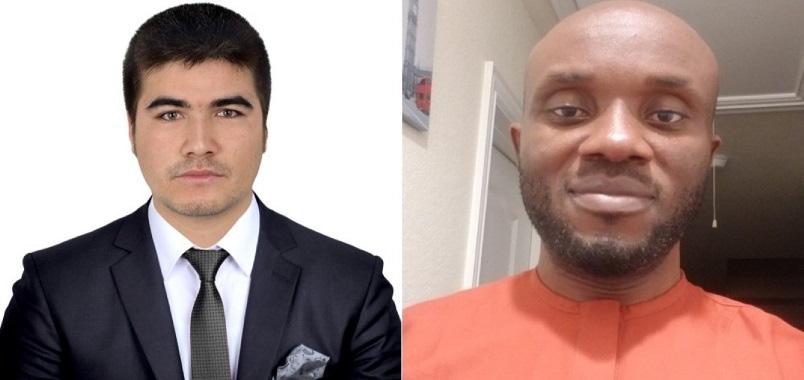
Synthesis of Best Application and Veri ication Practices for Long-Life Pavement Markings in Texas
Sayed Abuzar Kazimi
Faculty Advisor: Dr. Fengxiang Qiao
Transportation Studies
Proper application of pavement markings plays a crucial role in enhancing the safety of roadway users. The objective of this study is to thoroughly synthesize various information on the usage of different types of pavement marking materials, including advanced/new marking materials and the quality control approaches with regards to the different U.S. States and several foreign countries, and compare them with pavement marking practices in the Texas Department of Transportation (TxDOT). To ful ill this objective, a comprehensive online survey was designed in which a broad range of practical information was received regarding marking material types, quality control approaches, application rate veri ication, and equipment from 35 quali ied pavement marking ield practitioners of the various U.S. States and other countries. Subsequent to conducting an online survey, all documents (manuals and journals) related to pavement marking material of 16 State-level DOTs and several foreign countries have been thoroughly reviewed and synthesized. As a result, based on the outcome of statistical survey analysis and scanned documents, it is found that TxDOT pavement marking standard and speci ications, particularly its guidelines on quality control procedure, marking selection guide, and marking material types speci ications, are required to be updated as current TxDOT’s marking manual does not incorporate the recently available marking technologies and quality control procedures. Therefore, comprehensive recommendations on the TxDOT pavement marking guideline have been developed to address the existing shortcomings of the TxDOT pavement marking manual. Implementing these recommendations would drastically enhance the ef iciency of TxDOT pavement marking practices, including marking durability and retro-re lectivity.

The Bene its of the NBA “Play-In Tournament”
Robell Okubamichael
Faculty Advisor: Dr. Lila Ghemri
Computer science
In 2020, the National Basketball Associated adapted the system of play-in games as a precursor for their league playoffs. By de inition, the play-in game system lets the lower seed quali iers of each conference to participate in the tournament in order determine who would take the last inal spots in the playoffs. The objective of this study is to determine if the new, adapted play-in system would be bene icial to the NBA. Narrowing on a speci ic all-star player in Bradley Beal, the last 5 games leading up to the NBA playoffs were used to compare the effect of having a play-in game system. Line graphs were used to measure the production for each season. When there wasn’t a play-in game system, Beal’s minutes were decreased and fewer shots were taken. In comparison to the season having a play-in game system, his minutes have increased, and more shots were taken. After performing an analysis on the player’s production and utilizing the network’s analysis on viewership, the play-in tournament has been bene icial to the NBA. Before the play-in tournament was introduced, lower seeds would usually rest their starters to prevent injuries and give the bench players more playing time to develop. Basketball games that are irrelevant to the playoffs wouldn’t attract the same amount of viewers. Based on results, the play-in tournament has helped validating the playoff teams by testing the lower seeds to rightfully earn their spot as a competitor.
27


Understanding Gun Possession Among Young Males
Denise Brown
Faculty Advisor: Howard Henderson Administration of Justice
In a year timespan, gun violence in America kills nearly 40,000 people, injures more than 80,000, and costs our nation $280 billion. Black men make up 52% of all gun homicide victims in the United States, despite comprising less than 7% of the population. Without an understanding of why young males choose to possess guns, how they view guns, and their trigger points, strategies to root out gun violence cannot target the underline factors that lead to this violence. This multi-site study examines the perspectives of young males with a history of gun possession in Wilmington, Delaware, Houston, Texas, Baltimore, Maryland, and Jackson, Mississippi.
 L.H.O. Spearman Technology Building
L.H.O. Spearman Technology Building
28

Omicron and Delta Mutations of SARS-CoV-2 Spike Protein Destabilize RBD-hACE2 interactions:
Computational Evaluation of Spike Protein and hACE2 Interactions. Idowu, K. A. and Dr. Olaleye, O. A Department of Pharmaceutical and Environmental Health Sciences
After the emergence of severe acute respiratory syndrome coronavirus type 2 (SARS-CoV-2), various variants have emerged due to mutations to the viral proteins. Out of these variants, Delta (B.1.617.2) and Omicron (B.1.1.529) variants have proven to be of signi icant concern, considering their in luence on the virus's transmissibility and pathogenicity. Employing computational techniques, this study evaluates the impact of mutations on these two variants on the molecular interactions between the viral spike protein and the human angiotensin converting enzyme 2 (hACE2), recognized as the receptor for the entry of SARS-COV-2 into cells. Based on the docking results and the calculated free binding af inity, Omicron variant exhibited higher docking score and binding energy of -134.4 kcal/mol and -43.591 kcal/ mol, respectively. These values are higher than the calculated docking score and binding energy for Delta variant (-59.2 kcal/ mol and -19.743 kcal/mol) and the wild type (-119.8 kcal/mol and -29.700 kcal), respectively. These indings corroborate high infectivity/transmissibility associated with Omicron variant. Furthermore, the structural analyses of the impact of mutations on the receptor binding domain (RBD) and hACE2 (RBD) complexes revealed that the presence of mutations destabilizes the complexes as the structural analysis plots showed higher values than the wild type. However, the structural analyses, further showed that instability impact on Delta variant is more than the Omicron variant as evidenced by higher average values of structural analysis plots than the Omicron. This reported high structural instability might suggests the reason behind the severity in Delta variant infection/disease than the Omicron infection.

Incarcerating Democracy: An Analysis of Voter Suppression
Blair Lee Administration of Justice
Over 400 voter suppression bills have been proposed in 48 states. These Reconstruction Era and Jim Crow statutes have reintroduced racially motivated barriers to civil inclusion. Today there are at least three major tactics used to terminate an individual's right at the ballot box: legal disenfranchisement, logistical hurdles, and media misinformation. While these maneuvers have remained consistent, in this article we propose that the 2020 presidential election represented not only a reemergence, but an escalation of illegal tactics used to prevent equitable representation in our democratic republic. What we now know is that these efforts were a response to the changing demographics and voting patterns in the United States. The 2020 Census validated the changing American demographic and their attempt to reinsert a legislatively reinforced caste system. This paper proposes to examine the impact of voter suppression on voter turnout in the 2020 presidential election. Our results will provide evidence supported recommendations.
29

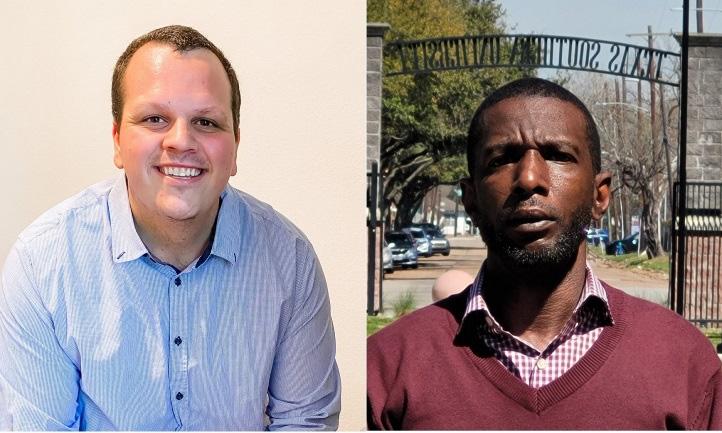
Do Judicial Characteristics Matter in Sentencing First-Time Federal Drug Defendants?
Jack Sevil, Dr. Julian Scott Administration of Justice
Federal sentencing guidelines were intended to remove widespread disparities. Research has demonstrated after controlling for prior and instant offenses, Black Americans are more likely convicted and have longer sentences imposed. Defendant race, ethnicity, criminal history and extralegal factors, all seemingly impact sentencing disparities. Contemporarily, individual judicial characteristics are publicly available. As such, research has begun better understanding the in luence of individual judicial characteristics on sentencing disparities. The current study examines the interaction effects of individual defendant and judicial characteristics - alongside case-level measures - on irst-time Federal drug convictions. Improving upon previous methodologies, the current study utilizes population intercepts and ixed beta coef icients within multiple linear regression modelling to predict irst-time Federal drug defendant’s sentences. Subsequent indings suggest speci ic Federal Judges sentence both African American, Hispanic, and Other irst-time Federal defendants differently based solely on their ethnicity.


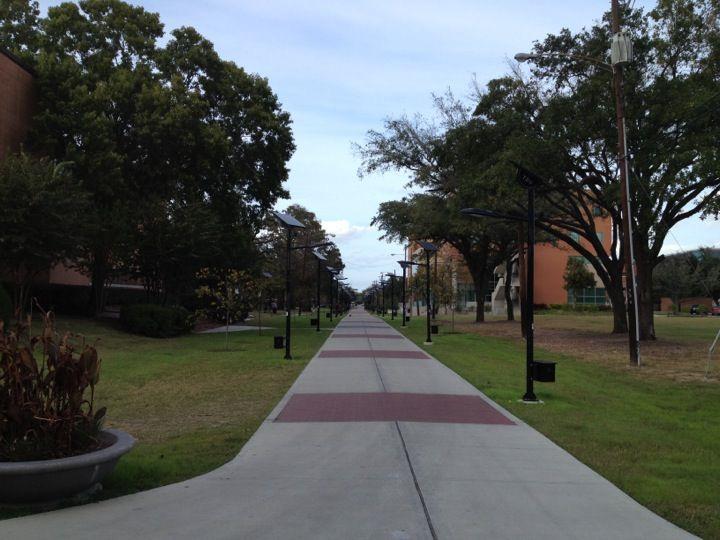
30
TSU Tigerwalk


Interdisciplinary Role of Data Analytics
Dr. Mayur S. Desai JHJ School of Business
Data science is a new interdisciplinary ield of research focused on extracting value from data and integrating knowledge and methods from computer science, mathematics and statistics, and the domain knowledge of the data (Hazzan & Koby August 2021). Data Analytics is a major activity within the Data Science. It facilitates transforming the enormous amount of data into visual form that is understandable and meaningful to the problem solver in the decision-making process. There are two aspects to the data analytics – the domain knowledge of the data (information literacy) and the ability to use software application tools (technical literacy). A data scientist needs to have both literacies to enhance the effectiveness and ef iciency of the decision- making process and subsequent problem solution.
The purpose of this paper is to present few examples of the data analytics tools, such as RapidMiner, Tableau, Power BI, and Python/R programming, that data scientists use for problem solving and decision making. The examples include brief explanations of the problem domains and the data analytic tools used in extracting, transforming and loading (ETL) the data for processing and subsequent problem solving and decision making. The paper further presents the guiding principles used in identifying the critical parameters to be monitored in evaluating the system performance. A concept of developing dashboards and how they display the critical parameters is brie ly introduced. In conclusion, the paper will outline the future direction and shape of the future job outlook in the ield of data analytics and in general the data science.
Orit Hazzan, Koby Mike, “A Journal for Interdisciplinary Data Science Education, Communications of the ACM”, August 2021, Vol. 64 No. 8, Pages 10-11
https://cacm.acm.org/magazines/2021/8/254298-a-journal-for-interdisciplinary-data-science-education/ fulltext#:~:text=Data%20science%20is%20a%20new,domain%20knowledge%20of%20the%20data.

Pedagogical Aspects of Elementary Statistics Using R: Coding, Research, Data Analysis, and Group Experiments
Dr. Nancy L. Glenn Griesinger Department of Mathematical Sciences
The programming language R is widely used for statistical computing plus graphics by both statisticians as well as non-statisticians within academia, government, corporations, and non-pro it organizations. Because of its capabilities, R continues to have phenomenal success as a data analysis package. However, R is typically taught in intermediate or advanced courses, not elementary statistics. We propose a semester-long elementary statistics course featuring R for undergraduate or graduate students with an algebra background. The textbook designed for this course is Elementary Statistics: A Guide to Data Analysis Using R (Glenn Griesinger, et al., 2022). This course cultivates students’ logical thinking with statistical and coding methods applied to real-world problems, group experiments, and research. There is an emphasis on research where students read, discuss, and critique peer-reviewed academic journal articles in class. With increased con idence and familiarity, students take the challenge of reading, implementing, then subsequently presenting research articles for class projects. The goal is to leverage R’s computing techniques to deepen students’ understanding of statistics along with coding. Collaborative case scenarios further enrich students’ learning that in turn provide experience to solve open-ended problems. Supplementary materials for this course are available online through Cognella’s Active Learning.
31

Geostatistical Analysis of Residual Radiation at Former Uranium Mine Site in Texas, USA
Dr. Mark C. Harvey, Dr. Nancy L. Glenn Griesinger Department of Mathematical Sciences
An in-situ leach (ISL) uranium mine site located in Texas, USA discontinued operations before the turn of the new millennium. The State of Texas hired an independent contractor to conduct radiological surveys along with soil remediation activities over the site’s terrain. The purpose of this research was to apply geostatistical methods to the survey data acquired by the independent contractor to predict residual radioactive hotspot locations. This research characterized the site’s regularly spaced spatial data, {Z(s):s ϵ D}; D ϵ ℜ2, at a location s = (x,y) according to global positioning coordinates for gamma count rates as well as the speci ic activity of Radium-226. The programming language R was used throughout the analysis to construct geographic maps, and to conduct estimation through semivariograms and kriging. Hence, the spatial statistical methods employed in this analysis were used to unambiguously identify radiation areas that exceeded regulatory limits. Analytic results indicated that it will be necessary to perform further remediation activities coupled with continued sampling, surveying, and monitoring work by State of Texas experts. The importance of this research is that it will both scienti ically and statistically validate the state and federal regulatory decision-making process impacting the release of the former ISL uranium mine site for future unrestricted use to landowners.

TSU SHAPE Initiative YES: Sexual Risk Perceptions and Reported Behaviors Among Young Adults During the COVID-19 Pandemic
Ms. Nicole
Akinbohun, TSI YES Program Coordinator
Dr. Grace A. Loudd, LMSW, TSI YES Project Director
The COVID-19 pandemic signi icantly shifted the relational landscape and, more speci ically, sexual relationships. Pre-pandemic young adults 15-25 years old accounted for 26 million reportable sexually transmitted infections, to include chlamydia, gonorrhea, and syphilis, newly diagnosed in 2018. Health disparities continue to persist with just over 30% of new diagnoses occurring among non-Hispanic blacks (CDC, 2021). With the pandemic declared March 2020 and the implementation of social distancing, it is reasonable to expect complementary changes in sexual behavior as well. Some studies suggest pandemic uncertainties impacted sexual decision-making by encouraging gradual reductions in partnered sexual activities (Stavridou et al., 2021; Wignall et al., 2021) whereas others conclude the rate of sexual activities did not change much compared to the pre-pandemic period (Yarger et al., 2021). Additionally, some found the pandemic shifted and/or expanded perceptions of what is to be considered as risky sex (Bowling et al., 2021). The TSU SHAPE Initiative: YES! (TSI YES) program is a sexual and mental health service program for youth and young adults throughout the Greater 3rd and 5th Ward communities. Annual assessment indings reveal that on average approximately 30% of all program participants screen positive for chlamydia and gonorrhea, report moderate levels of alcohol and marijuana use, and nearly 25% underestimate their level of risk or harm of engaging in barrier-free sexual activities. This presentation will compare and report associated indings of sexual risk perceptions, reported behaviors, and implications among participant cohorts enrolled within the irst two years (2020 and 2021) of the COVID-19 pandemic.

Manifesting Conscious Capitalism: Healthcare Provider Behaviors During the Covid-19 Pandemic
Dr. Sondip K. Mathur, Dr. Nora I. Osemene; Dr. Cyril V. Abobo
Texas Southern University, Joan M. LaFleur College of Pharmacy & Health Sciences
Studies on conscious capitalism, conceptually and empirically, are predominantly at the macro level, in terms of both organizational decision making and outcome assessment. Likewise, individual
32

stakeholder expression of conscious capitalism and ethical principles tend to be deemed latent in macro outcomes and impacts. However, in the wake of the Covid-19 pandemic, the manifestation of humanism became explicit at individual stakeholder levels, particularly in the health sector. There is a proliferation of reports of individual provider leadership, purposeful care provision, professionalism going above and beyond, and related community-level impacts. As we will enter a post-pandemic phase, a framed analysis of such reports will serve to apprise policy and practice.
The study’s goal is to describe, explain, and evaluate the reported narratives as purposeful provider behavioral expressions of conscious capitalism character traits and professional ethical decision making lodged within the traditional conversation on healthcare costs, access, and quality.
Study’s speci ic objectives are to (1) present an analytical framework formulated at the intersection of conscious capitalism tenets and health professions codes of ethics; (2) conduct a review of indexed and gray literature, including credible and mainstream media, to generate a case series for analyses and thematic mapping aligned with the analytical framework elements; and (3) assess the thematic evidence to contend that front-line worker actions advance health equity and mitigate disparities without con lict with traditional microeconomic, clinical, and humanistic outcome evaluation of health care services; and (4) recommend a didactic educational and experiential training strategy for integration in health professions curricula.

Is Currency Exposure Puzzle really a Puzzle? International Evidence
Dr. Chu-Sheng Tai Accounting and Finance
Motivated by the limited success in detecting signi icant currency exposure in the extant literature, in this paper I attempt to resolve the so-called “exposure puzzle” and thus make a contribution to the literature by investigating whether currency movements have any signi icant impact on stock returns for seven selected industries which are common across 12 diversi ied economies such as the G4 countries (Canada, Germany, Japan, the UK), as well as eight emerging markets, including four Asian markets (China, South Korea, Taiwan, and Thailand) and four Latin American markets (Argentina, Brazil, Chile and Mexico) if both conditional heteroscedasticity and asymmetric currency exposure are taken into account in the estimation. Based on the estimation of an asymmetric three-factor exposure model using multivariate GARCH (MGARCH) methodology, I ind that currency exposure is highly signi icant and pervasive since 73 (86.90%) and 64 (76.19%) of 84 country-industry portfolios examined are signi icantly exposed to the bilateral exchange rate and trade-weighted exchange rate changes, respectively. In terms of the size of total currency exposures, the lowest mean total currency exposure is 0.131 for developed market industry portfolios when the trade-weighted exchange rate is used, suggesting that ceteris paribus a 1% appreciation of the trade-weighted USD exchange rate is, on average, associated with a 0.131% increase in the weekly excess returns of these portfolios. On the other hand, the highest mean total currency exposure is 1.241 for Asian emerging market industry portfolios when the bilateral exchange rates are used, implying that ceteris paribus a 1% appreciation of the local currency with respect to the USD is, on average, associated with a 1.241% increase in the weekly excess returns of these portfolios. As a result, the currency exposures are not only statistically signi icant but also economically important. These empirical results remain unchanged under several robust tests. This is an extremely important inding as it suggests that previous studies on currency exposure which rely heavily on the standard OLS or SUR method of estimation with the assumption of constant variance of irm’s or industry’s returns and symmetric exposure over appreciation-depreciation cycles are frequently misspeci ied. Consequently, the methodological weakness from previous studies is the reason for the exposure puzzle, which may not necessarily due to the effective hedging as proposed by some researchers. However, this so-called “exposure puzzle” may not be a puzzle at all once a better methodology such as the MGARCH is utilized in the estimation.
33

TSU Leadership, Education, and Advancement in Undergraduate Research Pathways (TSU-LEAP) For COVID19 & Pandemic Responsiveness
Symposium & Luncheon 11:00 AM - 1:00 PM
Sterling Student Life Center
Welcome and Introduction
Omonike Arike Olaleye, Ph.D., MPH
Senior Associate Associate Vice President for Research & Innovation
Professor of Pharmacology
Center Director, NIH-funded Center for Biomedical and Minority Health Research
Co-Director, TSU Maternal and Child Health Training Program Co Director, TSU CPRIT-CCPF Education, Training and Outreach Programs
TSU-LEAP Scholarly Research Presentations Research Track
• Racial Disparities in Stillbirth Among Pregnant Women with Obesity
° Vincent Tran, Clinton Emeh, Kameren Baines, Danielle Boua, Yhenew Mossi
° Collins Onyenaka, Adbusuyi, Dr. Toyin Bakare, Deepa Dongarwar
° Dr. Omonike Olaleye & Dr. Hamisu Salihu
M.C.H
• Luteolin Glucuronide Age-Dependent Fecal Hydrolysis by Rat glucuronidase Enzyme 3D
° Daniel Kuddabujja, Imoh Etim, Dr. Ting Du & Dr. Song Gao
• Barbara Jordan Still Speaks Today
° Dr. Carla Brailey, Jacqueline Valenciana, Merci Wilson & Willie Howard
• Telework and Telelearning: The Next Generation
° Ethan Pinder, Shadera Haley, Valencia Stewart & Dr. Gwendolyn Goodwin
• COVID-19 Contact Tracing: Employing Machine Learning Approach
° Hend Shahin, Grenique Brown, Daniel Omoijiade, God’salvation Oguibe
° Dr. Kehinde Idowu & Dr. Omonike Olaleye
• Addressing Zip Code in Relation to Aggressive Prostate Cancer in African American Males in the Greater Houston Community
° Phan NgocMai, Faith Rutherford, Tamar Hicks, Christopher Wallace,
° Dr. Uche Ndefo, Dr. Grace Loudd & Dr. Veronica Ajewole
TSU-LEAP Ambassador & Keynote Speaker Introduction Dr. Anu Egbejimi
S.B.S.
B.E.A.M.
A.I.M.
H.E.A.L.
TSU LEAP Program Coordinator
TSU LEAP Ambassador Speaker Tolulope Adebusiyi
COVID-19 Vaccine Hesitancy Among Minority Population in East Harris County
TSU Keynote Speaker
TSU-LEAP Pinning Ceremony
Closing Remarks
Ph.D. Doctoral Student
Mr. Paris Garrett
TSU Student, COSET
NASA Intern
Ms. Karen Stewart
TSU LEAP Program Manager
Division of Research & Innovation
34
***LUNCH***

For COVID19 & Pandemic Responsiveness
TSU LEAP Program Administration
TSU Institutional Oversight: Omonike Olaleye, Ph.D. MPH
TSU Program Manager: Karen Stewart
LEAP Ambassadors, Graduate Research Assistants and Clinical/Research Fellows
OVERVIEW: The Texas Southern University Leadership, Education, and Advancement in Undergraduate Research Pathways (TSU-LEAP) will provide TSU students with the opportunity to participate in of hands-on research experience under the mentorship and supervision by TSU faculty members. The program will run from March 24 - November 11, 2022 Students selected for TSU - LEAP will participate in cutting-edge research in five different pathways:
1. Business, Engineering, Arts, Mathematics (B.E.A.M.C)
2. HEALTH Disparities & Minority Health (H.E.A.L. MH)
3. Social & Behavioral Sciences, including Social & Environmental Justice, Equity & Policy (S.B.S.)
4. Drug Discovery & Development (3D)
5. Artificial Intelligence & Computational Modeling (A.I.M.)
6. Maternal & Child Health (M.C.H.)
7. Science, Technology, Engineering, & Mathematics (S.T.E.M.)
PURPOSE: The goal of the TSU - LEAP program is to foster and enhance undergraduate student research mentoring for pandemic responsiveness through mentoring using a collaborative approach in an innovative and transformative research environment. The TSU - LEAP is a structured student-centered program encompassing: leadership, education, research advancement, and community engagement and outreach. TSU students will work collaboratively with faculty, peer graduate mentors, and postdoctoral fellows/research scientist. TSU - LEAP students will be selected on a competitive basis (GPA, level of research interest and other academic performance metrics).
PROGRAM COMPONENTS
STIPEND: Students selected for TSU-LEAP will be supported with a stipend through funding provided by the Division of Research & Innovation at TSU.
MENTORING: Each TSU - LEAP trainee will be assigned a mentoring team, composed of faculty, postdoctoral fellow/ research scientist and graduate student. The mentoring team will offer guidance in navigating through research pathways, career opportunities and graduate/professional school applications.
COMMUNITY ENGAGEMENT PROJECT: Each TSU-LEAP trainee will participate in a practical community engagement and outreach project.
PROFESSIONAL DEVELOPMENT: Students will receive interprofessional training that consists of journal club/ seminar sessions lead by post-doctoral fellows, research scientists, graduate students, and/or faculty to expose them to current/emerging topics within the research pathways. Students will also be trained in research writing, scientific communication, and presentation skills. In addition, these training sessions will allow for interdisciplinary networking opportunities.
TSU - LEAP LEADERSHIP SUMMITS (I & II) : Students will participate in a 3-day leadership boot camp consisting of the following leadership training workshops: entrepreneurship, resume writing, interview skills, team science, DISC personality assessment to help improve teamwork, productivity, team building, and professionalism, cultural sensitivity and branding.
35

TSU - LEAP UNDERGRADUATE RESEARCH SYMPOSIUM: Students will participate in a capstone and collaborative symposium to present a culmination of their research work and community engagement.
TSU – LEAP OPPORTUNITIES FOR STUDENTS IN ALL MAJORS
The TSU-LEAP program will target students enrolled in programs in the TSU colleges below:
• College of Pharmacy and Health Sciences
• College of Science Engineering and Technology
• College of Education
• Jesse H. Jones School of Business
• School of Communication
• College of Liberal Arts and Behavioral Sciences
• Thurgood Marshall School of Law
• Barbara Jordan-Mickey Leland School of Public Affairs
• Thomas F. Freeman Honors College
ELIGIBILITY CRITERIA
• Must be a TSU student.
• Undergraduate students in any major.
• Priority will be given to racial/ethnic underrepresented minorities that demonstrate academic success, leadership potential, research interest, and plan to pursue graduate/professional studies.
• Minimum of 2.75 GPA on a 4.0 point scale will be required for acceptance into the program.


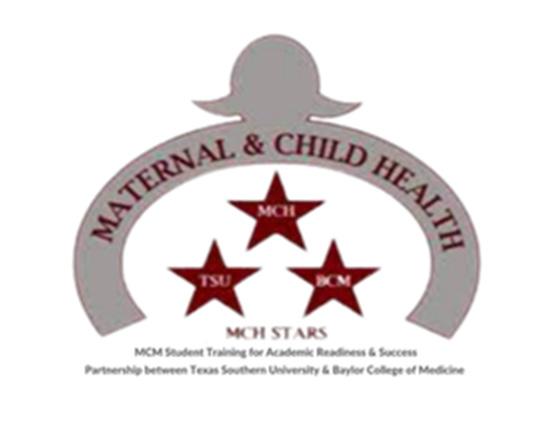




36

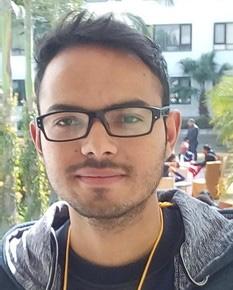
Application of Arti icial Intelligence in Freeway Congestion Management
Sandip Acharya
Faculty Advisor: Dr. Mehdi Azimi Department of Transportation Studies
Congestion is one of the major and challenging issues for urban transportation systems and reducing congestion has become complex with regard to traf ic analysis considering the emerging growth of transportation data and technologies. In recent years, there have been growing interests among highway transportation agencies and state Departments of Transportation (DOTs) in considering augmenting traf ic data collection and using those data to analyze, forecast, and reduce traf ic congestion. Majority of State DOTs have started adopting data initiatives either with the support of private companies or by developing their own databases. Arti icial Intelligence and Machine learning in this case can use learning techniques to detect and forecast congestion using de ined models. In this research, we have reviewed all the Arti icial Intelligence algorithms which have potential to be used for freeway congestion management. Then, we have focused on the data which is required to develop models to detect and forecast traf ic congestion. We analyzed the big databases used by the state DOTs and highway agencies for freeway congestion reduction. The Arti icial intelligence approaches provide a unique opportunity to estimate precise congestion measures by utilizing those data from agency-owned sensors. third-party providers, and big enterprise data.
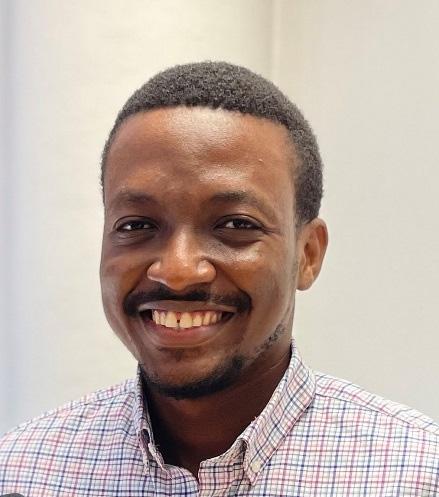
Inhibition of the Interaction Between Severe Acute Respiratory Syndrome Coronavirus 2 (SARS-COV-2) Spike Protein's C-Terminal C-End Rule (CENDR) Region and Neuropilin1 Receptor
Tolulope Adebusuyi
Faculty Advisor: Dr. Omonike Olaleye Pharmaceutical & Environment Health Sciences
Severe Acute Respiratory Syndrome Coronavirus 2 (SARS-CoV-2) infection, the causative agent for Coronavirus disease 2019 (COVID-19) has resulted in over 3.5 million deaths worldwide. Although vaccines against SARS-CoV-2 are available, mutations on the viral gene as well as the infectivity of SAR-CoV-2 has led to its rapid spread. Remdesivir remains the only FDA-approved drug for COVID-19 patients. The potential of the emergence of vaccine and drug-resistant strains of SARS- CoV-2 has led to the need for novel strategies for therapeutics. Our research focuses on the critical host co-receptor for SARS-CoV-2 entry into the human cells: Neuropilin 1 (NRP1). One of the essential entry pathways for SARS-CoV-2 infection is via the interaction between viral envelope-anchored spike glycoprotein of SARS-CoV-2 and the host receptor, angiotensin-converting enzyme 2(ACE2). This entry pathway is enhanced through the interaction between NRP1, and the C-end Rule (CendR) region of the SARS-CoV-2 Spike protein. Herein we will evaluate the effects of OJT009 on the interaction between the SARS-CoV-2 spike protein c-terminal c-end rule (CendR) region and Neuropilin1 receptor.
For the irst time, we discovered the small molecule ‘OJT009’ as a potent inhibitor of SARS-CoV-2 Spike protein interaction with NRP1. Our indings provide a new mode of action and a new molecular target for the clinically approved drug.

Inhibition of Casein Kinase 2 (CK2) in Osteosarcoma Induces Oxidative Stress and Cell Death
Sha'von Baines
Faculty Advisor: Dr. Mario Hollomon Biology
Casein kinase 1 (CK1) regulates diverse cellular processes such as cell cycle, apoptosis, autophagy and metabolism. Casein kinase 2 (CK2) is involved in cell growth and suppression of apoptosis. Dysregulation of CK1 or CK2 is linked to cancer development. Forkhead box protein O1 (FOXO1) is a
37

transcription factor that also regulates diverse cellular processes such as apoptosis, redox homeostasis and cell cycle. The objective of this study was to investigate the effect of CK1 or CK2 inhibition on oxidative stress and cell death in osteosarcoma. CHOSD, HOS and LM7 osteosarcoma cell lines were used in this study. Cells were treated with D4476 or silmitasertib to inhibit CK1 or CK2, respectively. AS1842856 was used to inhibit FOXO1. Following inhibition of CK1 or CK2, oxidative stress and cell viability were determined by low cytometry. Inhibition of CK2 increased oxidative stress in LM7 cells. Inhibition of CK1 did not increase oxidative stress in any cell line investigated. Inhibition of CK2 induced cell death in all cell lines investigated. CCHOSD cells were the most sensitive to CK2 inhibition-induced cell death. Inhibition of CK1 did not induce signi icant cell death in any of the cell lines investigated. Considering that inhibition of CK2 increased cell death in all cell lines investigated, the results of this study support the pro-survival function of CK2. To the best of our knowledge, this is the irst report of CK2 inhibition-induced oxidative stress in osteosarcoma.

Investigating New Materials for Longevity of Pavement Marking in Texas
Emmanuel Ekezie
Faculty Advisor: Dr. Fengxiang Qiao
Transportation Studies
Pavement makings play signi icant role in decreasing traf ic congestion, promoting safety and mobility through road partitioning, raising the consciousness and awareness of road users, and providing secured information that enhances smooth vehicular and pedestrian traf ic. The goal of this study is to synthesize advance new marking material to enhance durability and safety, such as the photoluminescent road marking, nanocomposite paint, and translucent concrete-based smart lane separator on different pavement surfaces. The study further investigates the best application practice of these advance materials by Texas Department of Transportation (TxDOT) and other United States Department of Transportation (U.S.DOT) and the world. To accomplish this task, the study synthesized available data and literature in relation to new marking materials having been used by states DOTs and compared their durability, retro re lectivity rate, and cost effectiveness. The outcomes of the study will help in decision marking processes concerning the application of the advanced marking materials for longevity of pavement marking within Texas roads and help to update the existing TxDOT pavement marking manuals.
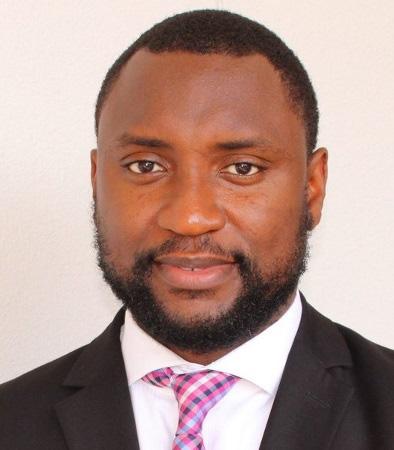
In vitro Drug Metabolism by Rat Liver Carboxylesterase: Focus on Irinotecan and Mycophenolic Mofetil
Imoh Etim, Ting Du, Robin Sunsong, Nyma Siddiqui, Song Gao
Faculty Advisor: Dr. Song Gao
Pharmaceutical & Environment Health Sciences
Prodrug is a drug design technique aimed at optimizing drug disposition and activity. Several prodrugs are hydrolyzed to their active metabolites in the presence of carboxylesterase (CE) enzymes. The peculiar tissue distribution of carboxylesterase enzymes offers a great bene it to drugs designed as prodrugs for tissue targeting. Irinotecan and mycophenolic mofetil are prodrugs that depend on the CE activity to release their active metabolites SN-38 and mycophenolic acid (MPA), respectively. Here, we focused on the CE activity of the liver. To determine the hydrolysis rate, different concentrations of mycophenolic mofetil and irinotecan were incubated in rat liver S9 fraction. Mycophenolic mofetil was incubated with 0.5µg/ml of S9 fraction for 30 minutes and irinotecan was incubated with 250µg/ml S9 fraction for 60 minutes. The reaction was then terminated using 6% formic acid in acetonitrile. Thereafter, samples were prepared to determine the concentration of the metabolites MPA and SN-38 using Waters Acquity H-Class UPLC. Metabolism kinetics parameters were calculated accordingly.
We observed that the optimal enzyme concentrations for these hydrolysis assays were 0.5 µg/ml for mycophenolic mofetil and 250 µg/ml for irinotecan. The Vmax and Km for mycophenolic mofetil was 0.76 ± 0.001 nmol/µg/min and 119.3 ± 0.954 µM, irinotecan was 0.12 ± 0.001 nmol/mg/min and 32.05 ± 0.648 µM, respectively.
38

The optimal concentration of enzyme and substrate, incubation time are critical for the hydrolysis of irinotecan and mycophenolic mofetil by rat liver S9 fraction. Determination of these factors can aid in the further evaluation of hepatic metabolism of these two compounds.

Interdisciplinary Data Literacy
Aliza Durvesh, Blessing Ezeudu, Damilola Alade, Ayodele Olo insao, John Idoko
Faculty Advisor: Dr. Mayur Desai Management Information Systems
Data is the new oil! As academics, politicians, and activists began exploring what it would take to encourage citizens to make better use of the massive quantity of data available to them, the term 'data literacy' has gradually evolved as a mainstream term and possible slang of the 'Data Revolution' talks. More data science training programs have been recommended by policymakers; therefore, schools and non-pro it organizations have started to help bridge the digital divide by offering coding programs and technical curricula to underserved groups, particularly women and minorities.
Data literacy is still ill-de ined and unclear at its best, despite its growing popularity as a much-needed solution. In an age when data is everywhere, one may examine questions like; the prospect of becoming "data literate," and how it varies from being literate? How can publicizing "data literacy" help businesses and communities address local problems while navigating their data ecosystems?
Data literacy can be de ined as the willingness and ability to use data to act productively in our society. Our aim in this paper is to present some examples of data analytics tools, such as RapidMiner, Tableau, and Power BI that data scientists use for decision-making and problem-solving. Findings indicate that for a company to achieve its long-term success, the critical necessity on how to train data-savvy staff needs to be implemented. Industrialised Analytics - Deloitte. (n.d.). Retrieved February 26, 2022, from https://www2.deloitte.com/content/dam/ Deloitte/uk/Documents/technology/deloitte-uk-tech-trends-2016-industrialised-analytics.pdf

An Ongoing Study of DND1 Function in Somatic Cancers
Jyotsna D Godavarthi
Faculty Advisor: Dr. Yun Zhang Pharmaceutical & Environment Health Sciences
Dead-End (DND1) is a cytoplasmic, RNA-binding protein found in vertebrates. It is critical for maintaining viability of primordial germ cells and is involved in translational regulation by interacting with mRNA. Defects in DND1 gene causes germ cell tumours and sterility in rodents. Previously, we performed an in-silico analysis of DND1 using data from The Cancer Genome Atlas database which showed that DND1 is altered in many human cancers and in some cases with worse survival. DND1 either positively or conversely co-expressed with many genes in a variety of cancers. The Ingenuity Pathway Analysis (IPA) of these coexpressed genes identi ied many canonical signalling pathways in each cancer type, whose activation or deactivation are signi icantly associated with DND1 expression. Importantly, some cancers exhibit strikingly similar pro iles of DND1correlated signalling pathway activation or suppression. To experimentally verify the effects of DND1 on these signalling pathways, we decided to irst overexpress DND1 in cultured cancer cells. For that, we cloned FLAG-tagged-DND1 open reading frame into a pLVX-TetOne-Puro vector, which is a Lenti-X TetOne Inducible Expression system. The modi ied vector was then replicated using Lenti-X packaging single shots (VSV-G) in HEK293T cells which in-turn will be used to establish a stable cell line that overexpress DND1 upon induction. These stable cell lines will further be used to examine the cellular features and the signalling pathways, at both RNA and protein levels, upon DND1 overexpression. The results would help us to understand the potential role of DND1 in cancers.
39


Assessing Zip Code in Relation to Advanced Prostate Cancer in African American Males in The Greater Houston Community
TaMar Hicks, Faith Rutherford, Ngocmai Phan, Christopher Ogboe
Faculty Advisor: Dr. Veronica Ajewole Pharmacy Practice & Clinical Health Sciences
Healthy People 2030 social determinants of health (SDOH) illuminates patterns re lecting economic, social, environmental, and racial disadvantages in the quality of healthcare. Prostate cancer (PCa) is one of the most common cancers occurring in men. Compared to Caucasians, African American (AA) males have the highest incidence of PCa. Early screening for PCa improves stage diagnosis and reduces mortality. Findings show AA men are less likely to have early screening performed. A better understanding of the multidimensional disparities factors that contribute to aggressive prostate cancer (aPCa) in AA males and the relation to clinical stage at prostate cancer diagnosis is needed.
In this study, we identi ied the key elements associated with aggressive prostate cancer among African Americans males. We utilized statistical methodology, clinical informatics, machine population data, medical history data, and health outcomes from the target population over a 10-year period (1/1/2009 and 12/31/2019) within the GHC. Our data was retrieved from a hospital-based cancer registry and medical record database in order to determine the potential variables that would predict aggressive prostate cancer among African American males in particular zip codes. Patient zip codes were used to tabulate patients identi ied with aPCa. Delineating factors used to identify aPCa included advanced stage prostate cancer, African American men, the clinical staging of the disease (Stage 3c, 4a, 4b), and the zip code in which the individual resides. The top ive zip codes include 77489, 77088, 77520, 77479 and 77521.

Comparing the Regulatory Effects of microRNAs and Drugs on Two Cell Cycle Regulators in PC-3 Cells
Tommie Johnson
Faculty Advisor: Dr. Shodimu-Emmanuel Olufemi Environmental and Interdisciplinary Sciences
microRNAs (miRs/miRNAs) are non-coding small temporal RNA (stRNA). They have played a signi icant role in regulating gene expression at the post-transcriptional level by inhibiting translation and causing mRNA degradation. Certain drugs also regulate gene expression. Abrogation of expression of cell cycle genes has resulted in human disease. Currently, drugs and microRNAs are used to treat several human diseases and their ef iciencies are still in the developing stage. One of the aims of this study is to show that miRs and drugs possess the same gene regulation capacity to modulate gene expression. The study focuses on genes involved in the cell cycle, CCND1 and CDK4 were used for the initial study. miRs were cloned, transfected, and expressed in PC-3 cells at 24 h intervals for 96 h. PC -3 cells were treated with drugs at 24 h intervals for 96 h, and controls were also included in the study. Western Blotting was performed and used to determine the downregulation of CCND1 and CDK4. Current results in this study showed that the drugs are more potent than the microRNAs, which could be due to the miRNAs being synthesized inside the cells as compared to the drugs that have a direct effect on the cells. More experiments must be done to con irm the ef iciency of reduced expression of their target genes. The overall goal of this research is to show whether microRNA or the drugs that are used for treatments in several human diseases will have the same effect.
40


A Robust Programmable Platform for Robotic Agents*
Emmanuel Joshua and Ogunyemi Titus Oladimeji
Faculty Advisor: Dr. Wei Li Computer Science
The project of platform for open wireless data-driven experimental research (POWDER) and the recon igurable ecosystem for next-generation end-to-end wireless (RENEW) is a NSF supported project through its program of platforms for advanced wireless research (PAWR) program. This POWDERRENEW project was led by University of Utah and Rice University with collaboration with University of Michigan at Ann Arbor and Texas Southern University (TSU). The POWDERRENEW team has recently developed a testbed for testing radio frequencies from the massive MIMO based stations. For the testbed, dozens of client nodes (Iris SDR boards) will be further deployed. The Iris-boards’ diversity in mobility is validated by mobile robots and other mobile vehicles. It is particular vital that the mobile robot’s control is lexibly manipulated and accessible for testing.
The TSU POWDER-RENEW team are conducting experiments to deal with this mobile robot’s control issue by working to generate a programmable platform for effectively program mobile agents. This programmable platform utilizes web programming languages such as Python, Linux, Bashing, Scripting, HTML, Javascript, etc. to create a robust and user-friendly interface to remote control mobile agents. Currently, the platform is running testing on Ubiquity Robotics Magni at TSU. Magni mobile robot is speci ically designed to handle large payloads for long durations. This mobile robot is controlled by a Raspberry Pi which has been programmed by us. TSU team has successfully created an interface and added new functionality such as camera and joystick functionality. Experimental results show that this platform is completely responsive and user friendly for easily monitored and controlled on mobile agents. This platform can be extended for remotely controlling other devices.
*This work has been supported in part by the National Science Foundation under Grant HRD Grant CNS-1827940.
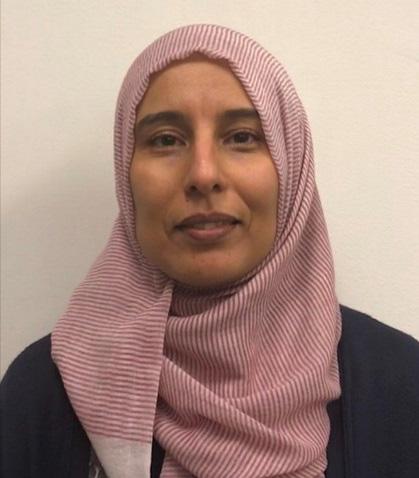
Haloperidol Activate Phosphoinositide 3 kinase/Akt Pathway to Enhance BEAS-2B Cell Line Survival
Mounira Morgem
Faculty Advisor: Dr. Shodimu-Emmanuel Olufemi
Environmental and Interdisciplinary Sciences
Haloperidol is a typical antipsychotic drug; it has been used in the treatment of various psychiatric conditions. Studies have linked haloperidol with neuroprotective effectiveness and neurodegenerative potential at various concentrations and intervals. However, the cellular and molecular mechanisms involved in haloperidol actions are still poorly understood.
This study aims to investigate the effects of Haloperidol on the Phosphoinositide 3 kinase/Akt pathway in BEAS-2B cells and if the impacts on this pathway have an alteration in genes expression that rescues cells from apoptosis, which might possibly help in understanding how haloperidol may impact treatment response or induce side effects. Beas-2B cells were treated with 3.5 µM haloperidol for 24, 48, and 72 hours. Morphology of the cells was examined by Inverted Microscope and the expression levels of Akt, Bcl-xL, Casp3, and Casp9 were analyzed by Western blotting.
Haloperidol suppressed cell growth at 24 h and gradually increased it at 48 and 72 hours when compared to controls. Western blot analysis based on mean density showed that Casp3 upregulated at 24, 48, and 72 hours; Casp9 cleaved and Casp9 upregulated at 48 and 72 hours when compared to untreated controls. Akt was upregulated at 24, 48, and 72 h, and Bcl-xL was activated at 72 hours when compared to ACTB.
These indings suggest that haloperidol promotes an alteration in cell morphology and growth. The cells undergo quiescence at 24 hours which averted proliferation at 48 and 72 hours. Caspase-3 and 9 were upregulated suggesting that haloperidol initiates intrinsic apoptotic pathway activities. Akt and Bcl-xL expression upregulated, implying that their
41

expression can rescue the cells from apoptosis and favor cell survival. Further experiments need to be performed to determine the potential role of AKT, an inhibitor of apoptosis proteins, and the cellular mechanism of haloperidol.

Effects of Slow and Fast-Releasing Hydrogen Sul ide Compounds on Porcine Iris-Ciliary Body Explants Pretreated with Lipopolysaccharide
Fatima Muili
Faculty Advisor: Dr. Ya Fatou Njie Mbye Pharmaceutical & Environment Health Sciences
Purpose: To compare the pharmacological actions of slow and fast-releasing H2S compounds on in lammatory responses induced by lipopolysaccharide (LPS) in cultured porcine iris-ciliary body (ICB) explants (using Tumor Necrosis Factor-alpha, TNFα, as a marker).
Methods: Freshly isolated porcine ICB explants were cultured in media containing 1% penicillin-streptomycin with different concentrations of LPS for 20h. Effect of fast- (sodium hydrosul ide, NaHS) and slow-releasing (GYY4137) H2S compounds were tested in the presence of LPS. Concentrations of TNFα in culture supernatants were measured using an ELISA kit.
Results: LPS 10 ng/ml, 25 ng/ml, and 50 ng/ml enhanced TNFα production up to 10.36 ± 0.23 ng/g (n = 6), 12.32 ± 0.40 ng/ g (n = 5) and 11.80 ± 1.11 ng/g (n = 5), respectively, over basal levels (7.21 ± 0.29 ng/g; n = 6). In the presence of LPS (25 ng/ ml), NaHS (5 µM and 50 µM) caused signi icant (p < 0.001) decreases in LPS-induced TNFα production by 22.7 % ± 3.6 % (n = 6) and 26.5 % ± 5.3 % (n = 5), respectively. Likewise, GYY4137 (1 µM and 10 µM) evoked signi icant (p < 0.001) reductions of LPS-induced TNFα production by 25.0 % ± 3.7 % (n =5) and 19.9% ± 1.8 % (n = 4), respectively. Conclusions: We conclude that LPS can induce an in lammatory response in the cultured porcine ICB explants. Both fast- and slow-releasing H2S compounds reduced LPS-induced TNFα production in the ICB explants with the latter compound demonstrating a higher potency.

Assessment of Nrf2 or FOXO1 Inhibition-Induced Cytotoxicity in Osteosarcoma
Simisola Ogundare
Faculty Advisor: Dr. Mario Hollomon Biology
Reactive oxygen species (ROS) are highly reactive chemicals that are generated during cellular activities. Most ROS are generated during cellular respiration. A build up of ROS may damage cellular molecules and structures with subsequent cell death. Redox homeostasis refers to the elimination of ROS by endogenous antioxidants. Therefore, redox homeostasis is essential for cell survival. Nuclear factor erythroid 2-related factor 2 (Nrf2) is considered the major transcription factor for the regulation of redox homeostasis. However, Forkhead Box O1 (FOXO1) transcription factor also regulates redox homeostasis. The objective of this study was to investigate the effect of FOXO1 or Nrf2 inhibition on cytotoxicity in osteosarcoma. CCHOSD, HOS and LM7 osteosarcoma cell lines were used in this study. Cells were treated with AS1842856 or ML385 to inhibit FOXO1 or Nrf2, respectively. Following inhibition of FOXO1 or Nrf2, oxidative stress and cell viability were determined. Camptothecin (CPT)-induced cell death was also investigated. Inhibition of FOXO1 or Nrf2 increased oxidative stress in all cell lines investigated. Inhibition of FOXO1 induced cell cycle arrest in CCHOSD and LM7 cells. Inhibition of Nrf2 induced cell death in CCHOSD and LM7 cells. Inhibition of FOXO1 reversed Nrf2-induced cell death in CCHOSD. Inhibition of FOXO1 reversed CPT-induced cell death while inhibition of Nrf2 increased CPT-induced cell death in LM7 cells. The results of this preliminary study indicate that inhibition of FOXO1 or Nrf2 has differential effects on cytotoxicity in osteosarcoma.
42


eVTOL The Future of Air Transportation
Olajumoke Lizzy Omosebi
Faculty Advisor: Dr. Yi Qi
Transportation Studies
Every day, millions of hours are wasted on the road to congestion worldwide. Congestion challenges could be exacerbated by growing populations and rising urbanization over the coming decades. Ondemand aviation has the potential to radically improve urban mobility, giving people back time lost in their daily commutes. Recent advancements of electric vertical takeoff and landing (eVTOL) aircraft have generated signi icant interest within and beyond the traditional aviation industry. Some might call eVTOL aircraft
“ lying cars” but they’re more accurately called electric helicopters. eVTOL is envisioned to enable a new form of transportation in dense, urban locations, it will enable rapid, reliable transportation between suburbs and cities and, ultimately, within cities. eVTOL aircraft will have the potential to become an essential tool to public service agencies around the world in applications such as ire ighting, public safety, search and rescue, disaster relief, and law enforcement. With about 200 companies involved in the development of electric vertical-takeoff-and-landing vehicles (eVOTL), urban air mobility is increasingly seen as a future option for affordable, rapid, and sustainable intercity travel, and some companies are looking to launch their services as early as the end of 2022. Electric vertical takeoff and landing (eVTOL) vehicles, have the potential to improve the future of elevated mobility by moving people and cargo more quickly, quietly, and cost-effectively than traditional helicopters. Our research will take a more in-depth look into what eVTOL is, how it works, and what the future of air transport holds. Also, provide comprehensive coverage of several challenges and/or barriers such as:
• Pilot Training
• Cost and Affordability
• Regulations
Vertiport/Vertistop Infrastructure in Cities
Air Traffic Control (ATC)
Safety operational and mechanical safety
• Technological barriers battery capacity, speed of recharging, and cost per kilowatt-hour that would need to be overcome before seeing the wholesale adoption of eVTOL aircraft.

Current Treatment of Autosomal Dominant Polycystic Kidney Disease
Erinn Payne-Green
Faculty Advisor: Dr. Flora Estes
Pharmacy Practice & Clinical Health Sciences
Introduction/Background: Autosomal Dominant Polycystic Kidney Disease (ADPKD) is a monogenic disorder that affects approximately 1 in 1,000 people. ADPKD is characterized by the formation of cysts in the nephron of the kidneys causing reduced kidney function. Over time, reduced kidney function leads to end stage kidney disease. Although there is currently no cure for ADPKD, disease progression can be slowed with both pharmacological and non-pharmacological treatments. Tolvaptan, an oral V2 receptor antagonist, works by binding to the V2 receptor and blocks the action of vasopressin which has been shown to promote cyst development and growth.
Method: A meta-analysis of multiple studies was completed to assess the ef icacy, safety, and cost effectiveness of tolvaptan when compared to that of non-pharmacological interventions.
Results: The Tolvaptan Ef icacy and Safety in Management of Autosomal Dominant Polycystic Kidney Disease and its Outcomes trial concluded that tolvaptan slowed down the rate of TKD by 45% and eGFR loss by 26% per year during the 36month trial period. The Cost-Effectiveness of tolvaptan in Autosomal Dominant Polycystic Kidney Disease study concluded that tolvaptan is not a cost-effective treatment in patients with slow progressing ADPKD.
Conclusion: Advancements have been made in the treatment of ADPKD. Tolvaptan has a monthly cost of $5760, potentially leaving many patients with no access to the only FDA approved medication that is currently on the market. Even with the progress that has been made, disparities in the treatment of ADPKD must be recognized and addressed.
43


The Use of Caenorhabditis elegans as a Model to Study the Nematocidal Effect of Selected Phytochemicals
Shannon Phipps
Faculty Advisor: Dr. Fawzia Abdelrahman
Biology
Caenorhabditis elegans commonly known as C. elegans are small inexpensive transparent nematodes. They are 1 mm in length, and they are easily maintained using standard in vitro techniques. These small transparent worms share many commonalities with humans. They have neurons, skin, muscles, and many more tissues that are very similar in form, function, and genetics to those of human beings. This makes them an extremely useful organism to study basic mechanisms of human development and disease. Learning the complexities of C. elegans could greatly aid researchers in exploring some of the complexities of humans. In this study 34 phytochemicals were tested for their toxic effect on C. elegans Conducting this toxicity analysis on C. elegans can provide data about how mammals will react to certain phytochemicals by showing us how it responds metabolically. Phytochemicals are present in fruits, vegetables, grains, beans, and many other plant-based foods. They have the potential to strengthen your immune system, reduce in lammation, and in some cases slow cancer cell growth. However, some phytochemicals are known as phytotoxins because of their toxicity to humans. There are phytochemicals that are antinutrients and they interfere with the absorption of nutrients into the body. It is important to differentiate helpful phytochemicals from harmful phytochemicals, which is why testing the toxicity of phytochemicals is advantageous. This paper will look at the advantages of C. elegans, how they are used in a lab, phytochemical toxicity analysis, and the advantages and the disadvantages to using them as a form of toxicity testing.
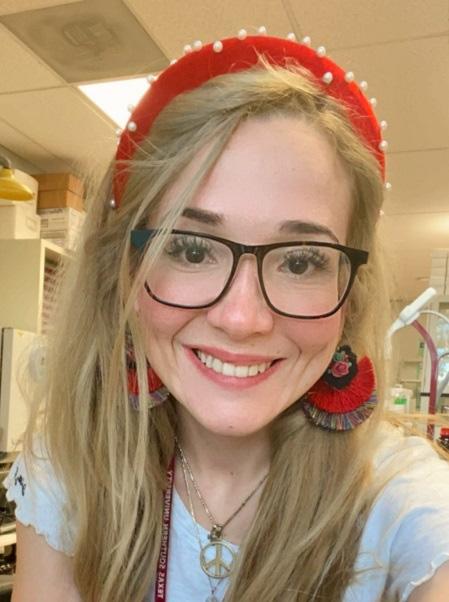
The Effect of Increasing Gastric pH Upon the Oral Bioavailability of a Novel Antileishmanial Agent
Maria Rincon Nigro Faculty Advisor: Dr. Dong Liang Pharmaceutical & Environment Health Sciences
OJT007 is a novel class of drug with potent antiproliferative effects against Leishmania Major Previous studies from our group have determined that OJT007 has a low oral bioavailability due to presystemic metabolism[1,2]. Nonetheless, the varied pH conditions through the gastrointestinal tract may reduce oral bioavailability for drugs with pH dependent stability. Thus, we hypothesize that drug degradation under acidic conditions may contribute towards OJT007 low oral bioavailability. The purpose of this study was to determine the effect of acid stability on the oral bioavailability of OJT007 both in vitro and in vivo. We evaluated in vitro the stability of OJT007 in various buffers (pH 1.210). We further validated the in vitro indings by evaluating the effect of controlled gastric conditions in rats as done by others[3]. The in vitro degradation was rapid at pH 1.2-3, and by 0.5 hours 50% or less remained of the drug. These results suggest that OJT007 is likely to be unstable on stomach pH. Following pretreatment with rabeprazole, statistically signi icant reductions of approximately 40% in Cmax and AUC0-∞ were observed compared to OJT007 alone. OJT007 exhibited poor stability at acidic pH. We hypothesize that this is caused due to OJT007 being a Schiff base. OJT007 contains an imine functional group that could be prone to acid-catalyzed hydrolysis. Nonetheless, increasing gastric pH did not increase exposure possibly due to low solubility of OJT007 at high gastric pH. In summary, low oral bioavailability for OJT007 is not signi icantly due to acid degradation but due to low solubility.
References
[1] M. Rincon-Nigro, J. Ma, O. Awosemo, O. Olaleye, D. Liang. Oral Bioavaialability and Pharmacokinetics of a Novel Antileishmanial Agent OJT007. Presented at 2019 AAPS PharmSci 360, San Antonio, TX, 2019.
[2] M. Rincon-Nigro, T. Du, S. Gao, D. Liang. In Vitro Glucuronidation of OJT007, A Novel Methionine Aminopeptidase Inhibitor in Liver Microsomes. Presented at 2021 AAPS PharmSci 360,Virtual, 2021.
44

[3] Y. Kosugi, S. Yamamoto, N. Sano, A. Furuta, T. Igari, Y. Fujioka, N. Amano, Evaluation of Acid Tolerance of Drugs Using Rats and Dogs Controlled for Gastric Acid Secretion, Journal of Pharmaceutical Sciences. 104 (2015) 2887–2893. https:// doi.org/10.1002/jps.24401.
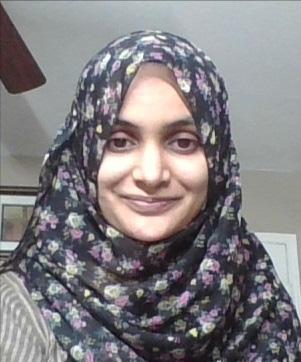
Impact of Host Physiological and Pathological Conditions on the Activity of Gut Microbial Beta-glucuronidases Towards Hydrolysis of Baicalin
Nyma Siddiqui
Faculty Advisor: Dr. Song Gao
Department of Pharmaceutical Science
Purpose: The purpose of this study is to determine the impact of host physiological and pathological conditions on the activity of (GUS) towards hydrolysis of baicalin.
Method: Fecal S9 fractions were prepared using feces collected from different types of rats at different ages using baicalin as the substrate. A Shimadzu UPLC system was used to quantify the metabolite baicalein to analyze the rate of the reaction of the enzymes. The rates were compared by obtaining enzymes through S9 fractions to con irm microbiota ability to hydrolyze the glucuronide and release of the parent compound, baicalein. Fecal S9 prepared from F344 rats at three different ages (i.e., 5, 9, and 16 weeks) and different in lammatory conditions treated with DSS or antiin lammatory agent XCHT. Additionally, fecal S9 from genetically modi ied PRIC rats, which spontaneously have in lammation in the colon, was also tested.
Results: The results depicted that age had an impact on hydrolysis of the compound baicalin into its parent compound and this method was best suited to determine the rate of hydrolysis. The p<0.05 making the results statistically signi icant. The wild type enzymes had a clear increase in Km and Vmax . While, PRIC enzymes and enzymes treated with DSS and XCHT had a clear difference in rates but the Km and Vmax did not increase signi icantly.
Conclusion: The data shows that microbial GUS activity was higher at elder age. Fecal S9 from PRIC rats has lower activity and anti-in lammatory agent XCHT can increase microbial GUS activity.

A Local Analysis of Of icer Involved in Shootings
Olumuyiwa Ezekiel Soyele & Jack Sevil
Faculty Advisor: Dr. Howard Henderson Administration of Justice
Police shootings have remained a thorn in the side of American democracy. Responsibility has been placed on implicit bias, structural inequities, and individual liberties. The overwhelming majority of research has focused on national level analysis with limited appreciation for local nuances or of icer characteristics. This study seeks to determine the interaction effect of race, gender, shooting location and contextual factors on police shootings by the Houston Police Department. To overcome the challenges associated with using a population’s racial representation as the benchmark, we will use race speci ic violent crime measures as ours. Multinomial regression will allow us to determine the factors that best predict the race of the individual shot by the police. Consistent with previous research, our preliminary indings suggest that Blacks are more likely than White or Hispanics to be shot by the police. Findings also demonstrate that this reality exists even in cities with low citizen-to-of icer involved shootings. We conclude with our research implications and a series of recommendations that will improve approaches to understand and reduce police shootings.
45


Teleworking and Telelearning: The Next Generation Valencia Stewart, Dr. Gwendolyn Goodwin
Faculty Advisor: Dr. Gwendolyn Goodwin
Transportation Studies
Before the COVID-19 pandemic, traf ic congestion remained a regular part of life for commuters. The rapid onset of the pandemic dramatically decreased work and school-related commuting for almost all households. Instead, most households migrated from face-to-face learning and in-of ice work to newly created and modi ied virtual platforms. However, the technological requirements for accessing these virtual platforms elevated the already contentious conversation regarding equity (also referred to as the “digital divide”) in learning for students and workplace options for employees. This research investigates the experiences of telelearning, teleworking, and internet usage in three counties (rural, urban and suburban) in the North Central Texas Council of Governments Metropolitan Planning Area during the early months of the COVID-19 pandemic.
The research examined socioeconomic data and school ratings from the Texas Education Agency. American Community Survey data provided the background of the urban, rural, and suburban communities. This data included equipment (computer), internet access, and internet subscription-based on income.
The data and literature show that inadequate resources/equipment and limited access to internet posed complications to learning and working. While most households reported computers/smartphones, the lack of internet subscriptions could be a larger problem for lower-income households. Technology issues, income barriers, rural distance, and insuf icient support also increase the digital divide. Solving technological issues could increase the use of telelearning and teleworking, which may encourage more schools and companies to use these options after the COVID-19 pandemic ends.
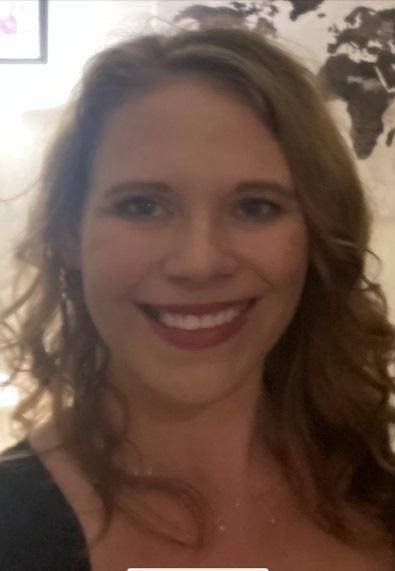
In Vitro Metabolism of Polydatin by Fecal Microbial Enzyme
Robin Sunsong
Faculty
Advisor:
Dr. Song Gao
Pharmaceutical & Environment Health Sciences
Polydatin is a lavonoid glycoside that can be hydrolyzed in the gut following oral administration to release the aglycone resveratrol, a well-known compound possessing many biological activities. It is still unknown whether ef icacy is achieved from the glycoside (polydatin), for which absorption is low, or from the aglycone (resveratrol), which is readily absorbed. The purpose of this study is to determine the impact of experimental conditions, such as age and disease model, on the hydrolysis rate by intestinal microbiota.
Fecal S9 fractions were isolated and prepared from rat feces from multiple populations (i.e., wild-type, tumor model, dug induced colitis, etc.) To determine the hydrolysis rate, different concentrations of polydatin were incubated with the fecal S9 fractions at a inal concentration of 10 μg/mL. The reaction was terminated after 60 minutes using 6% formic acid in acetonitrile. Samples were then collected, and the concentration of resveratrol was quanti ied using a Waters Acquity HClass Ultra performance liquid chromatography (UPLC) system.
The metabolic studies showed that polydatin can be easily hydrolyzed by fecal S9 fractions prepared from gut micro lora to release resveratrol. Comprehensive evaluation and quanti ication of both compounds provides further insight into increasing therapeutic understanding of these lavonoids and prevention of potential toxicities.
46


An Analysis of 2019 Home Mortgage Disclosure Act Data
Lisa Eze, Omokhuwele Umoru
Faculty Advisor: Dr. Daniel Vrinceanu Physics
This interpretive research project used mortgage application data made available through the 2019 HMDA to build a logistic regression machine learning model that identi ies possible discriminatory lending practices based on race, age, gender, and income. The Home Mortgage Disclosure Act (HMDA) keeps, reports, and publicly discloses loan-level information on mortgages. This collected data is intended to reveal whether lenders are meeting the housing needs of their communities, provide information to public of icials to help them make decisions and regulations, and throw light on potentially discriminatory lending habits (CFPB). We arrived at our conclusions through exploratory data analysis with an interactive tableau reader that identi ied trends. We then utilized Jupiter notebooks and the pandas library to clean and encode the dataset. The aim was to develop a predictive model with a relatively good F1 score and it was a success. These algorithm models and presentations are based on a presentation we gave at the Rice Datathon in 2022. Even though our research was limited owing to time constraints, it revealed a tendency of minorities to receive government-backed loans at a higher rate than their white counterparts. We identi ied the approval for a government-backed loan as the dependent variable and utilized Binary, ordinal, and one-hot encoding to transform the data.

An ongoing study of the cell-speci icity of breast cancer driven by mutant p53
Abie Williams-Villalobo Faculty Advisor: Dr. Yun Zhang Pharmaceutical & Environment Health Sciences
Breast cancer is one of the most commonly diagnosed cancers and the second leading cause of cancer death among women. In females, the epithelium forms into a branching structure consisting of an outer basal myoepithelial layer of cells and an inner luminal cell layer. These basal and luminal cells differentially express cytokeratins; cytokeratin 5 mark basal cells, whereas cytokeratin 8 mark luminal cells. It remains unclear whether and how these different cellular origins contribute to the cancer development differentially. Genetic alterations in breast cancer most frequently occur in p53, with majority of p53 mutations occurring somatically at arginine 248 (R248; R245 in mice). We propose to model mutant p53 driven-breast cancer using the previously generated conditional mouse p53wm-R245W allele that allows WT to mutant p53 conversion in response to Cre. Mutant p53 will be induced in the myoepithelial or luminal cells in the mammary epithelium, by delivering the adenovirus expressing Cre controlled by K5 or K8 promoter into the mammary ducts of p53wm-R245W/+ mice, respectively. Upon successful induction of p53R245W driven mammary tumors initiated from the myoepithelial or luminal cells, we plan to investigate the cell-speci icity of mammary tumors at the transcriptomic and genomic levels using RNA sequencing and whole-exome sequencing. We believe that this study will further improve our understanding of breast cancer, which may ultimately allow tailoring of therapeutic strategies to the fundamental molecular lesions driving a particular tumor.
47


The TSU SHAPE Initiative CHANGE: Assessing the Relationship Between Social Connectedness and Mental Health During the COVID-19 Pandemic
Akayla Jones, BSW, TSI CHANGE Health Promotion Specialist
Shenetha Harrison-Toliver, eMPA, BS, TSI CHANGE Project Director
Dr. Grace A. Loudd, LMSW, TSI YES Project Director
The COVID-19 pandemic brought with it an unprecedented need to socially distance with many involuntarily isolated far longer than they could have imagined. With social connectedness being a protective factor against negative mental health outcomes (Nitschke et al., 2020), many were forced to ind outlets for maintaining those connections through increased phone calls, drive-through celebrations, and enhanced virtual telecommunication platforms. Initial studies examining mental health impacts of the pandemic are inding that older adults may be experiencing better mental health outcomes and more social connectedness (Gregory et al., 2021; Magson et al., 2021) than adolescents (Liu et al., 2022) or even college students (Lederer et al., 2022). These studies are preliminary and reporting data captured within the irst six weeks or even the irst several months of pandemic isolation. Two years into the pandemic, assessing the relationship between self-reported mental health outcomes and social connectedness may provide a better outlook of one’s resilience and whether current indings still align with initial indings. The TSU SHAPE Initiative CHANGE program is a sexual and mental health service program for adults 18 years of age and older throughout the Greater 3rd and 5th Ward communities. Initial assessment indings indicate most program participants of all ages reporting strong connectedness with family (62%) and satisfaction with personal relationships (85%); however, this presentation will compare and report on the association between social connectedness and mental health outcomes (depression, anxiety) among participant cohorts enrolled within the irst two years (2020 and 2021) of the COVID-19 pandemic.


 Barbara Jordan-Mickey Leland School of Public Affairs
Barbara Jordan-Mickey Leland School of Public Affairs
48


Implementation of 1st Clinical Research and Engagement Conference through NIH-Funded
Community Engagement Core of Center for Biomedical and Minority Health Research at TSU
Dr. Veronica Ajewole, Dr. Grace Loudd, Dr. Uche Ndefo, Evelyn Casas
Pharmacy Practice & Clinical Health Sciences
Abstract
Background:
Health disparity is a health difference that is intricately linked with social, economic, and/or environmental disadvantage. Racial disparities in healthcare can have a signi icant impact on patient outcomes and survival. Many clinical trials focus on representing the demographics of the United States without considering the increased disease burden in ethnic minority population. While chronic disease rates are higher among ethnic minority, representation of ethnic minorities in clinical trials remains low. In 1993, the National Institutes of Health (NIH) Revitalization Act, was passed by congress to lead the federal agency’s inclusion of women and minorities in clinical studies to promote clinical research equity. As a result, over the past 27 years, gender participation has leveled off with 72% female participation in clinical trials in 2019. However, in the United States , clinical trials continue to lack racial and ethnic diversity. As of 2019, African Americans accounted for 13.4% of the total U.S population and only 9% participated in clinical trials whereas Caucasians represented 76.5% of the U.S. population and 72% participated in clinical trials.16, Understanding the safety and ef icacy of drugs for all patients hinges on the participation of diverse racial and ethnic subgroups. This disproportionate participation of ethnic minority in clinical research limits their ability to fully bene it from biomedical research advances (including access to cutting-edge therapies) and contributes to racial health disparities. The shared barriers to health research participation reported by ethnic minority includes mistrust, lack of access to information, competing demands, stigma, health insurance status, and legal status in the U.S. Given these facts, implementation of a multifaceted approach to promote increased participation of ethnic minority in clinical research becomes crucial.
Objective:
The objective of the Clinical Research and Engagement Conference is to educate and address barriers (mistrust, lack of access to information, competing demands, stigma, health insurance status, and legal status) to ethnic minority participation in clinical research.
Methods:
The Community Engagement Core of the NIH-funded (NIMHD U54 RCMI 2U54MD007605-27A1) Center for Biomedical and Minority Health Research at TSU implemented 1st Annual Clinical Research and Engagement Conference in April 2021. Conference speaker sessions included “Should I Participate in Clinical Trials?”; “Ethics & Clinical Trials”; “Issues with Children in Clinical Research”; “COVID-19 Treatment, Trials & Minority Health”; and “Pre-Clinical Trials and the 4 Phases of Clinical Trials”. Clinical trial panel session included previous ethnic minority clinical research participants, clinical trial principal investigators, research coordinators, and clinical research support staff. Skits in English and Spanish language were also included in the conference.
Results:
97 individuals attended the Clinical Research and Engagement Conference held virtually on zoom. Attendees consisted of diverse individuals from the greater Houston community. 45 individuals completed the post-conference survey among which 30 (66.67%) were African Americans.
29 (64.4%) attendees stated very good understanding of clinical trial enrolment while 42 (97.6%) stated that the event addressed their concern or misconceptions about clinical trial process.
Conclusion:
The 1st Clinical Research and Engagement Conference was successful with feedback from attendees indicating positive impact in addressing the gap in clinical trail participation among ethnic minority population.
49


Characterization of the Cell Cycle Dependent Kinase Inhibitor p27KIP1 in the Stem-like Properties of Breast Cancer Stem Cells
Dr. Erica Cassimere
Department of Biology
Breast cancer is the second leading cause of cancer death among American women. Traditional therapies, such as chemotherapy and radiation therapy, do not provide long-term survival in part due to a population of tumor initiating cells known as breast cancer stem cells (CSCs). Two features of CSCs are that they slowly divide and are more resistant to conventional anti-cancer treatments. However, the mechanism underlying breast CSCs resistance remains poorly de ined. p27kip1 is a member of the Cip/Kip family of cyclin-dependent kinase inhibitors (CDKI) that negatively regulate cell cycle progression. Since p27kip1 levels are highly elevated in quiescent cells and decreased as cells proliferate, we hypothesized that p27kip1 is a potential mediator of stem-like properties in breast CSCs. Using in vitro assays, we observed that p27kip1 protein levels were markedly enhanced in stem cells isolated from metastatic breast cancer cell lines compared to non-metastatic breast CSCs. Moreover, depletion of endogenous p27kip1 dramatically reduced the survival of breast CSCs from metastatic breast cancer cells. p27kip1 levels were unaltered at the transcriptional and translational levels. However, p27 protein levels are primarily controlled posttranslationally by a series of phosphorylation events which either targets p27 for ubiquitin-dependent degradation or relocalizes p27 to the cytoplasm. Interestingly, through inhibition of de novo protein synthesis, our data revealed that p27kip1 protein levels remain elevated in breast CSCs compared to non-breast CSCs. Based on these indings, p27kip1 is a potential regulator of the stem-like nature breast CSCs and may serve as an attractive target to eradicate breast cancer.

Lessons Learned: TSU Automated Vehicle Shuttle Faculty: Dr. Carol Abel Lewis; Dr. Gwendolyn C. Goodwin Graduate Research Assistants: Lydia Ndagire Agency Partners: Kim Williams and Jamila Gomez (METRO), Thomas Gray (Houston Galveston Area Council) Transportation Studies
The Texas Southern University (TSU) Automated Vehicle (AV) shuttle began as part of the University District Automated Vehicle corridor, where the shuttle will ultimately service TSU, a Metropolitan Transit Authority of Harris County (METRO) light rail station, the nearby University of Houston and eventually METRO’s Eastwood Transit Center. The TSU AV serviced a ½ mile route centered along TSU’s “Tiger Walk” promenade. Operational data are from June 2019 to February 2020, including the hot summer months of July and August and during a rare Houston October freeze. The primary purposes of the research were to gain insight into the operational characteristics of the AV during fair and inclement weather, acquire knowledge of battery capabilities during temperature variations, and assess perspectives of riders and vehicle attendants. The researchers learned that the vehicle performance was ine during fair weather and in light rain; however, it was unable to maintain operation during a heavy rain. Battery life is an important consideration, especially in climates with extremely warm summers such as Houston. Hot weather, engaging the air conditioner or heater and use of USB ports impacted battery life. Acceptance from the student, faculty and staff and visitor populations were enthusiastic and people were generally not intimidated by the automated nature of the vehicle.
50


PURPOSE
Exploring the Link Between COVID-19 and Gut Microbiome – A Study of the TSU Community
Dr. B. LI; Dr. A. Terwilliger; Dr. M. Mezzari; Dr. Z. Youse ipour; Dr. I. Poon; Dr. E. Donnachie; Dr. A Maresso; Dr. R Britton; Dr. Z Lyu Texas Southern University (BL, ZY, IP, ED); Baylor College of Medicine (AT, MM, AM, RB, ZL) Pharmacy Practice & Clinical Health Sciences
Monitoring SARS-CoV-2 virus through wastewater has been adopted as an effective surveillance approach of COVID-19 pandemic. This study innovatively examined the longitudinal dynamics of COVID-19 and microbiome across various sewage samples representing diverse demographic populations in Houston.
METHODS
We collected wastewater through manholes and the viral RNA levels of SARS-CoV-2 were monitored from December 2020 to present. The sampling sites serve the greater Third Ward area and Texas Southern University campus, as well as nursing homes, rehabs, and shelters across the metro Houston area, respectively. The viral load was analyzed by the gold standard RT-qPCR method, and the microbiome load and composition by qPCR and amplicon sequencing of the 16S and ITS DNA.
RESULTS / EXPECTED RESULTS
Preliminary results on the dynamics of SARS-CoV-2 viral load indicated diverse trends among sampling sites. These viral trends could be classi ied into three basic categories: lat, up and down, and up, suggesting disparities in COVID-19 infections among communities. The analysis of microbiome is underway, but a preview of the data revealed that bacteria and fungi commonly seen in the human gut predominated the wastewater samples. This paves the way to exploring the link between COVID-19 and the gut microbiome, which could shed light on the observed COVID-19 disparities.
DISCUSSION / CONCLUSION
As a proof-of-concept, our sewage bio-monitoring program was able to capture COVID-19 viral, bacterial, and fungal signals longitudinally from manholes serving a wide range of communities. Because these signals are predominantly humanassociated, further analysis of these signals could offer insight on COVID-19 related disparities among these communities.
GRANT SUPPORT NIH FUND # U54MD007605

Health-Related Topics Interest to Underrepresented Minorities (URMS) in the Greater Houston Community
Dr. Uche Anadu Ndefo, Dr. Veronica Ajewole, Dr. Grace Loudd, Evelyn Casas Pharmacy Practice & Clinical Health Sciences
Background
Texas Southern University (TSU) has a long history of implementing community engagement outreach efforts addressing health disparities through established partnerships and collaborations with healthcare systems, Federally Quali ied Health Centers (FQHCs), and community-based organizations (CBOs). The Community Engagement Core (CEC) within the Center for Biomedical Minority Health Research (CBMHR) leverages TSUs’ many long-standing partnerships and collaborations to identify the health-related concerns of the underrepresented minorities (URMs) and provide education on the topics identi ied. Upon identi ication of these health-related concerns, programming will be provided to the community educating them on the prevention and treatment of these conditions, bridging the gap between the university and the community and increasing health literacy in the community.
Methods
Initially, monthly seminars were based on various topics identi ied by the CEC staff from the literature. Each month, different experts in the community present on the identi ied topic, usually paired with a healthy lifestyle activity such as exercise or
51

healthy cooking tips. At the conclusion of each monthly seminar, participants are invited to complete a survey where they are asked what topics they would be interested in learning more about.
Results
The survey was distributed over a 2-year period with 165 responses. Participants were provided with the following options and provided with the option to write in any topic of their choice. Options provided were: chronic kidney disease, respiratory disease (asthma and COPD), diabetes, high blood pressure, mental health, immunizations, heart disease & stroke, exercise, nutrition, & weight management, breast cancer, colon cancer, prostate cancer, and lung cancer. The top 5 most commonly requested health topics were cancer (combination of breast, colon, prostate, and lung cancer - 17.6%), mental health (16.4%), hypertension (13.9%), diabetes (13.3%), and exercise, nutrition, and weight management.
Conclusion
Underrepresented minorities in the Greater Houston Area are interested in learning more on prevention of various cancers. Chronic diseases continue to be a concern on how to prevent and manage these disease states which may be attributable to the disproportionate amount of underrepresented minorities affected by these disease states. Mental health has been thrust to the forefront with the increased acknowledgement of mental health since the pandemic. The CEC will tailor it’s programming in the upcoming years to provide the education requested by the community.
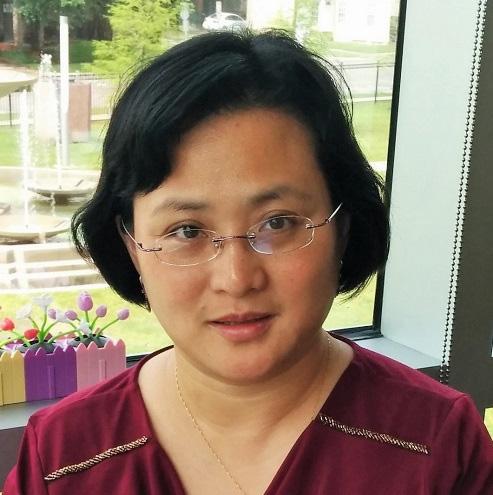
Impacts of COVID-19 on Public Transit Ridership
Dr. Yi Qi, Dr. Jinli Liu, Dr. Tao Tao, and Dr. Qun Zhao Department of Transportation Studies
In this paper, a national-wide study is conducted to investigate the impacts of COVID-19 on the public transit ridership in the top twenty metropolitan areas in the U.S. At irst, COVID-19 composite index was developed to qualitatively measure the level of public fear toward COVID19 in different metropolitan areas. After that, to analyze the impact of COVID-19 and some socioeconomic factors on transit ridership reduction during the COVID-19 pandemic, a randomeffects panel data model was developed and the traditional correlation analysis was also conducted. According to the results of both analyses, it was found that the areas with higher median household income, a higher percentage of the population with a Bachelor’s degree or higher, higher employment rate, and a higher percentage of the Asian population are more likely to have more reductions in public transit ridership during the COVID-19 pandemic. On the other side, the areas with a higher percentage of the population in poverty, and a higher percentage of the Hispanic population are more likely to experience smaller reductions in public transit ridership.

Machine Learning Modeling Based of Transportation Equity Analysis by Comparing In-Service Performance of Roadside Safety Devices
Dr. Fengxiang Qiao Transportation Studies
Transportation equity plays an important role in modern communities, and a fair distribution of transportation infrastructures is vital as an integral part of transportation planning process. The InService Performance Evaluation (ISPE) satis ies transportation safety requirements by identifying the problems of roadside safety devices during installation and maintenance process. There is still a lack of equity research speci ically focusing on the deploying of roadside safety devices associated with ISPE results. With proper comparison of in-service performance results in different areas, the importance of ensuring transportation equity of all communities and areas in the decision-making process is able to be demonstrated. This study utilizes Machine Learning models to analyze linked crash and roadway data related to major roadside safety devices implemented in Texas. Three typical roadside safety devices are selected to be assessed, including: (1) guardrail, (2) median barrier, and (3) bridge rail. By comparing both statistical and Machine Learning based modeling
52

analysis with rural and metropolitan areas in speci ic counties, it is demonstrated that distributions of crashes that end up causing heavy property damage or serious injuries is higher in rural communities regardless of its lower crash frequency. The data analysis result suggests that parameters related to roadway conditions and transportation infrastructures tend to have higher in luence over the performances of rural safety devices. Additional one year of crash data analysis also addresses the importance of transportation equity under the COVID-19 pandemic period. Recommendations on improving overall equity and Environmental Justice (EJ) within all regions are conducted with stated indings.
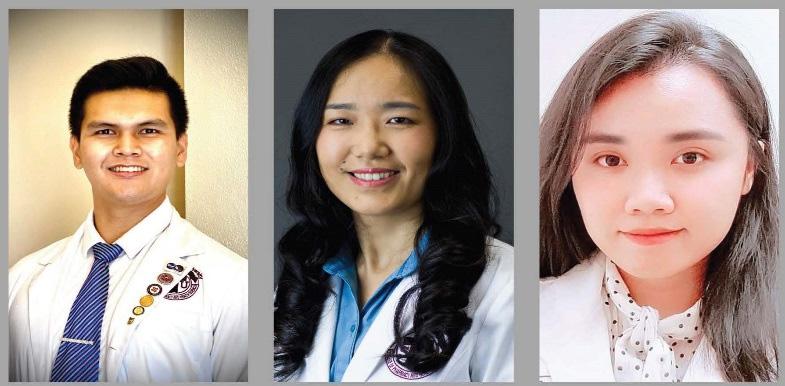
The Evolution of Antiretroviral Therapy for Hospitalized Patients with HIV Support: The project was supported, in part, by the National Institute on Minority Health and Health Disparities of the National Institute of Health under Award Number 2U54MD007605-27A1
Dr. Hongmei Wang; Dr. Vincent Tran, Dr. Nhat Anh K. Tran
1 Department of Pharmacy Practice, Texas Southern University College of Pharmacy and Health Sciences,
2 Department of Pharmacy, Houston Methodist Hospital, Houston, TX, USA
HIV is a signi icant public health threat globally. The National HIV Surveillance System estimated that 1.2 million people living with HIV in the United States, over half of them aged by 2020. Aging with HIV presents particular challenges, including comorbidities such as cardiovascular diseases, lung diseases, and other chronic diseases. Treatment of the comorbidities exposed them to a high risk of polymedicine and potential drug-drug interactions. HIV treatments have been revolutionized due to highly active antiretroviral therapy with the new formulations that carry fewer drug interactions and pill burden. However, it is not yet known how the revolutionized antiretroviral treatment affects hospitalized HIV patients. This study aimed to retrospectively investigate the prevalence of HIV treatment types and identify gaps to ill in clinical practice to improve medication adherence and minimize harm to patients. This study was a single-center retrospective study at the Houston Methodist Hospital with a primary objective of evaluating the evolution of treatment in HIV-positive patients on antiretroviral therapy. We found that protease inhibitor combined with boosters had still been broadly used, which frequently led to signi icant drug interactions. Further analysis on pill burden reported a gap to improve in the new era of simpli ied antiretroviral therapy. Taking together, our indings suggest that drug interactions continue to be a concern for HIV patients receiving antiretroviral therapy. Clinicians should proactively review treatment regimens and optimize the regimens to improve patient management in our hospital.
Disclosures: The authors declare that there is no con lict of interest related to this study.

Bone Tissue Engineering: Bio Fabrication Of Three-Dimensional Osseous Tissue Constructs Using Modelled Microgravity Bioreactor
Dr. Vivek Mann, Dr. Alamelu Sundaresan, Dr. Daniella Grimm
Bone loss in microgravity is the second most important risk to space missions. Long duration space travel subjects’ astronauts to microgravity, harmful radiations, immobilization and isolation. All of these can have harmful effects on human physiology. The lack of weight-bearing forces makes microgravity an ideal physical stimulus to evaluate bone cell responses. The mystery, for the moment, is what signals permit bone tissue to adapt to a weightless or an Earth (1 g) environment. Researchers do not yet know whether the biomechanical stimuli that are changed by microgravity directly affect osteoblast and osteoclast function or if other physiological factors such as hormone levels or poor nutrition contribute to bone loss.
53

Researchers are not yet certain whether bone resorption speeds up or the bone formation slows down, though recent experimentation in space indicates that microgravity might somehow affect both processes. Progress in developing methods of preventing or treating disuse atrophy and osteoporosis depends on better understanding the mechanisms that cause the problem. Bone grafts and substitutes are widely used in orthopedic surgeries for numerous applications. Although the most heavily investigated area in bone tissue engineering is the creation of appropriate scaffolds from a wide-range of materials. In our studies we have employed hFOB cell line modeled microgravity analogues, with the purpose of improving bone engineering properties of 3D scaffolds.
By studying what mechanisms translates mechanical stress on bones into biochemical signals that stimulate bone formation and resorption, space life scientists may be able to determine how to maintain bone mass.






Library & Learning Center

54

HONORS COLLEGE CONFERENCE
First Biannual Thomas Freeman Research Conference
Sterling Student Life Center
GENERAL SCHEDULE
8:30 – 9:00 am Continental Breakfast
9:00 – 9:10 am Welcome Address by Dean Dianne Jemison Pollard
9:10 – 9:20 am Greetings from President Crumpton-Young
9:20 – 9:30 am Conference Guidelines, Dr. Hector Miranda
Oral Presentations Schedule, Tiger Room, 3rd Floor
9:30 – 9:50 am Speaker 1: Mark Ddamulira (BS in Civil Engineering and Physics). Learning the Chain Fountain in Steady State Motion, Thomas Freeman Honors College, Texas Southern University
9:50 - 10:10 am Speaker 2: Josephine Tsai (BA in Finance) Number Nine: The Prelude to the End, Honors College, Houston Baptist University
10:10 - 10:30 am Speaker 3. Midhat Jafry (B.S in Biology and Liberal Studies) Delivery of the 5As Tobacco Use Disorder Intervention in Agencies across Texas that Provide Addiction Care for Adults with Substance Use Disorders. The Honors College, University of Houston
10:30 - 10:50 am Speaker 4. Ethan Waddell, Jr. (Bachelor of Business Administration/International Business) Keeper of His Resources. Honors College, Houston Baptist University.
10:50 - 11:10 am Speaker 5. Diego Alejandro Lopez (B.A. in Political Science) Native American Rights in the New World Post Conquest: A Spanish Perspective. The Honors College, University of Houston.
11:10 - 11:50 am Poster Presentations
12:00 - 12:50 pm Lunch, The President’s Lounge. 4th Floor, Tiger Room
Keynote Speaker: Dr. Michelle Marshall-Penn, Vice President for Research and Innovation
Special Recognitions
Oral Presentations, Tiger Room, 3rd Floor
1:00 - 1:20 pm Speaker 6. Nicole Kwan (B.S. in Philosophy) Can Peer Specialists Replace Therapists? A Look at the Benefits and Limitations of Peer Counseling. Southwest Honors College, Houston Community College.
1:20 - 1:40 pm Speaker 7. Carolina Graca. Thomas Freeman Honors College, Texas Southern University
1:40 - 2:00 pm Closing Remarks: Dr. Hector Miranda, Conference Chair
Dr. Linda Gardiner, Director, Office of Research
Dr. Dianne Jemison-Pollard. Dean, Thomas F. Freeman Honors College
55


TSU Research Center Overview Sessions 8:30 - 10:00 AM
Greetings Dr. Linda M. Gardiner, Director, Research Enhancement and Compliance Services
About the Event
TSU Research Center representatives will provide a 5-minute overview about their research center, including current studies; how others may get involved, and the affects of ongoing studies. Speakers will occur in the following order and times:
• Dr. Howard Henderson (8:30-8:35 AM)
• Dr. Fengxiang Qiao/Dr. Lei Yu (8:36-8:41 AM)
• Dr. Gwendolyn Godwin (8:42-8:47 AM)
• Dr. Daniel Vrinceanu (8:48-8:53 AM)
• Ms. Karen Stewart (8:54-8:59 AM)
• Dr. Denae King/Dr. Robert Bullard (9:00-9:05 AM)
• Dr. Ashraf Mozayani (9:06-9:11 AM)
Join the Event: https://tsu-edu.zoom.us/j/86538090950
1 346 248 7799 or 1 253 215 8782 or 1 408 638 0968 Webinar ID: 865 3809 0950
Greetings
About the Event
Dr. Jeffrey Lowe (9:12-9:17 AM)
Dr. Jodi Moon (9:18-9:23 AM)
Dr. Kehinde Idowu (9:24-9:29 AM)
Dr. Dong Liang (9:30-9:35 AM)
Dr. Grace Loudd (9:36-9:41 AM)
Dr. Omonike Olaleye/Dr. Huan Xie (9:42-9:47 AM)
Dr. Veronica Ajewole (9:48-9:53 AM)
Funding Agency Presentations 10:00 AM - 12:00 Noon
Dr. Michelle Penn-Marshall, Vice President for Research & Innovation Dr. Omonike A. Olaleye, Senior Associate Vice President for Research and Innovation
These presentations are agency overviews and information about funding opportunities. The speakers are:
• (10:00 - 10:24 AM) Dr. Rada Dagher, MPH, Scientific Program Director National Institute on Minority Health and Health Disparities
• (10:24 - 10:48 AM) Dr. Michelle M. Le Beau, Chief Scientific Officer Cancer Prevention and Research Institute of Texas (CPRIT)
• (10:48 - 11:12 AM) Dr. Theresa J. Miller, Program Manager for the Kidney Cancer Research Program and the Congressionally Directed Medical Research Programs Department of Defense
• (11:12 - 11:36 AM) Dr. LeRoy Jones, II, Program Director for the Louis Stokes Alliances for Minority Participation (LSAMP) and Historically Black Colleges and Universities (HBCU-UP) Programs National Science Foundation (NSF)
• (11:36 - 12:00 Noon) Darcelle Mitchell, NASA Johnson Space Center, NASA Education Coordinator NASA’s Johnson Space Center (JSC) Office of STEM Engagement
Join the Event: https://tsu-edu.zoom.us/j/81307603482
1 346 248 7799 or 1 253 215 8782 or 1 408 638 0968
Webinar ID: 813 0760 3482
56 ***
***
Virtual Events


Speaker: Rada Dagher, Ph.D., MPH, Scientific Program Director Agency: National Institute on
Minority Health and Health Disparities

Dr. Rada Dagher is a Scientific Program Director at NIMHD. She manages a diverse portfolio of research, capacity building, and training grants, and is a project scientist on several cooperative agreement awards. Dr. Dagher is the program director for the Ruth L. Kirschstein National Research Service Award Fellowships as well as the Mentored Career Development Awards and represents NIMHD on multiple NIH-wide committees including NRMN/BUILD (National Research Mentoring Network/Building Infrastructure Leading to Diversity). Prior to joining NIMHD, Dr. Dagher worked in academia where she conducted research in maternal and child health, mental health, occupational health, and health disparities. Her research focused on the determinants of postpartum depression and the impact of this disorder on healthcare use. She also studied the impact of employment policies and psychosocial work organization on workers’ mental and physical health, and gender and racial/ethnic disparities in mental health and mental health services. She has amassed numerous publications in prestigious journals. Dr. Dagher’s education in public health began at the American University of Beirut where she received both her BS in Environmental Health and MPH degrees. She then obtained a PhD in Health Services Research, Policy, and Administration from the University of Minnesota. Dr. Dagher has earned numerous accolades including being inducted in the Delta Omega Honorary Society of Public Health and being selected for the AAAS Science and Technology Policy Fellowship. She also received the American Public Health Association’s Young Professional Award for her contributions and leadership in science, program, and policy relating to the health of women, children, and families. In 2021, she received the NIH Director’s Award in the Scientific/ Medical Category for leading urgent, innovative, mission-critical NIMHD research initiatives to address the impact of SARS-CoV2 and the COVID-19 pandemic on minority health and health disparities.

Speaker: Michelle M. Le Beau, Ph.D., Chief Scientific Officer Agency: Cancer Prevention
and Research Institute of Texas (CPRIT)
Dr. Le Beau leads CPRIT’s Academic Research Program in supporting innovative cancer research and recruiting world-class cancer researchers to Texas institutions. Her distinguished research career has focused on basic and translational research. She is recognized for her work identifying recurring chromosomal abnormalities and defining the clinical and genetic subsets of leukemia, characterizing the genetic pathways that lead to hematological malignancies, and the application of fluorescence in situ hybridization for clinical diagnostics and gene mapping.

Dr. Le Beau has also studied therapy-related neoplasms (t-MN), an aggressive myeloid leukemia developing after therapy for a primary malignancy. Dr. Le Beau and her colleagues are credited with recognizing several distinct cytogenetic and clinical subtypes of t-MN that are closely associated with the nature of the preceding treatment and are now recognized by the World Health Organization classification.
Prior to joining CPRIT in October 2021, Dr. Le Beau was the Arthur and Marian Edelstein Professor Emerita of Medicine and Director Emerita of the University of Chicago Medicine Comprehensive Cancer Center, which she led for 17 years. She is the recipient of the 2020 Henry M. Stratton Medal from the American Society of Hematology. The medal, one of the cancer field’s top honors, recognizes investigators who have made well-recognized contributions to hematology research. Dr. Le Beau also received the 2020 American Association for Cancer Research’s Margaret Foti Award for Leadership and Extraordinary Achievements in Cancer Research. This prestigious award recognizes a champion of cancer research whose leadership and achievements have had a major impact on the field.
A graduate of Purdue University, Dr. Le Beau earned her M.S. and Ph.D. in pathology from the University of Illinois at the Medical Center.
Dr. Le Beau is CPRIT’s fourth chief scientific officer. She replaced Dr. James K.V. Willson, M.D., who retired after serving CPRIT’s chief scientific officer since 2016. He was preceded Dr. Margaret Kripke (2012 – 2016) and Nobel Laureate Dr. Alfred Gilman (2009 – 2012).
Abstract:
CPRIT: Funding Cancer Prevention and Research to Help Texans Conquer Cancer
In establishing CPRIT, the Texas Legislature directed CPRIT to grow Texas’ cancer fighting ecosystem and accelerate breakthroughs in cancer prevention and cures. CPRIT advances its mission by awarding merit-based, peer-reviewed grants to Texas-based entities and institutions for cancer-related research, product development, and the delivery of cancer prevention programs through three programs: • The CPRIT Academic Research Program supports the most innovative cancer research projects in Texas with an emphasis on funding projects in critical, but underfunded, areas of cancer research. CPRIT supports research in early detection and prevention,
57

basic, and clinical research. Also important to developing Texas' life sciences infrastructure are awards for recruitment of preeminent researchers, the investment in core facilities providing the most up-to-date technologies needed for cutting-edge cancer research, and training programs that develop the next generation of researchers and increase the diversity of the workforce.
• CPRIT’s Product Development Program funds projects at Texas-based companies developing novel products or services to benefit cancer patients. Product development activities translate novel laboratory findings into cancer drugs, diagnostics, and therapies available to all Texans.
• The Prevention Program supports evidence-based interventions across the cancer prevention continuum that are culturally appropriate for the target population. CPRIT invests in effective community-based interventions so that new technologies and services are made available across the state, with priority given to areas and populations that are underserved.


Speaker: Theresa J. Miller, Ph.D., Program Manager for the Kidney Cancer Research Program and the Congressionally Directed Medical Research Programs Agency: Department of Defense
Dr. Miller joined the Department of Defense Congressionally Directed Medical Research Programs (CDMRP) 2004. She has served as a CDMRP Science Officer and Grants Officer Representative with several research programs within CDMRP. Since 2018, Dr. Miller has been the Program Manager of the Kidney Cancer Research Program (KCRP).
Dr. Miller received a B.S in Biology from Le Moyne College, Syracuse, NY. She completed her Ph.D studies on lipooligosaccharide biosynthesis genes and its role on Haemophilus influenza pathogenesis in the Department of Microbiology at the University of Iowa, Iowa City, IA. Upon obtaining her graduate degree, she conducted a postdoctoral fellowship at the U.S. Food and Drug Administration Center for Biologics Evaluation and Research (CBER) exploring the effects of female reproductive hormones on Neisseria gonorrhoeae pathogenesis. Prior to joining CDMRP Dr. Miller completed a fellowship in the National Institutes of Health Office of Technology Transfer, Rockville, MD.
Her awards include the Patricia Robert Harris Fellowship, Clifford D. Clark Fellowship, American Society for Microbiology (ASM) Robert D. Watkins Graduate Research Fellowship, United Negro College Fund-Merck Graduate Science Research Dissertation Fellowship, and a NIH Intramural Technology Transfer Research Award. She has also been honored with the Superior Service Award Battelle Memorial Institute, Howard Hughes Medical Institute Mentor Award, CDMRP Medal of Service and Certificate of Appreciation, and several staff and service recognition certificates.
Abstract
The overarching mission of Congressionally Directed Medical Research Programs (CDMRP) is to “responsibly manage collaborative research that discovers, develops, and delivers healthcare solutions for Service Members, Veterans, and the American Public.” The CDMRP, located within the U.S. Army Medical Research and Development Command and under the U.S. Army Futures Command, is a global funding organization that fosters novel approaches to congressionally targeted biomedical research areas in response to the expressed needs of its stakeholders. CDMRP-managed programs are diverse but share the common goals of accelerating progress, advancing paradigm-shifting research, developing cutting-edge technologies, and identifying breakthroughs and solutions that will lead to cures, improved patient care, and enhanced quality of life.
Hallmarks of all CDMRP research programs include the fact that all research funds are targeted by Congress and added to the DOD budget on a yearly basis. For fiscal year 2021, Congress appropriated about $1.5 billion (B) to fund 36 research programs, including programs related to cancers, alcohol and substance abuse disorders, and spinal cord injury, among others. CDMRP programs fund the full pipeline of research development, from basic science through clinical trials, as appropriate to the state of the field of each program.
At the outset, CDMRP employed a two-tier process based on recommendations set forth by the National Academies’ Institute of Medicine (IOM). The two-tier review process incorporates the strengths of traditional peer review systems, but also considers relevance to programmatic goals. Consumer advocates participate in both tiers of review, as well as in the development of investment strategies and focus areas. There are no standing peer review panels. Each program’s vision is adapted yearly, and award mechanisms are changed as needed to meet the current needs of the research community. The CDMRP does not use a “pay line,” and applications are recommended for funding based on both their scientific merit and how well they address programmatic criteria.
References:
CDMRP Impact Highlights Booklet: CDMRP Impact Highlights Book.pdf (army.mil).
Congressionally Directed Medical Research Programs 2020 Annual Report: https://cdmrp.army.mil/pubs/ annreports/2020annrep/2020annreport.pdf
58


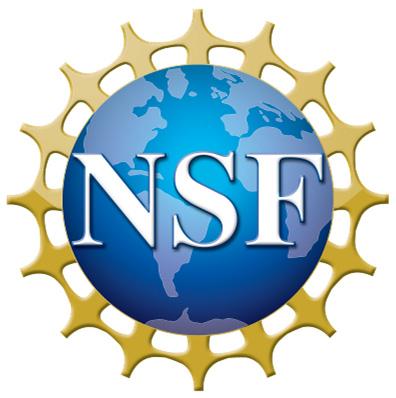
Speaker: Dr. LeRoy Jones, II, Program Director for the Louis Stokes Alliances for Minority Participation (LSAMP) and Historically Black Colleges and Universities (HBCU-UP) Programs
Agency: National Science Foundation (NSF)
Prior to joining the NSF as a permanent program director, he served as the Dean of the College of Arts & Sciences and Professor of Chemistry at Chicago State University.
He received a B.S. degree in chemistry with a minor in religious studies from Bradley University, a Ph.D. in organic chemistry from the University of South Carolina at Columbia and served as a Postdoctoral Scholar in organometallic chemistry at Caltech. Dr. Jones and his wife, Lolita, of thirty years, reside in Highland, Indiana, and have three adult children: Kaiita, Kyerra, and Timothy.
Abstract
Funding Opportunities that Advance STEM Education and Research at Minority Serving Institutions
The National Science Foundation (NSF) is the only federal agency dedicated to the support of non-biomedical research and education across all fields of science and engineering. With over 300 funding opportunities to which an investigator may apply, these opportunities are developed in response to agency-identified priority areas, recognized needs of and requests from science and engineering communities, and congressional interests. Information about all programs and current awards is available online at http://www.nsf.gov/.
The Division of Human Resource Development (HRD) in the Directorate for Education and Human Resources (EHR) serves as a focal point for NSF's agency-wide commitment to enhancing the quality and excellence of STEM education and research through broadening participation by historically underrepresented groups. Programs within HRD have a strong focus on partnerships and collaborations to maximize the preparation of a well-trained scientific and instructional workforce for the new millennium. Today’s presentation will highlight faculty and student funding opportunities that advance STEM education and research at different types of Minority Serving Institutions.
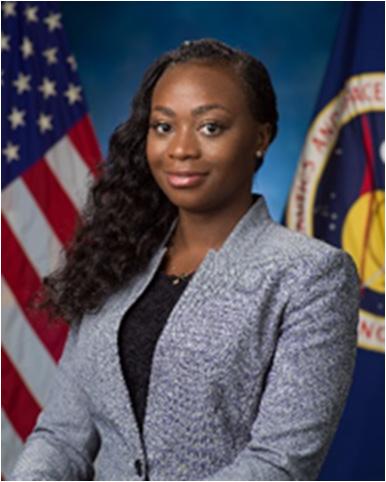
Speaker: Darcelle Mitchell, NASA Johnson Space Center, NASA Education Coordinator Agency: NASA’s Johnson Space Center (JSC) Office of STEM Engagement
Darcelle Mitchell works for Oklahoma State University as a NASA Education Coordinator at NASA’s Johnson Space Center (JSC) Office of STEM Engagement, supporting the MUREP Innovation Tech Transfer Idea Competition (MITTIC). Since coming to NASA nearly three years ago, Darcelle has supported multiple STEM engagement projects designed to enhance the knowledge of NASA’s missions to stakeholders of all ages. Darcelle is an active member of the NASA JSC African American Employee Resource Group, where she is proud to serve as the Event Coordinator leading engagement activities. Before coming to NASA, Darcelle was a 4th and 5th-grade teacher providing training for Dallas Independent School District (DISD) in college readiness and STEM. Before DISD, Darcelle worked as an Education Coordinator and Site Manager for Head Start of Greater Dallas. She received her Bachelor of Science degree in Interdisciplinary Studies from Prairie View A & M University and a Master of Business Administration-Informational Technology Management from Western Governors University. Darcelle is a member of Delta Sigma Theta Sorority, Incorporated. She participates in various local, national, and international events that have the end goal of making progressive changes in our world.
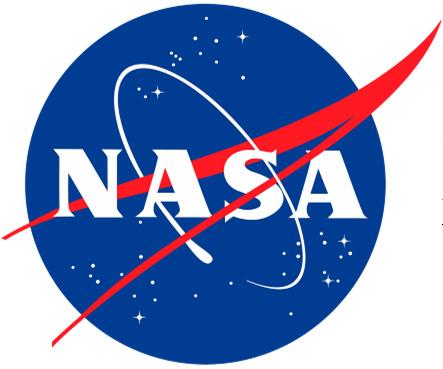
Abstract
NASA’s Minority University Research and Education Project (MUREP) Innovation and Tech Transfer Idea Competition (MITTIC)
NASA’s Minority University Research & Education Project (MUREP) Innovation and Tech Transfer Idea Competition (MITTIC) is a higher education spinoff challenge established to develop new ideas for commercialization by seeking concept papers from multidisciplinary student teams enrolled at a Minority Serving Institution (MSI). Join us to learn about how you can get involved in the next competition!
59

Awards Program / Closing Luncheon
Sterling Student Life Center
Facilitator Linda M. Gardiner, Ph.D.
Director, Research Enhancement and Compliance Services
Opening Remarks Dr. Lesia Crumpton-Young, President, Texas Southern University
Greetings Michelle Penn-Marshall, Ph.D. Vice President, Research & Innovation
Introduction of Speaker Zachary Jamison, Scholar Biology
Speaker Maurice Hew, Jr.
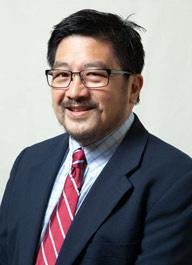
Professor of Law, Thurgood Marshall School of Law, Texas Southern University
11:35 AM ~ ~ ~ Lunch Served ~ ~ ~ 11:50 AM
~ ~ Special Presentations & Awards ~ ~ ~
Closing Remarks
60
~

Education:
J.D., Loyola University School of Law, New Orleans, LA
B.S., Loyola University, New Orleans, LA
Courses Taught
Administrative Trial Practice Immigration LL.M. Administrative Law Clinic
Biographical Information
• Professor, Texas Southern University, Thurgood Marshall School of Law, Houston, TX (2016-Present)
• Director of Clinical Education, Texas Southern University, Thurgood Marshall School of Law, Houston, TX (2012-2015)
• Associate Professor, Clinical Legal Studies Program, and Immigration Clinic Director, Texas Southern University, Thurgood Marshall School of Law, Houston, TX (2005-2016)
Select Publications
• All State Court Convictions for Possession of Drug Paraphernalia Are Not Necessarily Related to Controlled Substances Under the Categorical or Modified Approaches for Immigration Removal, 5 T. Marshall L.J. Gender Race, & Just. 25 (2015).
• Expanding the Civil Privilege of Being Represented by Counsel through the Presumed Prejudice Doctrine, 17 UDC/DCSL L. Rev. 46 (2014).
• Under the Circumstances Padilla v. Kentucky, Erroneously Excuses Fundamental Fairness and Leaves Professional Responsibility Lost, 32 B. C. J. L. & SOC. JUST. 31 (2012).
• The Fourth Amendment's Further Gouging of the Plenary Power Doctrine, 2012 EMERGING ISSUES ANALYSIS 6687 (Oct 2012).
• Crimmigration: Constitutionalization of the Plea Bargaining Process after Missouri v. Frye and Lafler v. Cooper,2012 EMERGING ISSUES ANALYSIS 6298 (April 2012).
• The Supreme Court's Resuscitation of the Fleuti Doctrine In Vartelas, and Its Possible Applications, 2012 EMERGING ISSUES ANALYSIS 6292 (April 2012).
Admissions, Licensures and Certifications
• State Bar of Texas
• College of the State Bar of Texas
• Notary Public for the State of Louisiana
State Bar of Louisiana, LA Bar
Supreme Court of the United States
United States Court of Appeals for the Fifth Circuit
• United States District Court for the Eastern District of Louisiana
• United States District Court for the Southern District of Texas
• Board Certified, Immigration and Nationality Law, Texas Board of Legal Specialization
Abstract
The United States has been engaged in a losing battle with slavery and indentured servitude following the 13th Amendment. For example, an internet search will reveal that in district courts across the country, United States employer defendants are pleading guilty to filing fraudulent petitions for the admissions of nonimmigrant workers. It is significant to note that instead of preventing fraud, the Executive Agencies approved the petitions resulting in the presence of forced human labor trafficking victims working in the United States.
Following the Covid-19 pandemic, the two most recent Executives have increased the availability of H-2B foreign guest worker visas based on any perceived labor shortages without improving their procedural safeguards to prevent fraud and human labor trafficking in the first instance. My claim is that the Executive Agencies should not alleviate the “red tape” because of Covid-19, but increase it, to stop forced human labor trafficking.
I propose implementing immigration processes currently in place in other areas, to be used in the H-2b visa process to interrupt and identify any human trafficking labor schemes. Use of familiar processes by immigration officers will incur minimal expense and training times. For example, I recommend employers and employees appear for interviews to test the bona-fides of the employment relationship similarly used to test the validity of a marriage; mandatory physical and mental evaluations with preapproved immigration physicians; and the collection of passports and airline tickets currently associated with voluntary departure.
I conclude that while my proposals will not completely stop the flow of human trafficking in the United States, the Executive agencies should not facilitate the presence of slavery or indentured servitude in the United States as a response to Covid-19, and more must be done to prevent the human suffering and indignities associated with forced human labor trafficking.
61


62 Principal Investigator Department College/ Division Grant Title Awarding Agency Funding Amount
Demetria Johnson-Weeks Title III Program Academic Affairs Strengthening Historically, Black Colleges and Universities Program U. S. Department of Education $8,250,236 Dr. Demetria Johnson-Weeks Title III Program Academic Affairs Historically Black Graduate Institutions U. S. Department of Education $5,254,220
Johnson-Weeks Title III Program Academic Affairs Fostering Undergraduate Talent by Unlocking Resources for Education Act (FUTURE Act) U. S. Department of Education
Center for Transportation Training
Science, Engineering and Technology Master
Metropolitan Transit Authority
Dr. Jeffrey Lowe Urban Planning and Environmental Policy Public Affairs Historically Black College and University Center of Excellence U.S. Department of Housing and Urban Development
Dr. Veronica Ajewole Pharmacy Practice Pharmacy and Health Sciences Texas Southern University Breast Cancer Screening and Prevention Center Cancer Prevention and Research Institute of Texas
Dr.
Mathematics Science, Engineering and Technology Collaborative Research: Improving Access to Career and Educational Development for Talented, Low-Income Students through the Flexible InternshipsResearch-Education Model National Science Foundation $954,605 Dr. Bobby Wilson Chemistry Science, Engineering and Technology Houston-Louis Stokes STEM Pathways and Research Alliance National Science Foundation $877,473 Ms. Virginia Day TRIO Talent Search Student Services Talent Search Program U. S. Department of Education $538,664 Dr. Grace Loudd Social Work Liberal Arts and Behavioral Sciences The TSU SHAPE Initiative: Change through Healing, Awareness, Networks, and Gateways to Empowerment (CHANGE) Substance Abuse and Mental Health Services Administration $481,132
Dr.
Dr. Demetria
$1,513,798 Dr. Gwendolyn Goodwin
and Research
Research Agreement between Texas Southern University and Metropolitan Transit Authority of Harris County, Texas
of Harris County, Texas $1,000,000
$1,000,000
$1,000,000
Azime Saydam; Dr. Lila Ghemri; and Dr. Thomas Graham


Dr. Hyun-Min Hwang; Dr. Desiree Jackson; Dr. Sonya Good; Dr. Yoruba Mutakabbir; and Dr. Mario Hollomon
Dr. Joyce Jones
Dr. Yun Zhang
63 Principal Investigator Department College/ Division Grant Title Awarding Agency Funding Amount
Environmental and
Sciences Science, Engineering and Technology Targeted Infusion Project: Creation of an Environmental Science Minor Program for STEM Success National Science Foundation $396,230
Interdisciplinary
Counseling Education The Texas Southern University Educational Opportunity Center U. S. Department of Education $394,270 Ms. Virginia Day TRIO Talent Search Student Services TRIO Student Support Services U. S. Department of Education $261,888 Ms.
Ashley-
TRIO Upward Bound Student Services TRIO Student Support Services STEM-Texas Southern University U. S. Department of Education $261,888 Dr.
Loudd Social Work Liberal Arts and Behavioral Sciences The TSU SHAPE Initiative YES! Substance Abuse and Mental Health Services Administration $257,354
Bean Center on the Family Student Services Caregiver Information Services City of Houston, Harris County Area Agency on Aging (HCAAA) $204,464 Dr.
Transportation Studies Science, Engineering and Technology Tier 1 Univesity Transportation Center University of North Carolina a Charlotte/ U.S. Department of Transportation $190,387 Dr.
Chemistry Science, Engineering and Technology Materials & ManufacturingResearch on Two-Dimensional (2D) Materials and Manufacturing Clarkson Aerospace Corporation $175,000
Pharmaceutical And Environment Health Sciences Pharmacy and Health Sciences The Age-Dependence and CellSpecificity of Breast Cancer Driven by Mutant p53 National Institute of Geneeral Medical Science/ Naitonal Institutes of Health $137,700
Deanna
Lemon
Grace
Ms. Lena
Yi Qi
Jacob Wei


Principal Investigator Department
Dr. Song Gao Pharmaceutical And Environment Health Sciences Pharmacy and Health Sciences
Mechanistic and Pharmacokinetic Studies of Classical Chinese Formula Xiao Chai Hu Tang Against Irinotecan-induced Gut Toxicities Universityof Houston/ Naitonal Instutes of Health $119,342
Chief Mary Young Texas Southern Univesity Police Department Texas Southern University Police Department Texas Southern University Safety Empowerment Center U. S. Department of Justice
Ms. Lena Bean Center on the Family Student Services Evidence Based Initiatives HoustonGalveston Area Council-Area Agenc on Aging (HGAC-AAA)
Dr. Fengxiang Qiao Innovative Transportation Research Insitute Science, Engineering and Technology
Dr. Wei Li Computer Science Science, Engineering and Technology
Synthesis of Best Application and Verification Practices for LongLife Pavement Markings
$89,668
$67,607.21
The AGEP Data Engineering an Science Alliance Model: Training and Resources to Advance Minority Graduate Students and Postdoctoral Researchers into Faculty Careers
Dr. Alamelu Sundaresan Biology Science, Engineering and Technology Antibody Somatic Hypermutation under Spaceflight Conditions
Dr. Mehdi Aximi/ Dr. Yi Qi Transportation Studies Science, Engineering and Technology Leveraging Artificial Intelligence (AI) Techniques to Detect, Forecast, and Manage Freeway Congestion
Science Foundation $64,548
Aeronautics and Space Administration $60,163
$55,309.76
Dr. Robert Bullard Urban Planning and Environmental Policy Public Affairs Maternal and Infant Environmental Health Riskscape (MIEHR) Research Center Baylor College of Medicine/ National Institutes of Health $50,000
64
Grant Title Awarding Agency Funding
College/ Division
Amount
Texas
Administration
Department of Transportation/ Federal Highway
$64,993.97
National
National
Texas Department
Federal Highway Administration
of Transportation/


Dr. Robert Bullard Urban Planning and Environmental Policy Public Affairs Subcontract Agreement between Deep South Center for Environmental Justice, Inc. and Texas Southern University
Mr. Khosro Godazi Center for Transportation Training and Research Science, Engineering and Technology 2021 Dwight David Eisenhower Transporation Fellowship Program Local Competition at Designated Institutions of Higher Education(4)
Dr. Laura Solitare Urban Planning and Environmental Policy Public
RAPID/Callaborative Research: Linking Household and Infrastructure Data to Understand the Impacts of Winter Storm Uri in Texas
The LEADRx Initiative: The Landscape and Environmental Assessment of Diversity in PostGraduate Pharmacy Education
65 Principal Investigator Department College/ Division Grant Title Awarding Agency Funding Amount
Deep South Center
National
National Institute
Health
for Environmental Justice/
Institute of Environmental Health Sciences/
of
$30,000
Federal Highway Adminstration/
Department of Transportation $29,500 Dr. Alamelu Sundaresan Biology Science, Engineering and Technology Antibody Somatic Hypermutation under Spaceflight Conditions National Aeronautics and Space Administration $28,617
Texas Tech University/ National Science Foundation
Dr. Willie Capers Pharmacy Administration and Administratie Health Sciences Pharmacy and Health Sciences Geriatrics Workforce Enhancement Program Baylor College of Medicine/ Health Resources and Services Administration $15,264
Kiydra
Pharmacy
Pharmacy
Sciences
ASHP Foundation $10,000 Dr. Omonike Olaleye Pharmaceutical And Environment Health Sciences Pharmacy and Health Sciences MCH Pipeline Training Program Baylor College of Medicine/ Health Resources and Services Administration $4,500
U. S.
Affairs
$25,000
Dr.
Harris
Practice
and Health


Dr. Demetria JohnsonWeeks
Dr. Omonike Olaleye/ Dr. Veronica Ajewole Pharmacy Administration and Administrative Health Sciences
Dr. Omonike Olaleye/ Dr. Dong Liang/Dr. Huan Xie
Sciences
Dr. Omonike Olaleye/ Dr. Dong Liang/Dr. Huan Xie
Sciences
Health Sciences
66 Principal Investigator Department College/ Division Grant Title Awarding Agency Funding Amount
Title III Acdemic Affairs Strengthening Historically, Black Colleges and Universities Program U. S. Department of Education $8,002,344
Title III Acdemic Affairs Historically, Black Graduate Institutions U. S. Department of Education $5,139,339
Dr. Demetria JohnsonWeeks
Pharmacy
TSU-HCPH COVID-19 Educational
Academic Partnership and Workforce Development Centers for Disease Control/ Harris County Public Health $2,054,008
and
Outreach,
Pharmaceutical
Pharmacy and
Center for Biomedical and Mnority Health Research National Institute on Minority Health and Health Disparities/ National Institutes of Health $1,726,423
Health Sciences
Pharmaceutical
Pharmacy and Health Sciences Center for Biomedical and Minority Health Research National Institute on Minority Health and Health Disparities/ National Institutes of Health $1,726,423 Dr. Demetria Johnson-
Title III Acdemic Affairs Fostering Undergraduate Talent by Unlocking Resources for Education Act U. S. Department of Education $1,524,705 Dr. Bobby Wilson Chemistry Science, Engineering and Technology Houston-Louis Stokes STEM Pathways and Research Alliance National Science Foundation $800,000 Dr. Bobby Wilson Chemistry Science, Engineering and Technology Houston-Louis Stokes STEM Pathways and Research Alliance National Science Foundation $800,000 Dr. Dong Liang Pharmaceutical Sciences Pharmacy and Health Sciences GCC Center for Comprehensive PK/ PD & Formulation Cancer Prevention & Research Institute of Texas $745,703 Dr. Aisha MorrisMoultry Pharmacy Administration & Administrative Health Sciences Pharmacy and Health Sciences Scholarships for Disadvantaged Students Health Resources and Services Administration $692,924 Dr. Arlene GordonHollingsworth Psychology Liberal Arts and Behavioral Sciences Scholarships for Disadvantaged Students Health Resources and Services Administration $562,000 Ms. Virginia Day TRIO Talent Search Student Services Talent Search Program U. S. Department of Education $538,664 Dr. Grace Loudd Social Work Liberal Arts and Behavioral Sciences The TSU SHAPE Initiative: Change through Healing, Awareness, Networks, and Gateways to Empowerment (CHANGE) Substance Abuse and Mental Health Services Administration $477,519
Weeks


67 Principal Investigator Department College/ Division Grant Title Awarding Agency Funding Amount Dr. Ya Fatou Njie Mbye Pharmaceutical Sciences Pharmacy and Health Sciences Mechanism of IOP-Lowering Effects of Hydrogen Sulfide National Eye Institute/National Institutes of Health $458,859 Ms. Deanna AshleyLemon Upward Bound Program Student Services Upward Bound Program-Texas Southern University U. S. Department of Education $426,966 Dr. Joyce Jones Educational Opportunity Center Education The Texas Southern University Educational Opportunity Center U. S. Department of Education $394,270 Dr. Derrick Manns Curriculum & Graduation Initiatives Acdemic Affairs Texas Reskilling Support Fund Grant Program Texas Higher Education Coordinating Board/U. S. Department of Education $300,000 Ms. Deanna AshleyLemon Upward Bound Program Student Services Texas Southern University, Madision Upward Bound Math and Science U. S. Department of Education $263,938 Ms. Deanna AshleyLemon TRIO Student Support Student Services TRIO Student Support Services STEM -Texas Southern University U. S. Department of Education $261,888 Ms. Virginia Day TRIO Talent Search Student Services TRIO Student Support Services U. S. Department of Education $261,888 Dr. Grace Loudd Social Work Liberal Arts and Behavioral Sciences The TSU SHAPE Initiative YES! Substance Abuse and Mental Health Services Administration $257,224 Dr. Veronica Ajewole Pharmacy Practice Pharmacy and Health Sciences Development of Predictive Model and Social Determinants-Based Interventions for Aggressive Prostate Cancer Among Africa Americans Centers for Medicare and Medicaid Services $250,000 Dr. Robert Bullard Urban Planning and Environmental Policy Publice Affairs Subcontract Agreement between Deep South Center for Environmental Justice, Inc. and Texas Southern University Deep South Center for Environmental Justice, Inc/ National Institute of Environmental Health Sciences/ National Institutes of Health $238,000 Dr. Carol Lewis Transportation Studies Science, Engineering and Technology UTC Tier 1 Center: Cooperative Mobility for Competitive Megaregions University of Texas at Austin/ U. S. Department of Transportation $217,330 Dr. Mark Harvey Physics Science, Engineering and Technology Contract between Texas Southern University and the Texas Commission on Environmental Quality Texas Commission on Environmental Quality $199,540
Lena Bean Center on the Family Student Services Caregiver Information Services and Evidence Based Initiaties City of Houston, Harris County Area Agency on Aging $185,660
Ms.


Dr. Yun Zhang
Dr. Erica Cassimere
Huan Xie, Dr. Kehinde Idowu and Dr. Omonike Olaleye
Gwendolyn Goodwin
Dr. Gwendolyn Goodwin
68 Principal Investigator Department College/ Division Grant Title Awarding Agency Funding Amount
Pharmaceutical
Pharmacy
The Age-Dependence
National Institute of General Medical Sciences/ National Institutes of Health $153,000
Planning
Publice Affairs Maternal
Research Center Baylor College of Medicine/NIH $152,029
Biology Science, Engineering
Technology Catalyst Award:
National Science Foundation $149,877 Dr.
Pharmaceutical Sciences Pharmacy
Health Sciences The Age-Dependence
Breast
National Institute of General Medical Sciences/ National Institutes of Health $137,700
Sciences
and Health Sciences
and CellSpecificity of Breast Cancer Driven by Mutant p53
Dr. Robert Bullard Urban
and Environmental Policy
and Infant Environmental Health Riskscape (MIEHR)
and
Characterization of p27Kip1 as an Enhancer of Stem-Like Properties in Breast Cancer Stem Cells
Yun Zhang
and
and CellSpecificity of
Cancer Driven by Mutant p53
Innovative Transportation Research Institute Science, Engineering and Technology Development and Enhancement of In Service Performance Evaluation (ISPE) Process for Roadside Safety Devices Texas Department of Transportation $107,399 Dr. Willie Taylor Mathematics Science, Engineering and Technology Precollege Program and Access to Careers in Engineering Howard University/U. S. Department of Education $75,640 Dr. Ashraf Mozayani Administration of Justice Publice Affairs Harris County Youth Engagement Project Harris County Sheriff's Office/ U. S. Department of Justice $75,545 Dr.
Pharmaceutical Sciences Pharmacy and Health Sciences Support of Postdocoral Fellow Kehinde Idowu Gulf Coast Consortia/Texas A&M University $71,585 Ms. Lena Bean Center on the Family Student Services Evidence Based Initiative, Participant Assessment and Caregiver Information Services HoustonGalveston Area Agency on Aging $65,946
Mathematics Science, Engineering and Technology Cybercops:
Houston
for Student Research on Deceptive Attacks University of Houston/Office of Naval Research $40,874 Dr.
Center for Transportation Training and Research Science, Engineering and Technology Harris County Rides Transit Mystery Shopper Harris County Rides $40,000
Center
Training
Science, Engineering
Technology Subrecipient Agreement between Texas Southern University and Imperial Calcasieu Regional Planning & Development Commission Imperial Calcasieu Regional Planning & Development $40,000
Dr. Fengxiang Qiao
Dr. Illija Jegdic
The
Alliance
for Transportation
and Research
and


Dr.
Dr. Deane King Urban Planning and Environmental Policy Publice Affairs Building Civic Engagement in the Post-Harvey Context: Exploring Facilitators and Barriers to Civic Activity in Four Hurricane-Affected Communities in Houston
Dr. Ismet Sahin Engineering Technology Science, Engineering and Technology Collaborative Subcontract between The University of Texas M.D.Anderson Cancer Center and Texas Southern University
Stoute
Mr. Khosro Godazi Center for Transportation Training and Research Science, Engineering and Technology
Dwight David Eisenhower Transportation Fellowship Program Local Competition at Designated Institutions of Higher Education –Lydia Ndagire
Ms. Lena Bean Centter on the Family Student Services Caregiver Information Services and Evidence Based Initiaties
Dr. Omonike Olaleye Office of Research Academic Affairs Path to
69 Principal Investigator Department College/ Division Grant Title Awarding Agency Funding Amount
Development
Texas Department
Transportation $36,608
Biology Science, Engineering
Antibody Somatic Hypermutation under Spaceflight Conditions National Aeronautics and Space Administration $30,000
Fengxiang Qiao Innovative Transportation Research Institute Science, Engineering and Technology
and Enhancement of In Service Performance Evaluation Process for Roadside Safety Devices
of
Dr. Alamelu Sundaresan
and Technology
The University of Texas M.D. Anderson Cancer Center $ 19,933
Baylor
Medicine/ Health Resources
Services Administration
Business Financial
Industry
Chiang
Scholarly Exchange
Mrs. Marcia Robin-
Engineering
Science, Engineering
Technology 2021 Research and Engineering Apprenticeship Program (REAP)” Rochester Institute of Technology/ Army Educational Outreach Program $ 15,000
Dr. Willie Capers Pharmacy Practice Pharmacy and Health Sciences Geriatrics Workforce Enhancement Program
College of
and
$ 15,264 Dr. Chu-Sheng Tai Accounting and Finance
Contagion, Real Economy, and
Cost of Captial
Chingkuo Foundation for International
$ 15,000
Technology
and
2020
Federal
Highway Administration/ U. S. Department of Transportation $ 10,000
City
Houston,
on Aging
9,720
Center
Training
Science, Engineering and Technology Teleworking and Telelearning: The Next Generation North Central Texas Council of Governments $40,000
of
Harris County Area Agency
$
Dr. Gwendolyn Goodwin
for Transportation
and Research
University
of Houston/ Corporation for National and Community Service $26,858
Office of Acquisition
Management
National Institutes
Health
$--
Excellence and Innovation (PEI) 2.0 Initiative
and Logistics
(OALM)/
of
(NIH)


Mr. Khosro Godazi Center for Transportation Training and Research Science, Engineering and Technology
Mr. Khosro Godazi Center for Transportation Training and Research Science, Engineering and Technology
Mr. Khosro Godazi Center for Transportation Training and Research Science, Engineering and Technology
Mr. Khosro Godazi Center for Transportation Training and Research Science, Engineering and Technology
Mr. Khosro Godazi Center for Transportation Training and Research Science, Engineering and Technology
Mr. Khosro Godazi Center for Transportation Training and Research Science, Engineering and Technology
2020 Dwight David Eisenhower Transportation Fellowship Program Local Competition at Designated Institutions of Higher Education – Katriel Pickett
2020 Dwight David Eisenhower Transportation Fellowship Program Local Competition at Designated Institutions of Higher Education – Adelo Shitto
2020 Dwight David Eisenhower Transportation Fellowship Program Local Competition at Designated Institutions of Higher Education – McKenzi Jones
2020 Dwight David Eisenhower Transportation Fellowship Program Local Competition at Designated Institutions of Higher Education – Francess Okolo
2020 Dwight David Eisenhower Transportation Fellowship Program Local Competition at Designated Institutions of Higher Education – Chinedu Maduekwe
2020 Dwight David Eisenhower Transportation Fellowship Program Local Competition at Designated Institutions of Higher Education – Teidra Darrett
$ 8,500
$ 7,000
of
$ 5,500
$ 4,000
of
$ 2,500
of
$ 2,500
of
70
Department College/ Division Grant Title Awarding Agency Funding Amount
Principal Investigator
Federal Highway Administration/ U.
Transportation
S. Department
Federal Highway Administration/ U.
Department of Transportation
S.
Federal Highway Administration/ U.
S. Department
Transportation
Federal Highway Administration/ U.
Department
Transportation
S.
Federal Highway Administration/
Department
Transportation
U. S.
Federal Highway Administration/
Transportation
U. S. Department of


71 Principal Investigator Department College/ Division Grant Title Awarding Agency Funding Amount Dr. Demetria Johnson-Weeks Title III Program Academic Affairs Historically Black Colleges and Universities Program U. S. Department of Education $ 6,659,246 Dr. Demetria Johnson-Weeks Title III Program Academic Affairs Strengthening Historically Black Graduate Institutions Program U. S. Department of Education $ 4,449,800 Dr. Demetria Johnson-Weeks Title III Program Academic Affairs Student Aid and Fiscal Responsibility Act (SAFRA) U. S. Department of Education $ 1,478,760 Dr. Bobby Wilson Chemistry Science, Engineering and Technology Houston-Louis Stokes STEM Pathways and Research Alliance National Science Foundation $ 800,000 Dr. Dong Liang Pharmaceutical Sciences Pharmacy and Health Sciences GCC Center for Comprehensive PK/PD & Formulation Cancer Prevention & Research Institute of Texas $ 738,956 Dr. Aisha MorrisMoultry Pharmacy Administration & Administrative Health Sciences Pharmacy and Health Sciences Scholarships for Disadvantaged Students Health Resources and Services Administration $ 649,983 Ms. Virginia Day TRIO Talent Search Student Services TRIO Talent Search U. S. Department of Education $ 520,448 Dr. Guatam Nayer Administration of Justice Public Affairs Postconviction Testing of DNA Evidence U. S. Department of Justice $ 509,233 Dr. Grace Loudd Social Work Liberal Arts and Behavioral Sciences The TSU SHAPE Initiative: Change through Healing, Awareness, Networks, and Gateways to Empowerment (CHANGE) Substance Abuse and Mental Health Services Administration $ 469,523 Dr. Arlene GordonHollingsworth Psychology Liberal Arts and Behavioral Sciences Scholarships for Disadvantaged Students Health Resources and Services Administration $ 437,237 Ms. Deanna AshleyLemon Upward Bound Program Student Services Upward Bound Program-Texas Southern University U. S. Department of Education $ 426,966 Dr. Mark Harvey Physics Science, Engineering and Technology Contract between Texas Southern University and the Texas Commission on Environmental Quality Texas Commission on Environmental Quality $ 400,000


Dr. Mario Hollomon Biology Science, Engineering and Technology
Initiation Award: Nonapoptotic Functions for Fasassociated Death Domain (FADD) in Osteosarocma
Dr. Wei W. Li Computer Science Science, Engineering and Technology
Dr. Robert Bullard Urban Planning and Environmental Policy
AGEP Data Engineering and Science Alliance Model: Training and Resources to Advance Minority Graduate Students and Postdoctoral Researchers into Faculty Careers
Affairs Subcontract between Texas Southern University and Deep South Center for Environmental Justice, Inc.
72 Principal Investigator Department College/ Division Grant Title Awarding Agency Funding Amount
Research
National Science Foundation $ 294,832
Student
U. S. Department of Education $ 263,938 Dr. Grace
Arts
The TSU SHAPE Initiative Yes! Substance Abuse and Mental Health Services Administration $ 257,306 Ms. Virginia Day TRIO Student Support Services Student Services TRIO Student Support Services U. S. Department of Education $ 253,032
National Science Foundation/ Rice University $ 246,881
Ms. Deanna AshleyLemon Upward Bound Program
Services Texas Southern University, Madision Upward Bound Math and Science
Loudd Social Work Liberal
and Behavioral Sciences
The
Public
Deep South Center for Environmental Justice, Inc./ National Institute of Environmental Health Sciences $ 238,000
Public
U.S. Department of Transportation/ University of Texas at Austin $ 217,330 Dr.
Transportation
Science, Engineering
Tier 1 University Transportation Center U. S. Department of Transportation/ University of North Carolina at Charlotte $ 189,333
Center on the Family Student Services Caregiver Information Services
Evidence Based Initiatives City of Houston, Harris County Area Agency on Aging $ 185,660
Dr. Qisheng Pan Urban Planning and Environmental Policy
Affairs UTC Tier 1 Center: Cooperative Movility for Competitive Megaregions
Yi Qi
Studies
and Technology
Ms. Lena Bean
and


Dr. Yun Zhang Pharmaceutical Sciences Pharmacy and Health Sciences
Age-Dependence and CellSpecificity of Breast Cancer Driven by Mutant p53
of
Dr. Robert Bullard Urban Planning and Environmental Policy
Black Colleges/ Universities and Communities Worker Health and Safely Training Program
Dr. Song Gao Pharmaceutical Sciences Pharmacy and Health Sciences Alleviating SN-38-induced Lateonset Diarrhea by Preserving Local UGTs in the Colon
Dr. David Olowokere/Mrs. Marcia Robin
Dr. Willie
Dr. Reginald
73 Principal Investigator Department College/ Division Grant Title Awarding Agency Funding Amount
The
National Institute
Health/National Institute
General Medical Sciences $ 153,000
of
Public Affairs
National Institute of Environmental Health Sciences $ 138,521
The Historically
Cancer Prevention & Research Institute of Texas $ 97,906
Engineering Technology Science, Engineering
2020 UNITE Program United States Army/Army Educational Outreach Program $ 82,000
and Technology
Taylor/
Todd Mathematics Science, Engineering and Technology Precollege Program and Access to Careers in Engineering U. S. Department of Education/ Howard University $ 80,640 Dr. Wei W. Li Computer Science Science, Engineering and Technology POWDER/RENEW Task Order No. 1 National Science Foundation/ PAWR, LLC $ 71,644 Dr. Bobby Wilson Chemistry Science, Engineering and Technology Next Generation of Energy Entrepreneurial Managers Project University of Houston/U. S. Department of Energy $ 71,372 Ms.
Center on the Family Student Services Evidence Based Initiative, Participant Assessment and Caregiver Information Services HoustonGalveston Area Agency on Aging $ 69,999 Dr. Omonike Olaleye Pharmaceutical Sciences Pharmacy and Health Sciences MCH Pipeline Training Program Baylor College of Medicine/ Health Resources and Services Administration $ 65,141 Dr. Omonike Olaleye Pharmaceutical Sciences Pharmacy and Health Sciences MCH Pipeline Training Program Baylor College of Medicine/ Health Resources and Services Administration $ 50,051
Lena Bean


Principal Investigator Department
Dr. Gwendolyn Goodwin Center for Transportation Training and Research Science, Engineering and Technology
Dr. Xuemin Chen Engineering Technology Science, Engineering and Technology
Dr. Gwendolyn Goodwin Center for Transportation Training and Research Science, Engineering and Technology
Dr. Mark Harvey Physics Science, Engineering and Technology
Using Transportation Network Companies (TNCs) and Automated Vehicles (AV)
Central Texas Council of Governments $ 45,000
NeTS: Medium: Collaborative Research: Riding the Stress Wave: Integrated Monitoring, Communications, and Networking for Subsea Infrastructure
EIR: HBCU Collision Collaboration - J/psi Periperal Collision Analysis and Detection
Science Foundation/ Howard University $ 29,677
Dr. Carol Lewis Center for Transportation Training and Research Science, Engineering and Technology University Automated Vehicle (AV) Shuttle HoustonGalveston Area Council $ 29,583
Dr. Yunjiao Wang Mathematics Science, Engineering and Technology
Research Initiation Award: Studying the Dynamics of Network Systems by Using Ordinary Differential Equations and Boolean Frameworks
Dr. Grace Loudd Social Work Liberal Arts and Behavioral Sciences The TSU SHAPE Initiative: Change through Healing, Awareness, Networks, and Gateways to Empowerment (CHANGE) Substance Abuse and Mental Health Services Administration $ 25,000
Dr. Grace Loudd Social Work Liberal Arts and Behavioral Sciences Establishing Academic-Clinical Partnerships with Federally Qualified Health Clinics Texas Education Agency/ University of Houston $ 18,393
Dr. Wei W. Li Computer Science Science, Engineering and Technology POWDER/RENEW Task Order No. 2
Dr. Willie Capers Pharmacy Administration & Administrative Helath Sciences Pharmacy and Health Sciences Geniatrics Workforce Enhancement Program Baylor College of Medicine/ Health Resources and Services Administration $ 15,162
74
College/ Division Grant Title Awarding Agency Funding Amount
North
National Science Foundation
$ 35,172
National Summer Transporation Institute Texas Department of Transportation $ 34,000
National
National Science Foundation
$ 27,530
PAWR,
National Science Foundation
LLC/
$ 16,000


Principal Investigator Department
Dr. Dong Liang Pharmaceutical Sciences Pharmacy and Health Sciences
Chemoablation of High-Risk Oral Premalignant Lesions for Sustained Cancer Prevention Texas A&M University Health Science Center/Cancer Prevention & Research Institute of $ 14,980
Dr. Deane King Urban Planning and Environmental Policy
Public Affairs
Mr. Khosro Godazi Center for Transportation Training and Research Science, Engineering and Technology
Ms. Lena Bean Center on the Family Student Services
Building Civic Engagement in the Post-Harvey Context: Exploring Facilitators and Barriers to Civic Activity in Four HurricaneAffected Communities in Houston
2019 Dwight David Eisenhower Transportation Fellowship Program Local Competition at Designated Institutions of Higher Education – Teneika Dancy
for
Administration/ U. S. Department of Transportation $ 10,000
Caregiver Information Services and Evidence Based InitiativesAging Mastery Funding City of Houston, Harris County Area Agency on Aging $ 10,000
Dr. Huan Xie Pharmaceutical Sciences Pharmacy and Health Sciences
Therapeutic Targeting of Androgen Receptor-Associated Cochaperones for the Treatment of Breast and Prostate Cancer
Dr. Fengxiang Qiao Innovative Transportation Research Institute Science, Engineering and Technology
Mr. Khosro Godazi Center for Transportation Training and Research Science, Engineering and Technology
Mr. Khosro Godazi Center for Transportation Training and Research Science, Engineering and Technology
University of Texas at El Paso/Lizanell and Colbert Coldwell Foundation $ 9,250
From Location Tracking to Continuous Interpretation: RuleBased Automated Safety Monitoring System for Highway Work Zone Safety University of Houston/ National Academy of Sciences $ 8,766
2019 Dwight David Eisenhower Transportation Fellowship Program Local Competition at Designated Institutions of Higher Education – McKenzie JonesChannel Federal Highway Administration/ U. S. Department of Transportation $ 8,000
2019 Dwight David Eisenhower Transportation Fellowship Program Local Competition at Designated Institutions of Higher Education – Anson Kendal Gill Federal Highway Administration/ U. S. Department of Transportation $ 6,500
75
College/ Division Grant Title Awarding Agency Funding Amount
University
of Houston/ Corporation
National and Community Service $ 11,999
Federal
Highway

Principal Investigator

Mr. Khosro Godazi Center for Transportation Training and Research Science, Engineering and Technology
Mr. Khosro Godazi Center for Transportation Training and Research Science, Engineering and Technology
Mr. Khosro Godazi Center for Transportation Training and Research Science, Engineering and Technology
2019 Dwight David Eisenhower Transportation Fellowship Program Local Competition at Designated Institutions of Higher Education – Brandon Rogers
2019 Dwight David Eisenhower Transportation Fellowship Program Local Competition at Designated Institutions of Higher Education – Katriel Pickett
2019 Dwight David Eisenhower Transportation Fellowship Program Local Competition at Designated Institutions of Higher Education – Zhen Wang
$ 5,000
U. S. Department of Transportation $ 3,500
$ 3,500
Ms. Lena Bean Center on the Family Student Services Caregiver Information Services and Evidence Based Initiatives City of Houston, Harris County Area Agency on Aging $ 200
76
College/ Division Grant Title Awarding Agency Funding Amount
Department
Federal Highway
Administration/
Federal Highway Administration/
Department
Transportation
U. S.
of
Federal Highway Administration/
Department
Transportation
U. S.
of


Dr. Dong Liang
Dr. Robert
$ 1,183,950
Dr. Daniel Vrinceanu; Dr. Hyun-Min Hwang; Dr. Jason Rosenzweig; Dr. Shishir Shishodia; Dr. Maruthi Bhaskar
Dr. Bobby Wilson
Dr. Maruthi
77 Principal Investigator Department College/ Division Grant Title Awarding Agency Funding Amount
Title III Program Academic Affairs Historically Black Colleges and Universities Program U. S. Department of Education $ 6,235,192
Title III Program Academic Affairs Historically Black Graduate Institution Program U. S. Department of Education $ 4,345,161
Dr. Demetria Johnson-Weeks
Dr. Demetria Johnson-Weeks
Pharmaceutical Sciences Pharmacy and
Sciences GCC Center for Comprehensive PK/PD & Formulation CPRIT $ 1,960,813 Dr. Demetria Johnson-Weeks Title III Program Academic Affairs Student Aid and Fiscal Responsibility Act (SAFRA) U. S. Department of Education $ 1,404,010
Urban
Policy Public Affairs The Historically Black Colleges/
and Communities Worker Health and Safety Training Program National Institute of Environmental Health Sciences/ National Insitutes of Health
Health
Dr. Robert Bullard
Planning and Environmental
Universitites
$ 1,231,265
Public Affairs The Historically Black Colleges/ Universitites and Communities Worker Health and Safety Training Program National Institute of Environmental Health Sciences/ National Insitutes of Health
Bullard Urban Planning and Environmental Policy
Physics Science, Engineering and Technology Characterization, Dynamics, and Biological Impact of Indoor Airborne Dust Exposure National Science Foundation $ 999,786
Chemistry
Houston-Louis Stokes STEM Pathways and Research Alliance National Science Foundation
Science, Engineering and Technology
$ 800,000
Science, Engineering
Technology Excellence in Research: Analyzing the Impact of Landscape Change on the Watershed Dynamics of a Flood-Prone Urban Region National Science Foundation $ 500,000 Ms.
TRIO Talent Search Student Services TRIO-Talent Search U. S. Department of Education $
Bhaskar Environmental and Interdisciplinary Sciences
and
Virginia Day
498,036


Dr. Grace Loudd Social Work Liberal Arts and Behavioral Sciences The TSU SHAPE Initiative: Change through Healing, Awareness, Networks, and Gateways to Empowerment (CHANGE)
Dr. Song Gao Pharmaceutical Sciences Pharmacy and Health Sciences Developing Locally Bioavailable Drugs to Inhibit the Aberrantly Elevated PEG2 in the Colon
Dr. Yunjiao Wang; Dr. Daniel Vrinceanu Mathematics Science, Engineering and Technology Excellenc in Research Collaborative Research: Strengthen the Foundation of Big Data Analytics via Interdisciplinary Research among HBCUs
Deanna
Lemon
Mr. Brian Armstrong
Dr.
Qi
78 Principal
Department College/ Division Grant Title Awarding Agency Funding Amount
Investigator
Substance Abuse and Mental Health Services Administration $ 487,279
National Institute of General Medical Sciences $ 472,250
National Science Foundation $ 466,515
University U. S. Department of Education $ 456,240
Ms.
Ashley-
Upward Bound Program Student Services Upward Bound Program-Texas Southern
Fund
332,500 Dr. Grace Loudd Social Work Liberal Arts and Behavioral Sciences The TSU SHAPE Initiative Yes! Substance Abuse and Mental Health Services Administration $ 282,354
U. S. Department of Education
275,155
Physics Science, Engineering
Technology Excellence
Research: Dynamics
High-L States of Rydberg Atoms National Science Foundation $ 273,951
University Advancement University Advancement TMCF Fleischer HBCU Scholars Program Thurgood Marshall College
$
Ms. Deanna AshleyLemon Upward Bound Program Student Services Texas Southern University, Madision Upward Bound Math and Science
$
Dr. Daniel Vrinceanu
and
in
of
Public Affairs
University of Texas at Austin/U. S. Department of Transportation $ 239,663 Ms. Virginia Day TRIO Talent Search Student Services TRIO- Student Support Services U. S. Department of Education $ 232,265
186,680
Qisheng Pan Urban Planning and Environmental Policy
UTC Tier 1 Center: Cooperative Mobility for Competitive Megaregions
Dr. Yi
Transportation Studies Science, Engineering and Technology Tier 1 University Transportation Center U. S. Department of Transportation/ University of North Carolina $


Ms. Lena Bean Center on the Family Student Services Caregiver Information Services and Evidence Based Initiatives City of Houston, Harris County Area Agency on Aging (HCAAA) $
Mr. Khosro Godazi Center for Transportation Training and Research Science, Engineering and Technology
Dr. Fengxiang Qiao Innovative Transportation Research Institute Science, Engineering and Technology
Dr. Gwendolyn Goodwin Center for Transportation Training and Research Science, Engineering and Technology
Dr. Bobby Wilson Chemistry Science, Engineering and Technology
Development and Enhancement of In Service Performance Evaluation (ISPE) Process for Roadside Safety Devices
Interagency Cooperation Contract – On-The-Job Training and Supportive Services for the Texas Construction Career Academy (TCCA) Program in the Permian Basin Region, Including the Midland/Odessa Area
Dr. Alamelu Sundaresan/Dr. Mark Harvey, Dr. John Sapp, Dr. Azime Saydam and Dr. Bernnell PeltierGlaze
Engineering and Technology
Infusion Project: Establishment of an Undergraduate Peer-Mentor Project-Based Program in STEM at Texas Southern University
Ms. Lena Bean Center on the Family Student Services Evidence based Initiatives, Participant Assessment and Caregiver Information Services
Dr. Rodney Hunter Pharmacy Practice Pharmacy and Health Sciences Texas Southern University Breast Cancer Screening and Prevention Center
79
College/ Division Grant Title Awarding Agency Funding Amount
Principal Investigator Department
133,356
2019
Texas Department
Transportation
130,500
National Summer Transportation Institute Program
of
$
Texas Department of Transportation $ 107,399
Texas Department
Transportation $ 104,777
of
University of Houston/U. S. Department of Energy $ 71,372 Dr.
Computer Science Science, Engineering and Technology POWDER?RENEW William Marsh Rice University/ National Science $ 67,099
Next Generation of Energy Entrepreneurial Managers Project
Wei Li
National Science Foundation $ 66,414
Biology Science,
Targeted
Synthesis of
Zone Materials
Temporary Signs in High Wind Areas Texas Department of Transportation $ 64,951
Dr. Fengxiang Qiao Innovative Transportation Research Institute Science, Engineering and Technology
Work
for
HoustonGalveston
Agency on Aging
63,687
Area
$
Susan G. Komen Breast Cancer Foundation $ 59,992


Dr. Carol Lewis Center for Transportation Training and Research Science, Engineering and Technology
AV Shuttle HoustonGalveston Area Council $
Dr. Bobby Wilson/ Dr. Mark Harvey Chemistry Science, Engineering and Technology Houston-Louis Stokes Alliance for Minority Participation: Senior Alliance
Dr. Xuemin Chen Engineering Science, Engineering and Technology
Dr. Xuemin Chen Engineering Science, Engineering and Technology
Dr. David Olowokere/Mrs. Marcia Robin
Science, Engineering and Technology
NeTS: Medium: Collaborative Research: Riding the Stress Wave: Integrated Monitoring, Communications, and Networking for Subsea Infrastructure
NeTS: Medium: Collaborative Research: Riding the Stress Wave: Integrated Monitoring, Communications, and Networking for Subsea Infrastructure
Dr. Grace Loudd Social Work Liberal Arts and Behavioral Sciences The TSU SHAPE Initiative: Change through Healing, Awareness, Networks, and Gateways to Empowerment (CHANGE)
Ms. Lena Bean Center on the Family Student Services Caregiver Information Services and Evidence Based Initiatives City of Houston, Harris County Area Agency on Aging (HCAAA) $ 25,000
Dr. Dong Liang Pharmaceutical Sciences Pharmacy and Health Sciences Chemoablation of High-Risk Oral Premalignant Lesions for Sustained Cancer Prevention Texas A&M University Health Science Center/Cancer Prevention & Research Institute of Texas $ 14,980.00
Dr. Denae King Urban Planning and Environmental Policy
Public Affairs Building Civic Engagement in the Post-Harvey Context: Exploring Facilitators and Barriers to Civic Activity in Four HurricaneAffected Communities in Houston University of Houston/ Corporation for National and Community Service $ 11,999
80
College/ Division Grant Title Awarding Agency Funding Amount
Principal Investigator Department
University
48,600
National
Science Foundation $ 44,562
National Science Foundation $ 42,612
National Science Foundation
$ 42,216
2019
Educational
Engineering
UNITE Program Army
Outreach Program/ United States Army $ 41,000
Substance Abuse and
Health Services Administration
Mental
$ 25,000


Mr. Khosro Godazi Center for Transportation Training and Research Science, Engineering and Technology
2018 Dwight David Eisenhower Transportation Fellowship Program Local Competition at Designated institutions of Higher Education - Brandon Rogers U. S. Department of Transportation/ Federal Highway $ 10,000
Ms. Virginia Day TRIO Talent Search Student Services TRIO- Student Support Services U. S. Department of Education $ 9,872
Mrs. Marcia Robin Engineering Science, Engineering and Technology
Dr. Fengxiang Qiao Innovative Transportation Research Institute Science, Engineering and Technology
Mr. Khosro Godazi Center for Transportation Training and Research Science, Engineering and Technology
Dr. Nicole Willis Social Work Liberal Arts and Behavioral Sciences
Mr. Khosro Godazi Center for Transportation Training and Research Science, Engineering and Technology
Mr. Khosro Godazi Center for Transportation Training and Research Science, Engineering and Technology
Mr. Khosro Godazi Center for Transportation Training and Research Science, Engineering and Technology
2019 Research and Engineering Apprenticeship Progam (REAP) Army Educational Outreach Program/ United States Army $ 9,000
Synthesis of Work Zone Materials for Temporary Signs in High Wind Areas Texas Department of Transportation $ 8,481
2018 Dwight David Eisenhower Transportation Fellowship Program Local Competition at Designated institutions of Higher Education - Chrystopher Terry U. S. Department of Transportation/ Federal Highway Administration $ 8,000
Subaward Agreement between the University of Texas at Arlington and Texas Southern University University of Texas at Arlington $ 6,900
2018 Dwight David Eisenhower Transportation Fellowship Program Local Competition at Designated institutions of Higher Education - Chauncy Bethell U. S. Department of Transportation/ Federal Highway Administration $ 6,500
2018 Dwight David Eisenhower Transportation Fellowship Program Local Competition at Designated institutions of Higher Education - Precious Oguonu U. S. Department of Transportation/ Federal Highway Administration $ 5,000
2018 Dwight David Eisenhower Transportation Fellowship Program Local Competition at Designated institutions of Higher Education - April Barefield U. S. Department of Transportation/ Federal Highway Administration $ 5,000
81
College/ Division Grant Title Awarding Agency Funding Amount
Principal Investigator Department

Principal

Mr. Khosro Godazi Center for Transportation Training and Research Science, Engineering and Technology
Mr. Khosro Godazi Center for Transportation Training and Research Science, Engineering and Technology
2018 Dwight David Eisenhower Transportation Fellowship Program Local Competition at Designated institutions of Higher Education - Reynaldo Zepeda U. S. Department of Transportation/ Federal Highway Administration $ 3,500
2018 Dwight David Eisenhower Transportation Fellowship Program Local Competition at Designated institutions of Higher Education - Olajumoke Omosebi U. S. Department of Transportation/ Federal Highway Administration $ 1,500
82
College/ Division Grant Title Awarding Agency Funding Amount
Investigator Department


83 Attend sessions, scan the QR codes to complete the survey; enter to win prizes! THANK YOU for your attendance! More entries, more chances of winning! Monday Oral Presentations Monday Opening Session Tuesday LEAP Symposium Tuesday TSU Exhibits Tuesday Poster Presentations Monday RCMI Symposium Wednesday Honors College


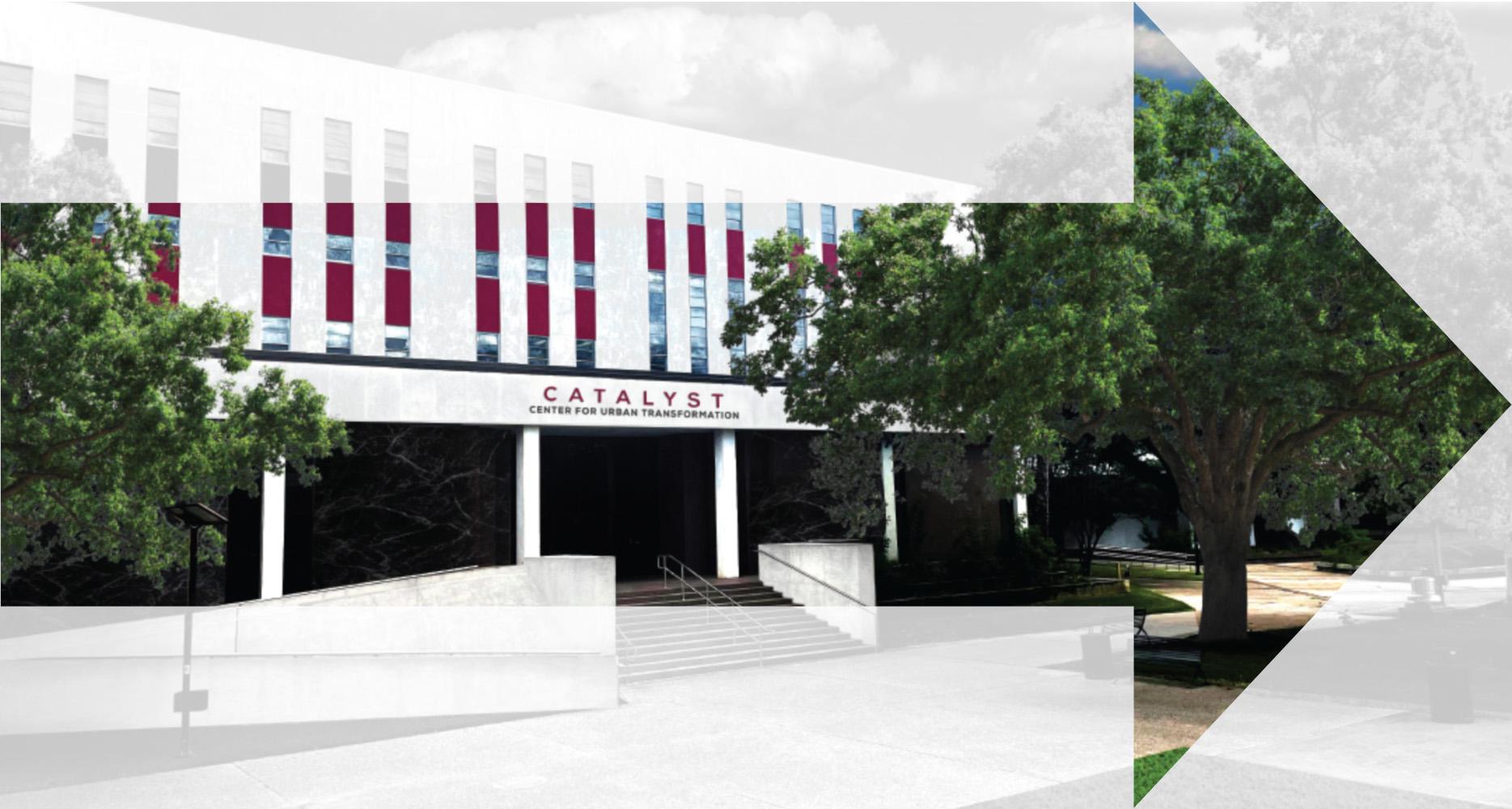

Texas Southern University Division of Research & Innovation 3100 Cleburne Street Hannah Hall, Suite 310 Houston, TX 77004
offfi
TSU's Future: "CATALYST" Center for Urban Transformation
713-313-4245 www.tsu.edu/research
ceofresearch@tsu.edu
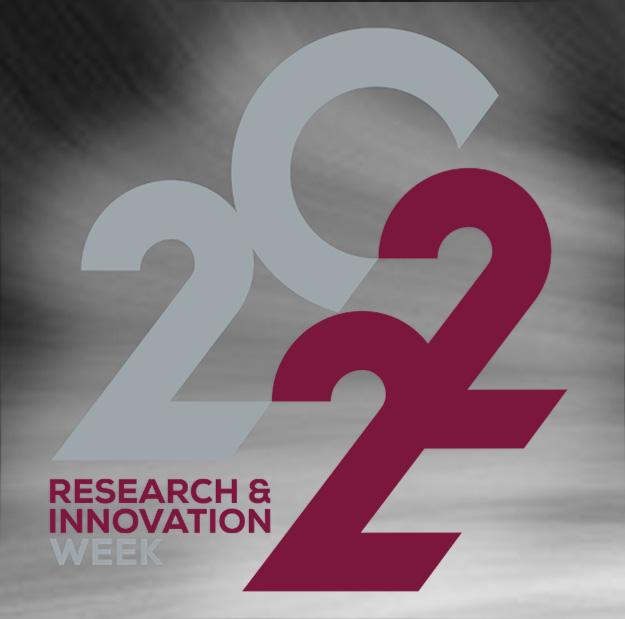









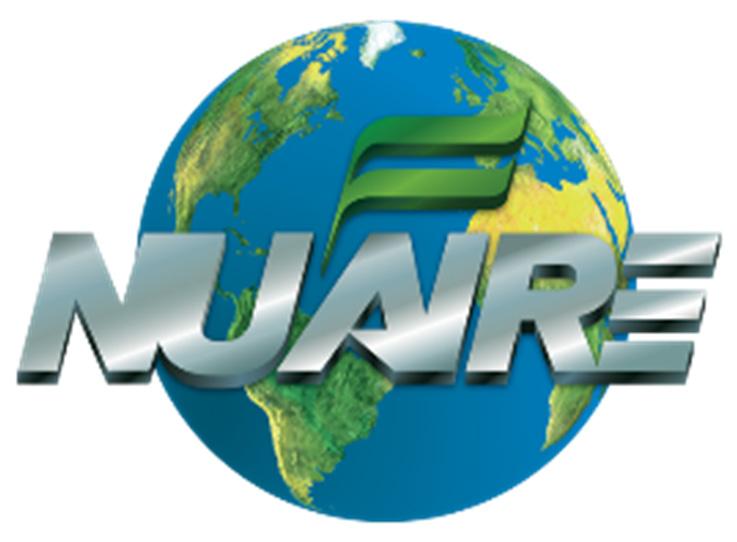



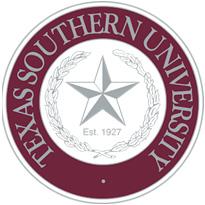
 Lesia L. Crumpton-Young, Ph.D., M.B.A. President
Lesia L. Crumpton-Young, Ph.D., M.B.A. President

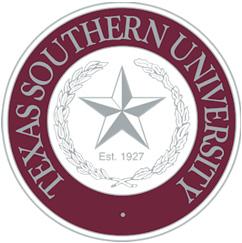
 Lillian B. Poats, Ed.D. Acting Provost and Senior Vice President for Academic Affairs
Lillian B. Poats, Ed.D. Acting Provost and Senior Vice President for Academic Affairs


 Omonike A. Olaleye, Ph.D., MPH. Senior Associate Vice President for Research and Innovation
Omonike A. Olaleye, Ph.D., MPH. Senior Associate Vice President for Research and Innovation




















 L.H.O. Spearman Technology Building
L.H.O. Spearman Technology Building











































 Barbara Jordan-Mickey Leland School of Public Affairs
Barbara Jordan-Mickey Leland School of Public Affairs




































